The Circuitry of Joyce J. Scott (Joyce Scott): A Group Exhibition of Collaboration and Innovation
Visionary artist Joyce J. Scott works in a multitude of media and has had a profound influence on various communities of artists through her beaded sculpture, art jewelry, and more. Scott shapes her work through connections formed bead-by-bead, piece-by-piece, and thread-by thread. Circuitry, for Scott and this exhibition, is approached in four ways: through the construction of her pieces; as connection to the past; as hard-wiring to the national and global present; and finally, via Scott’s network of artists and friends. Scott and the other artists included in this exhibition push and expand the potentiality of what sculpture and wearable art can be, where they intersect, and how they affect each other. This exhibition forms a dialogue between ten of Scott’s exemplary beaded neck pieces placed in conversation with beaded, fiber and mixed media works by Sonya Clark, Oletha DeVane, Eve France, William Rhodes, and Teresa Sullivan.
Using beads and threads, Scott physically stitches together ideas and figures together within each piece to form a cohesive whole. Essentially, these connectors function as the veins that branch off and hold everything together within the system of one work. As she draws with her peyote-stitch, the webs between imagery act as dynamic stokes. In a similar approach to interwoven and intersected imagery, DeVane, Sullivan, and Rhodes use their respective media to represent personal histories, idols and other concepts in their own work.
About Joyce J. Scott
Scott, recipient of a MacArthur Fellowship in 2016, is a printmaker, weaver, sculptor, performance artist, and educator who lives and works in Baltimore, Maryland. Scott received her BFA from the Maryland Institute College of Art and MFA from the Instituto Allende in San Miguel de Allende, Guanajuato, Mexico. Her esteemed work is in private and public collections including: the Baltimore Museum of Art, Mint Museum of Craft + Design, Philadelphia Museum of Art, and the Smithsonian American Art Museum. Scott was featured in the MESSAGES episode of Craft in America.
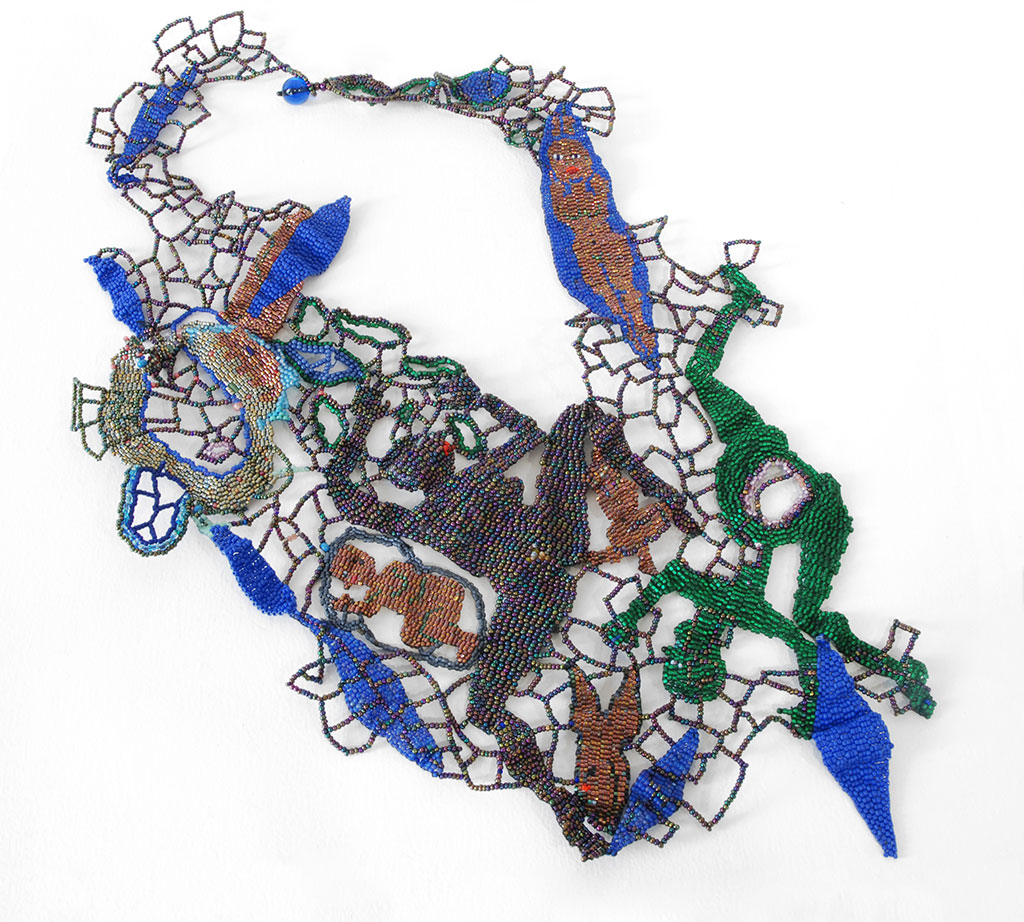
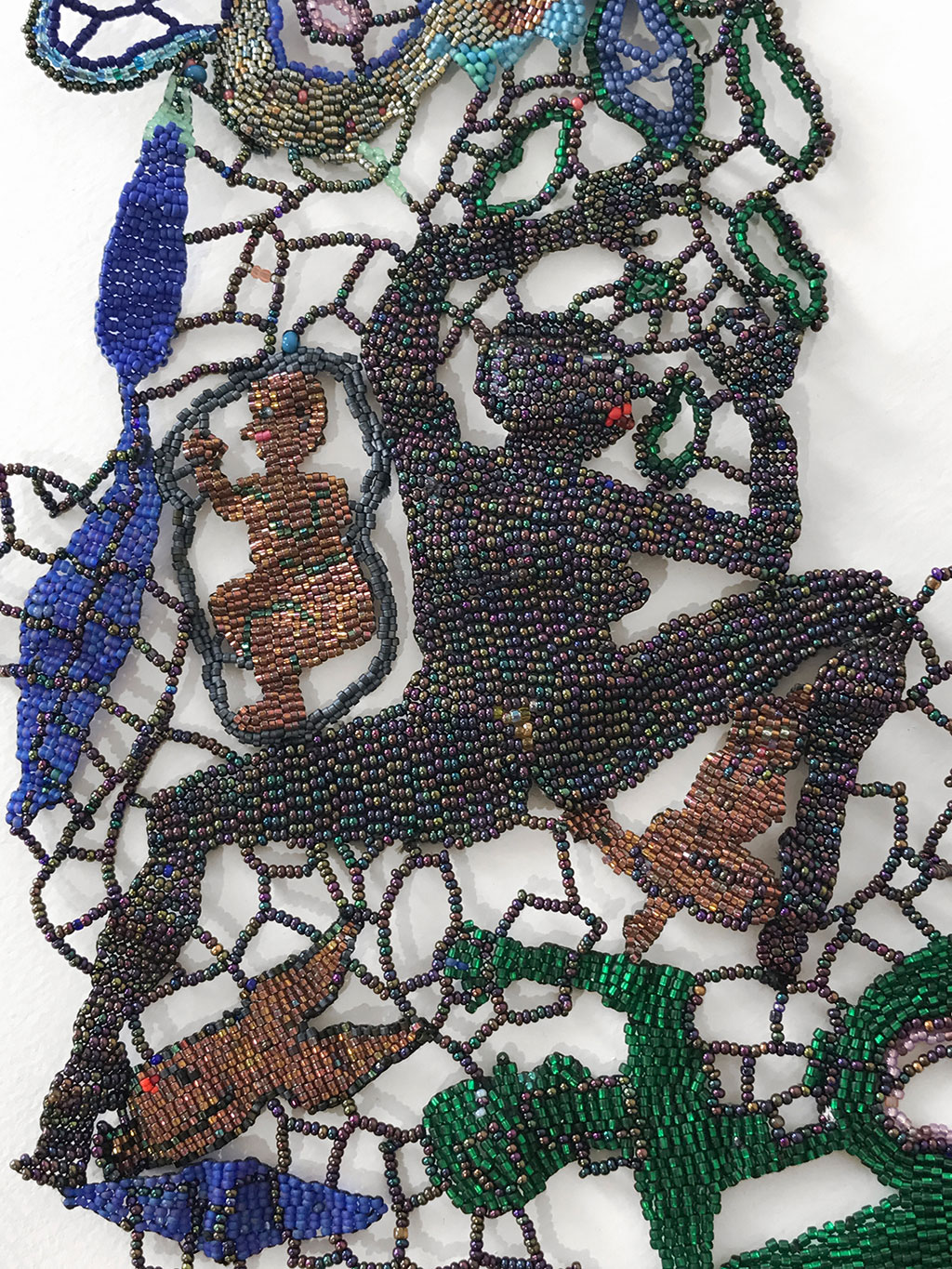
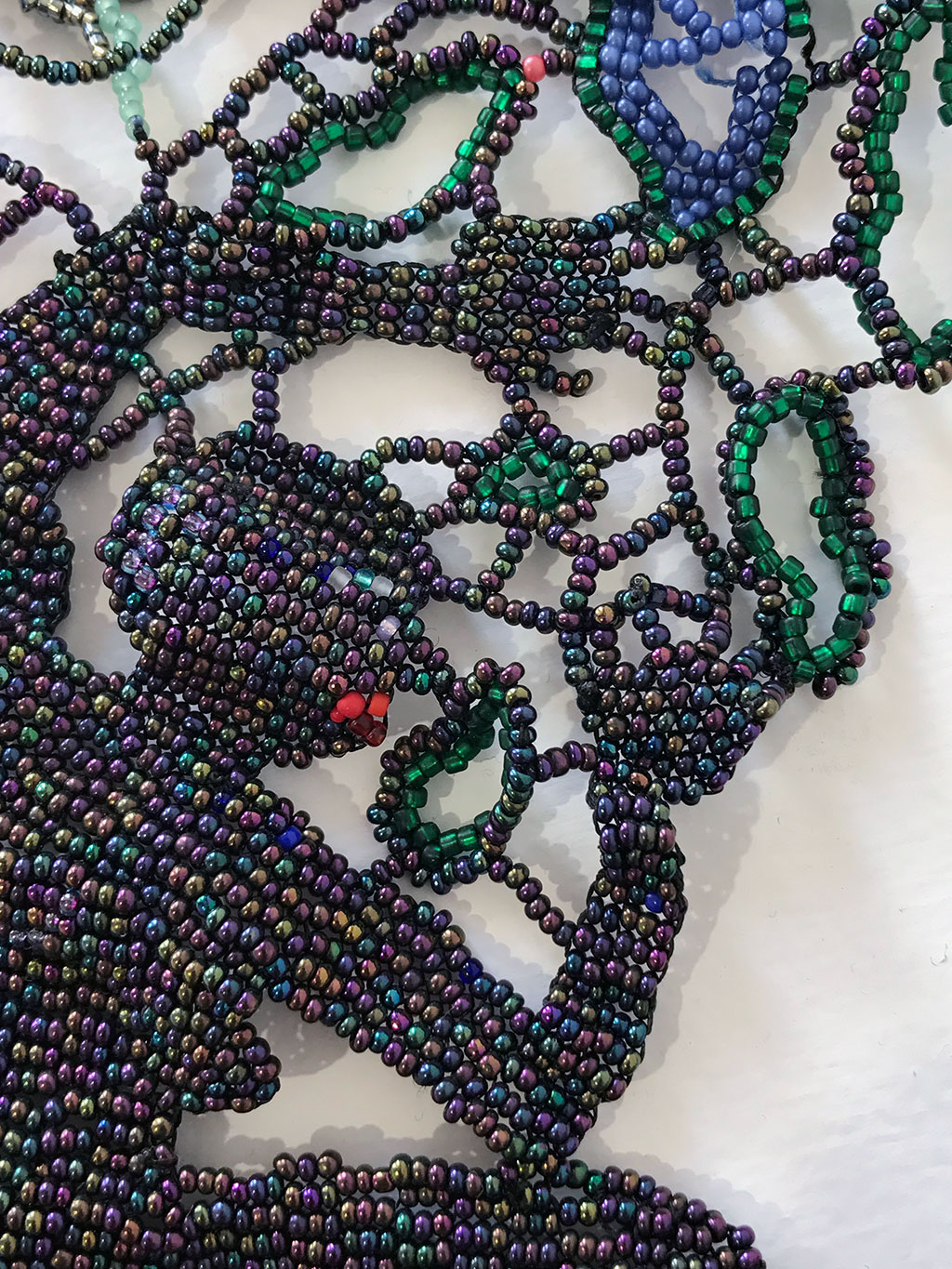
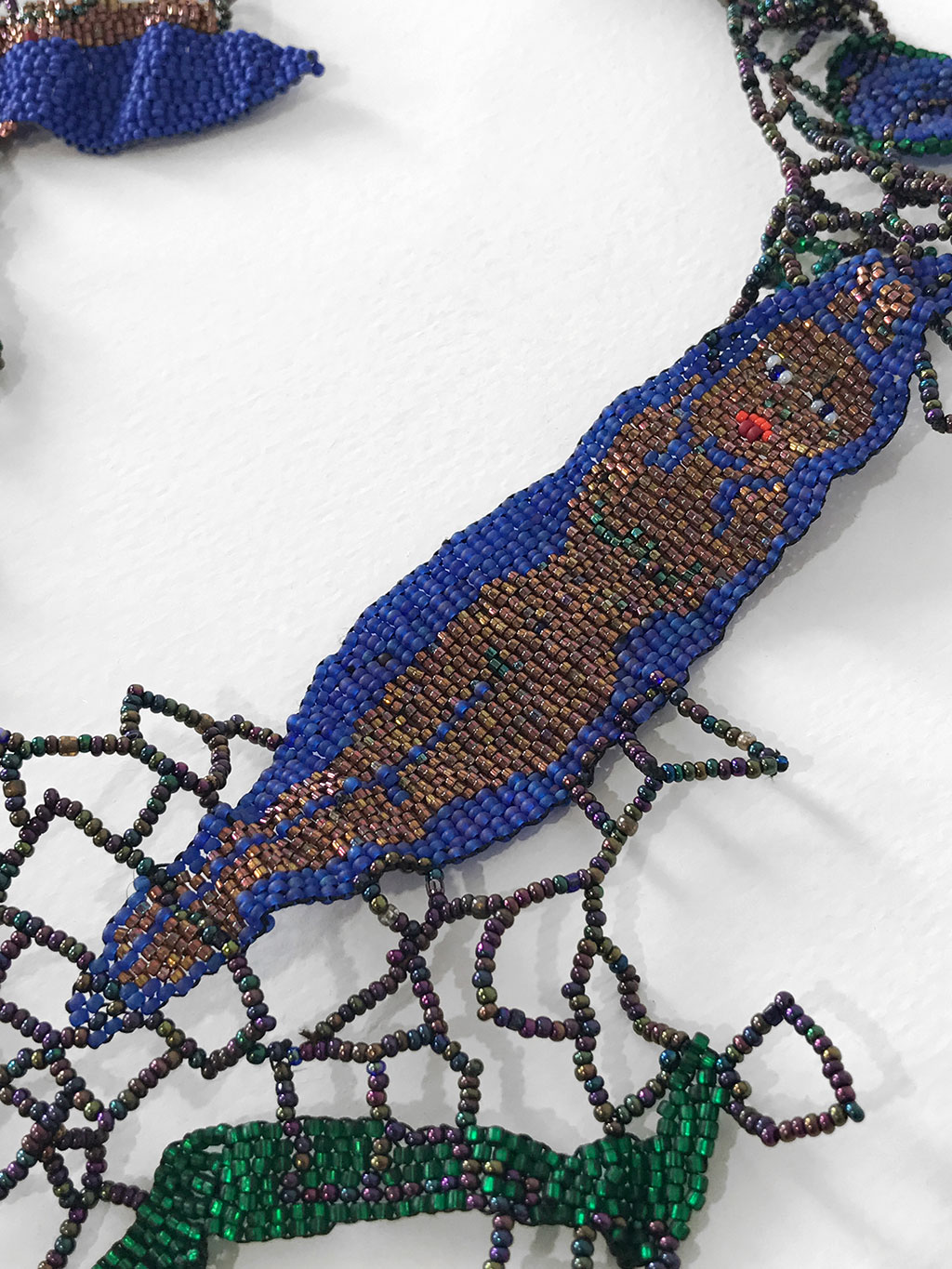
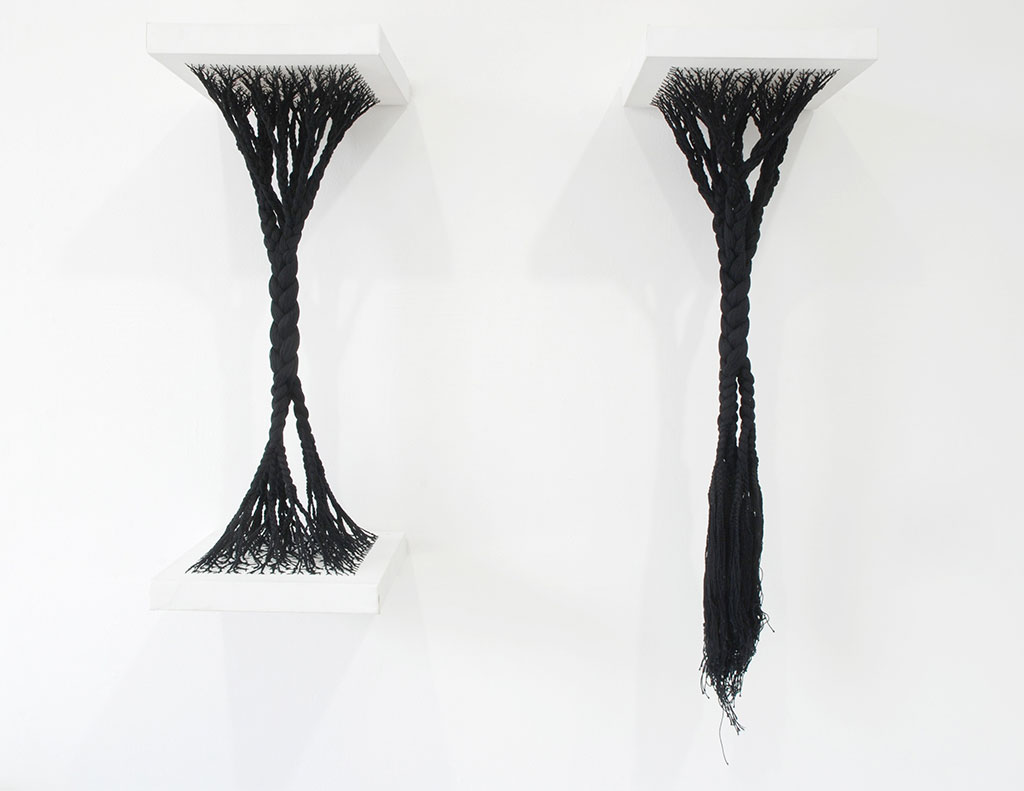
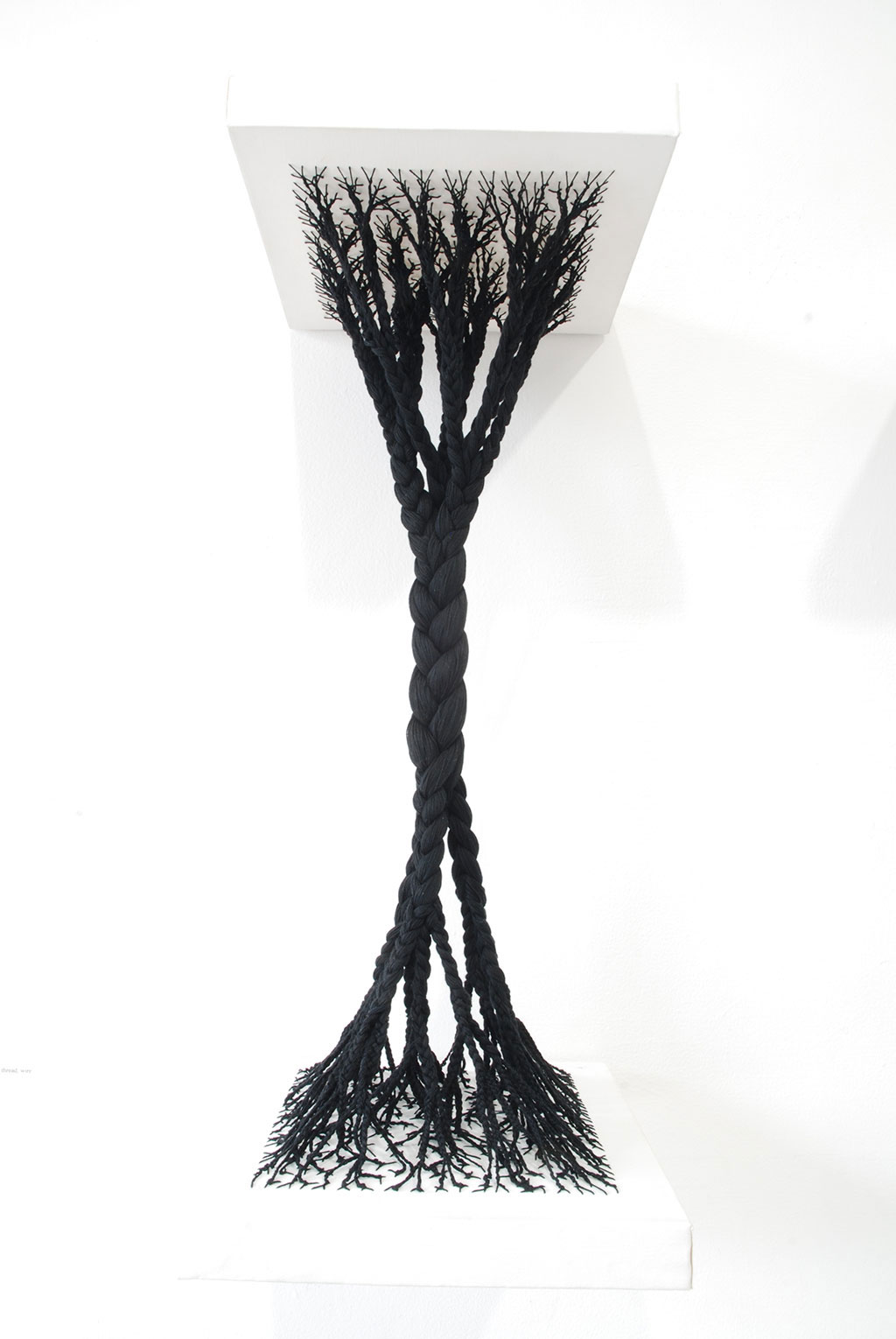
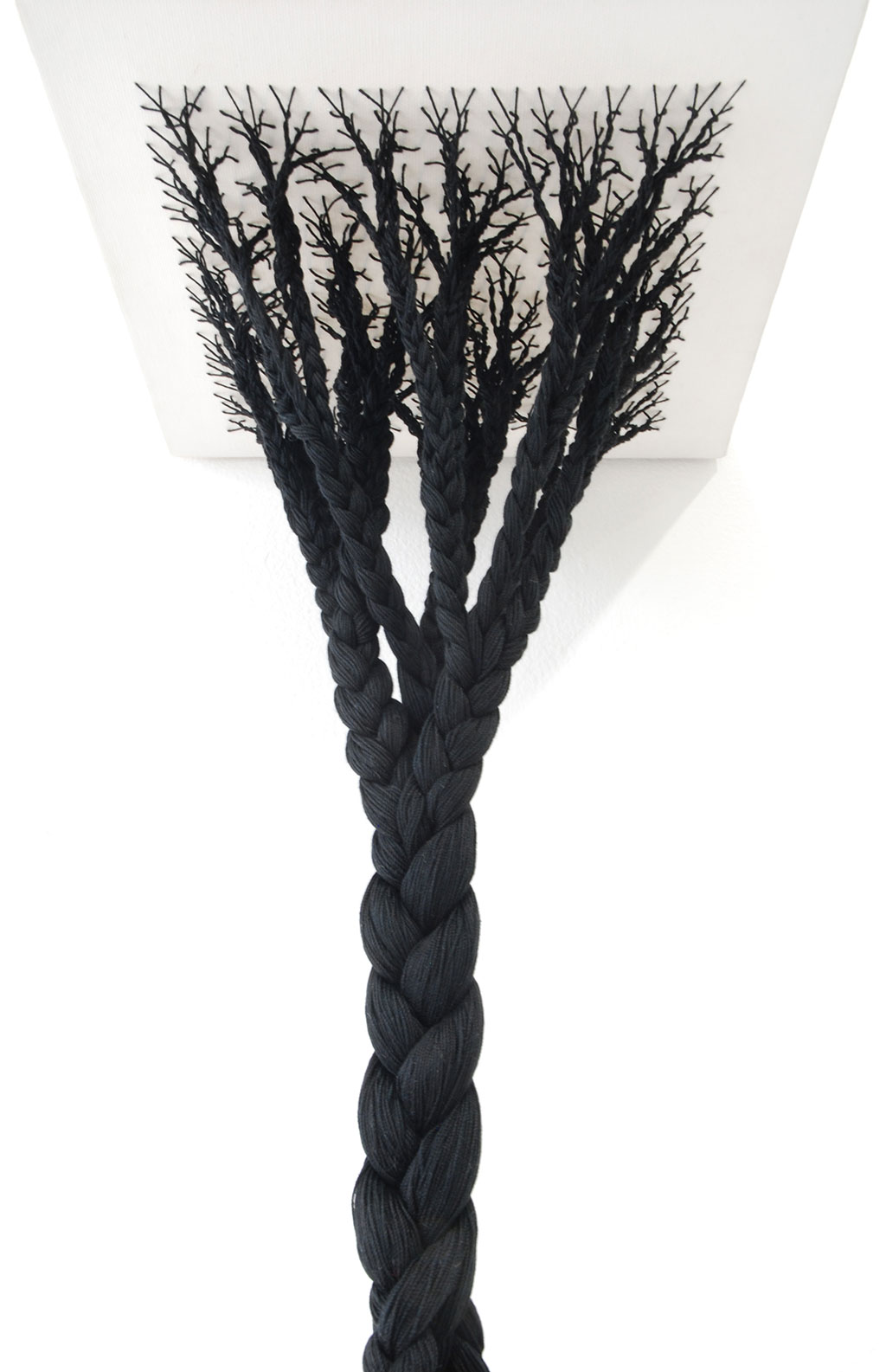

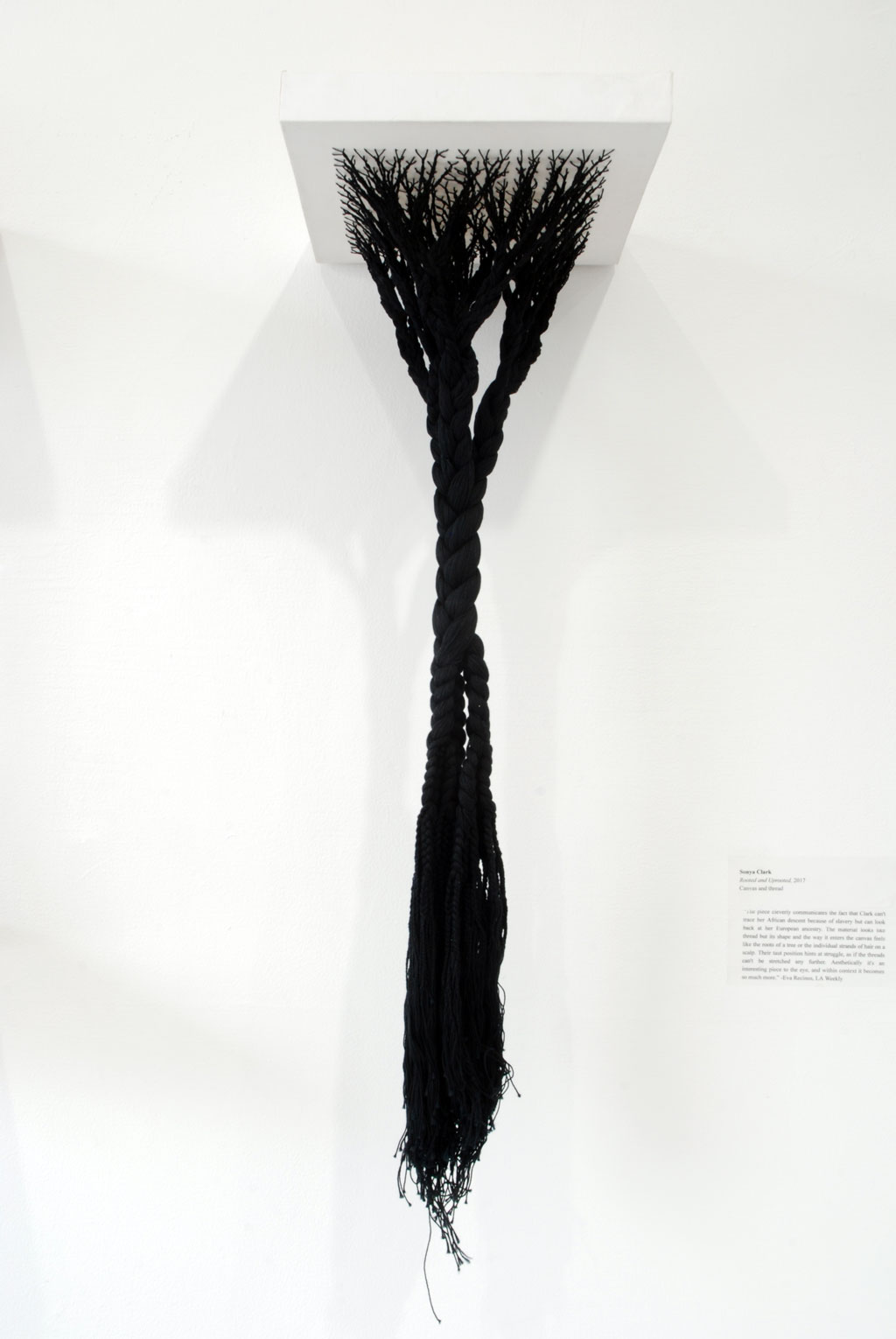
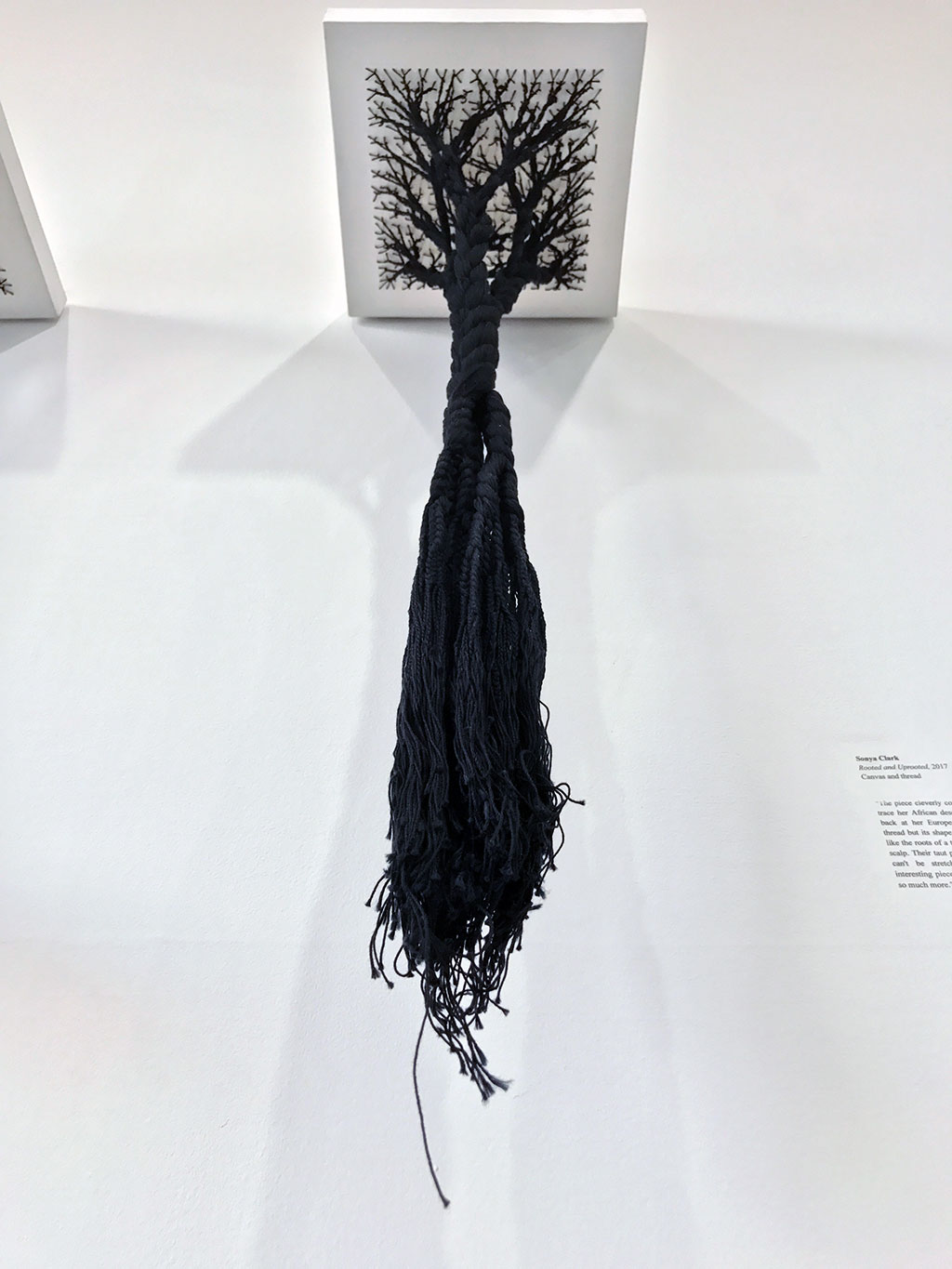
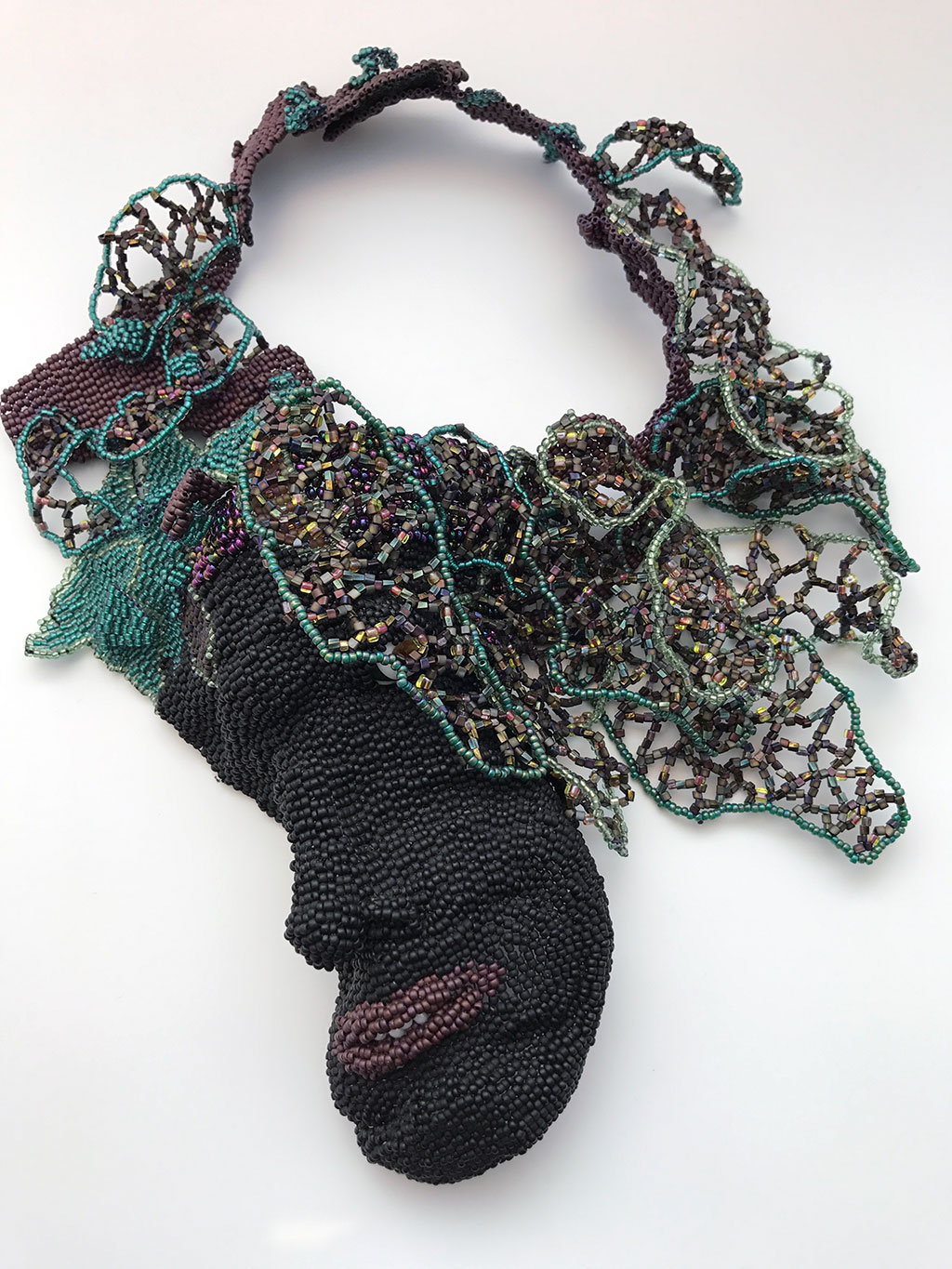
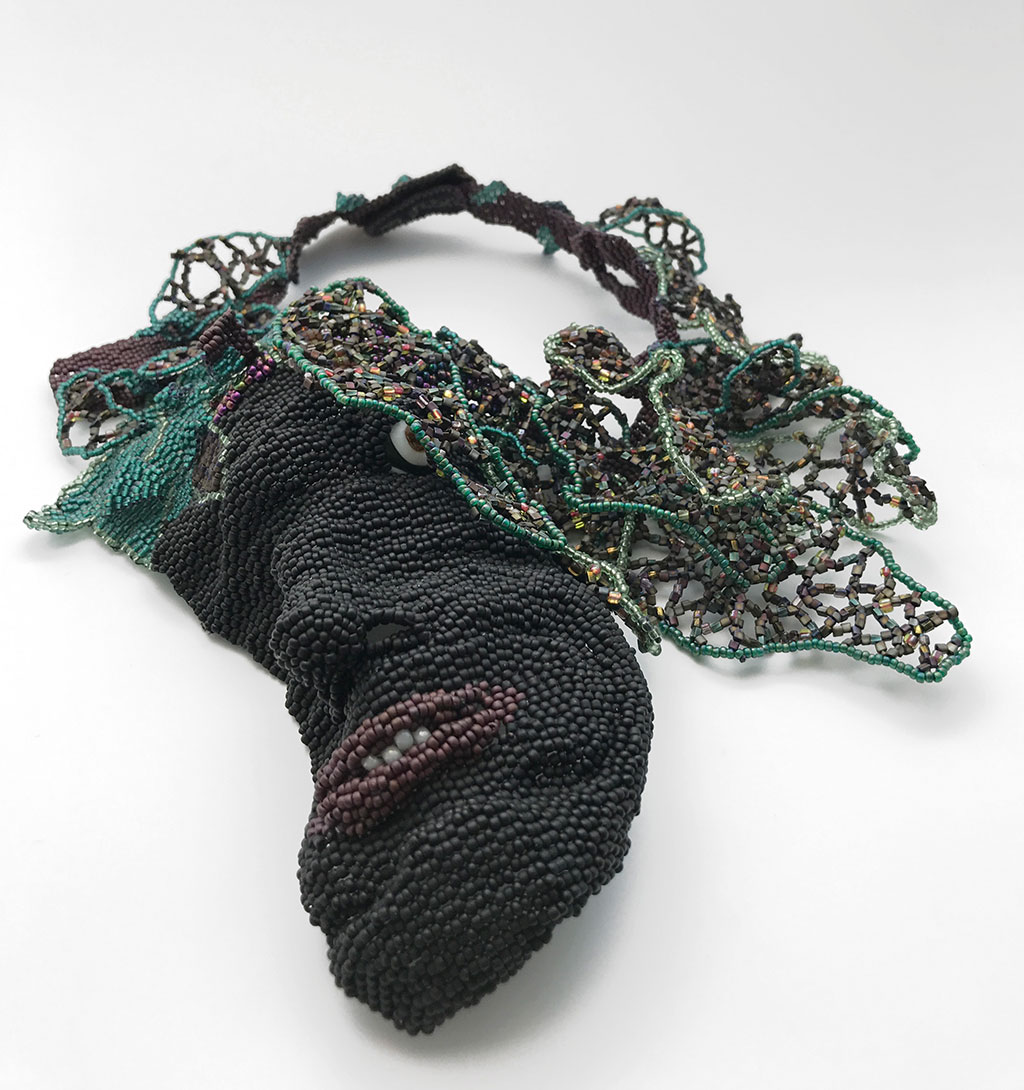
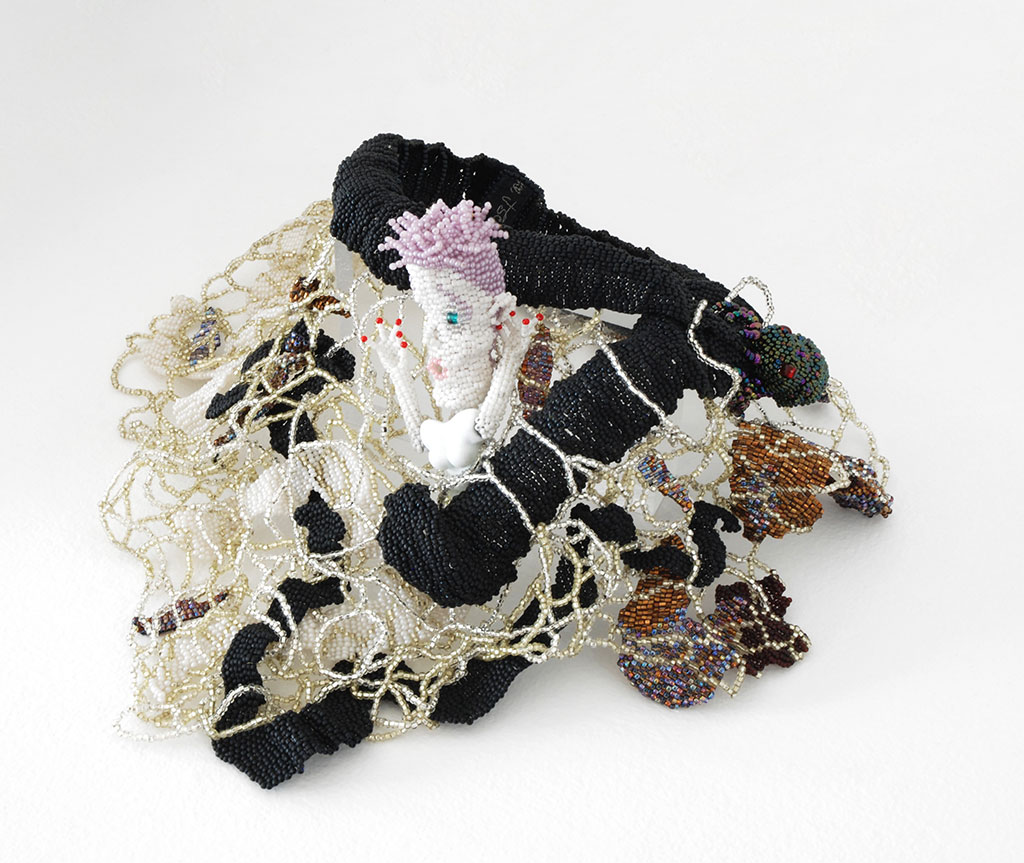
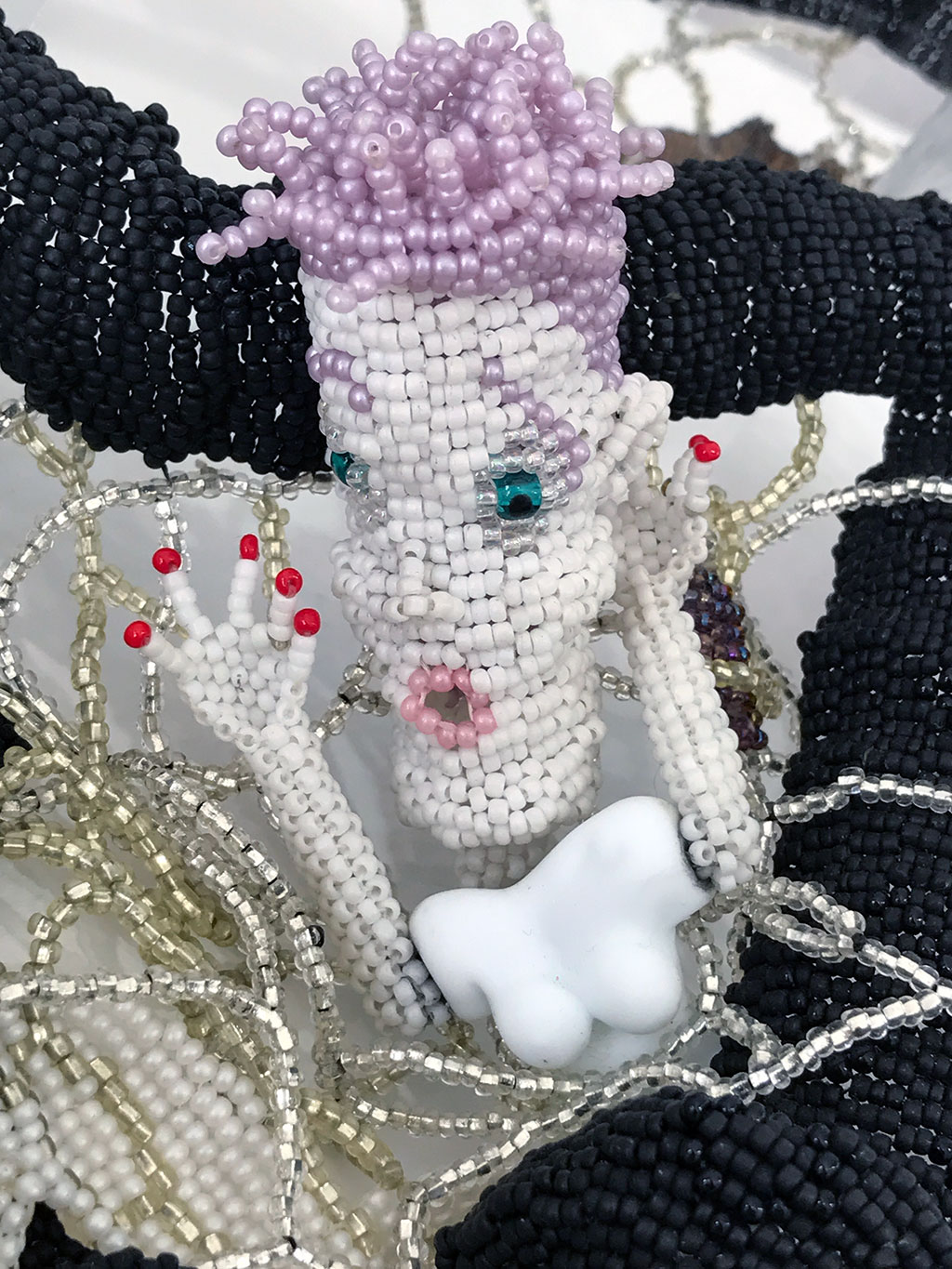


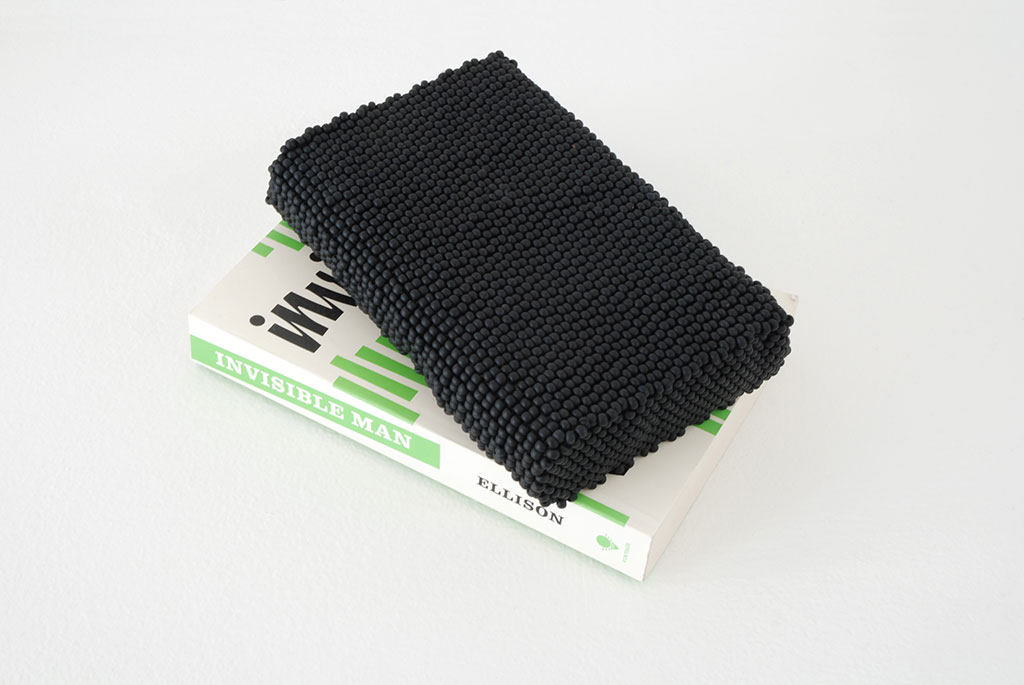
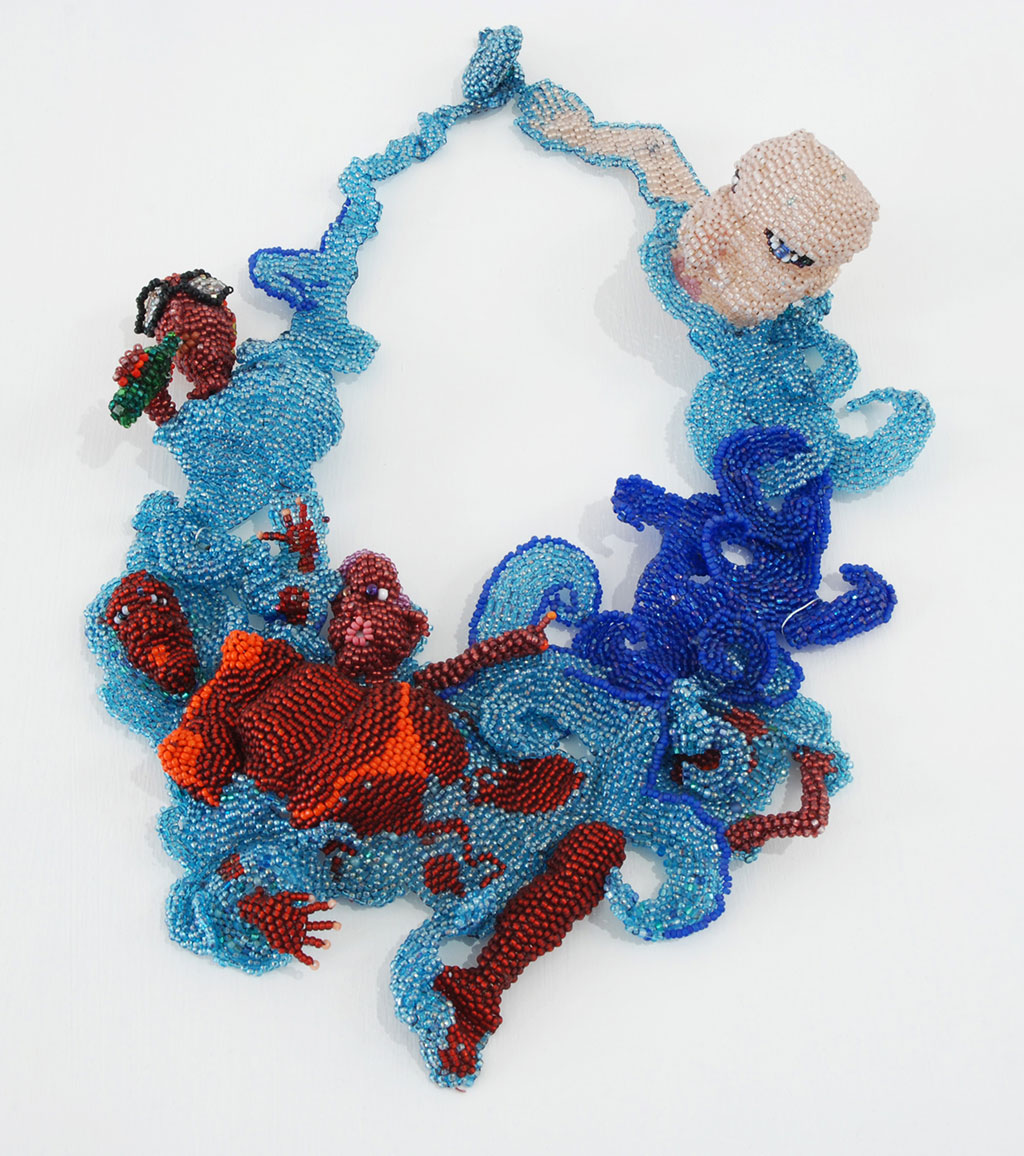
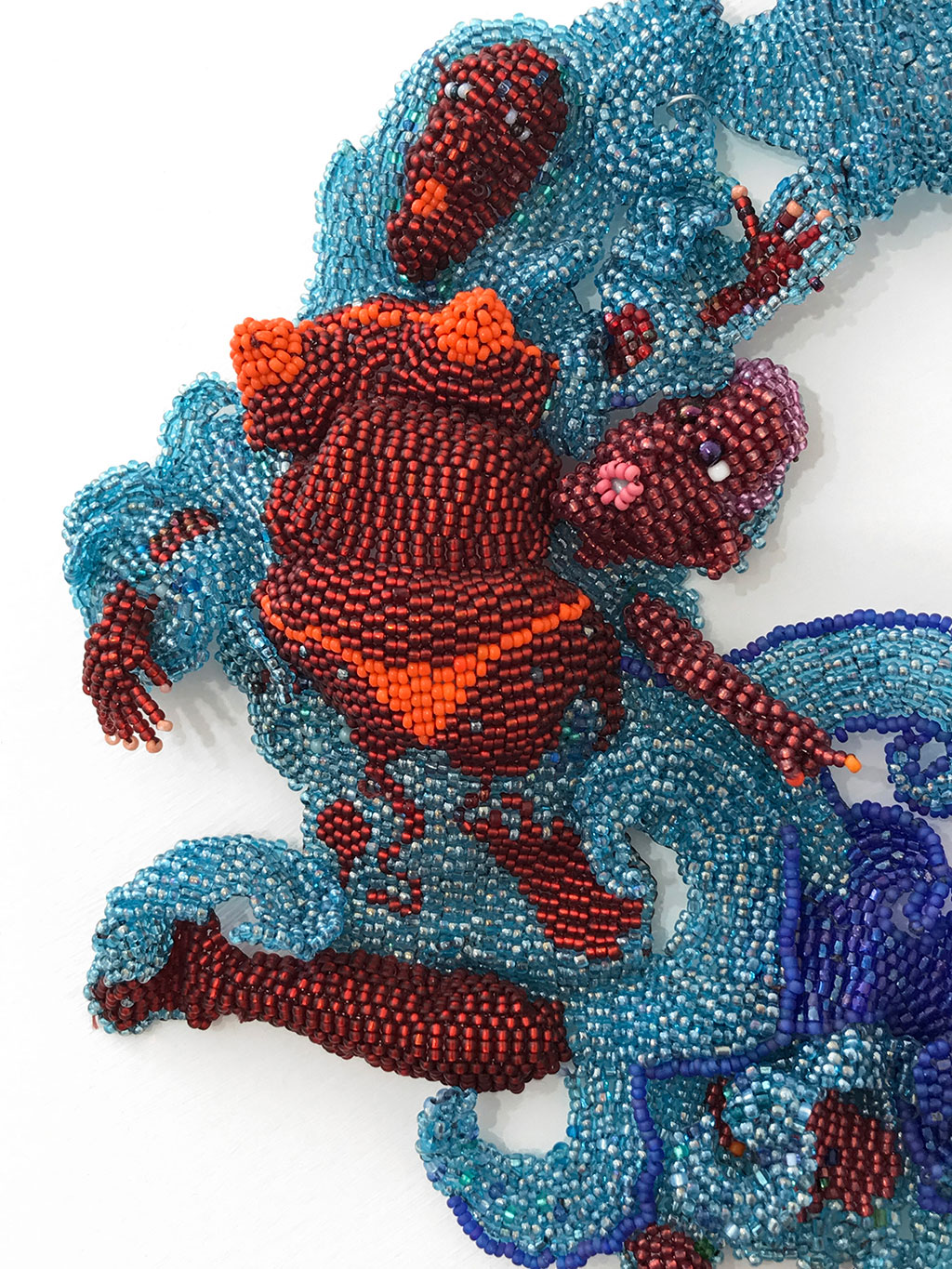
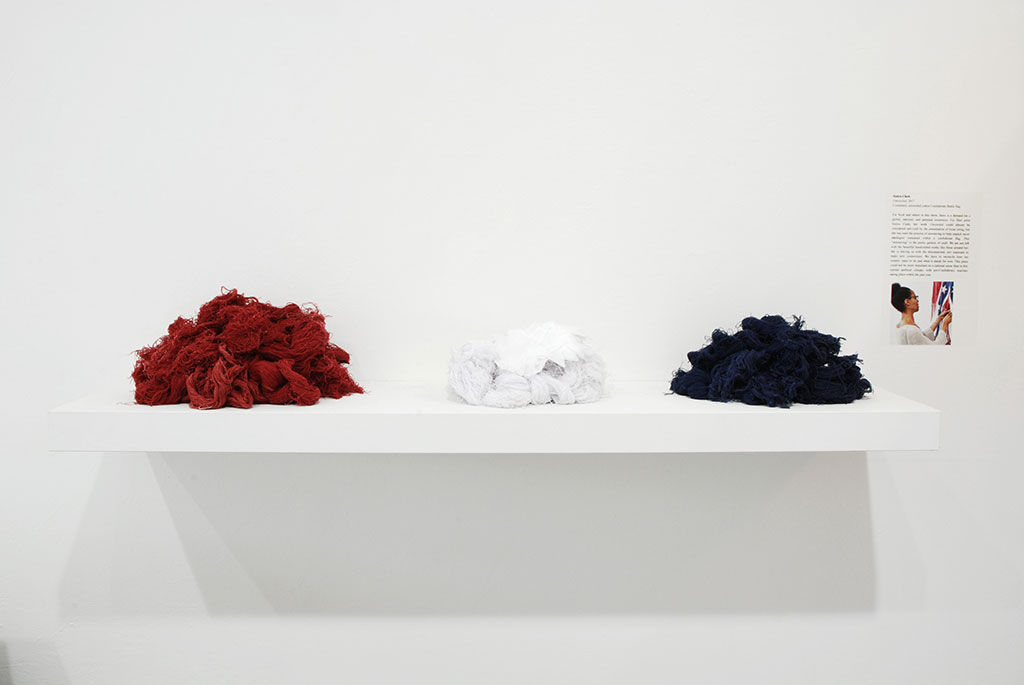
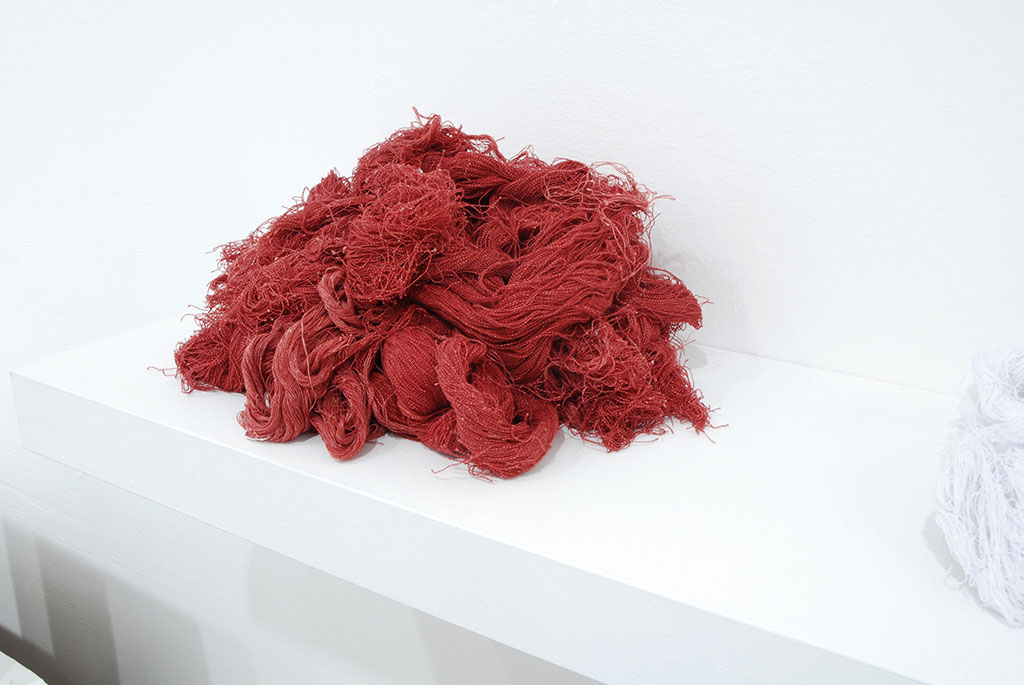
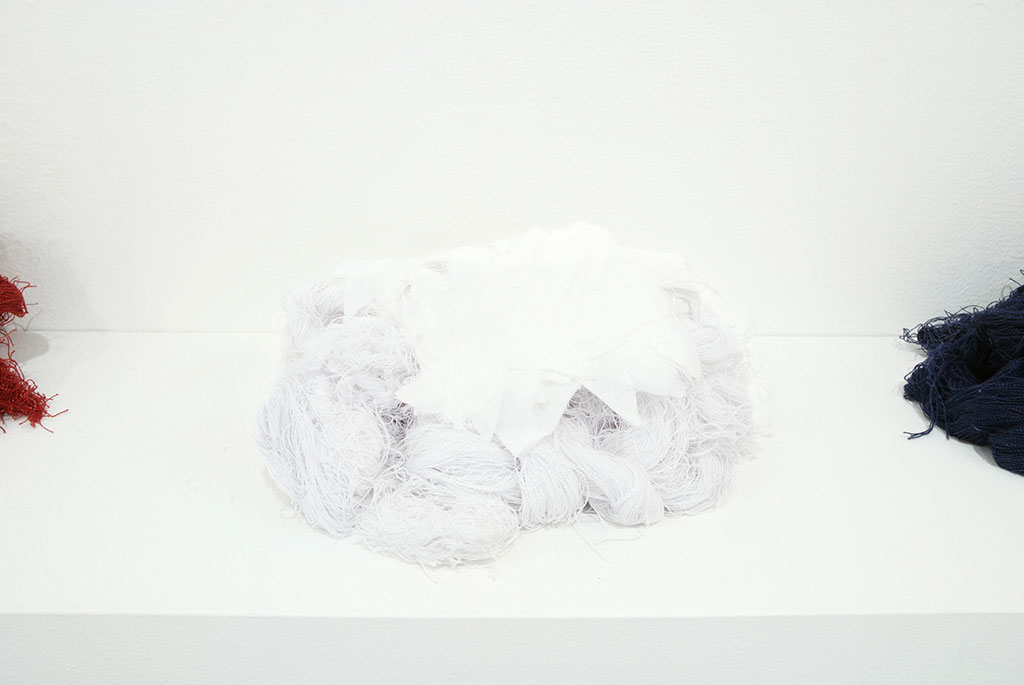
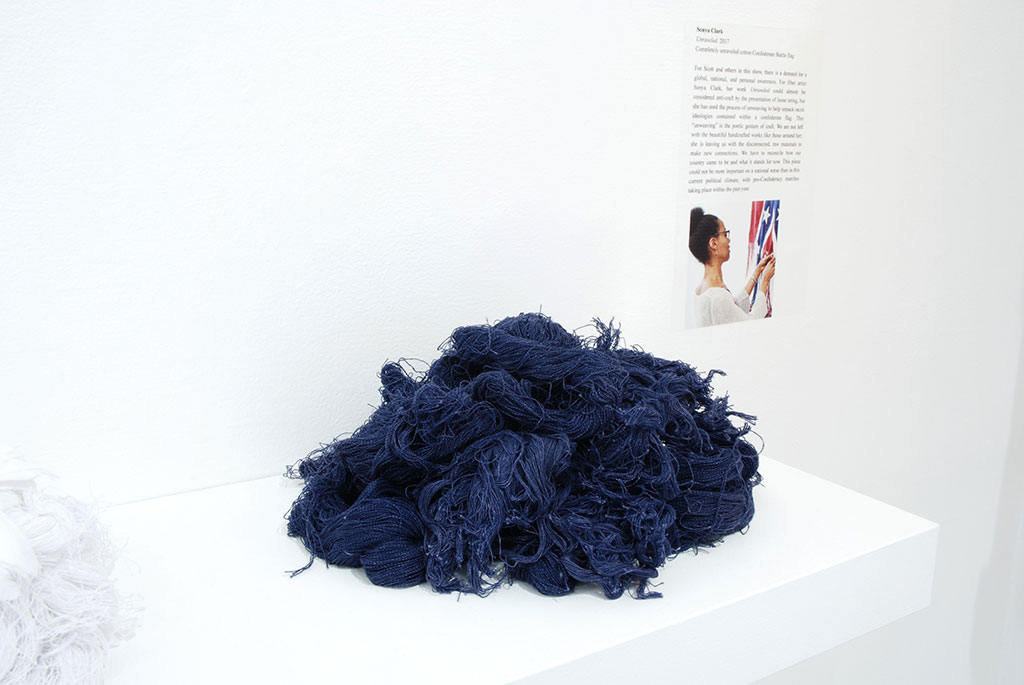
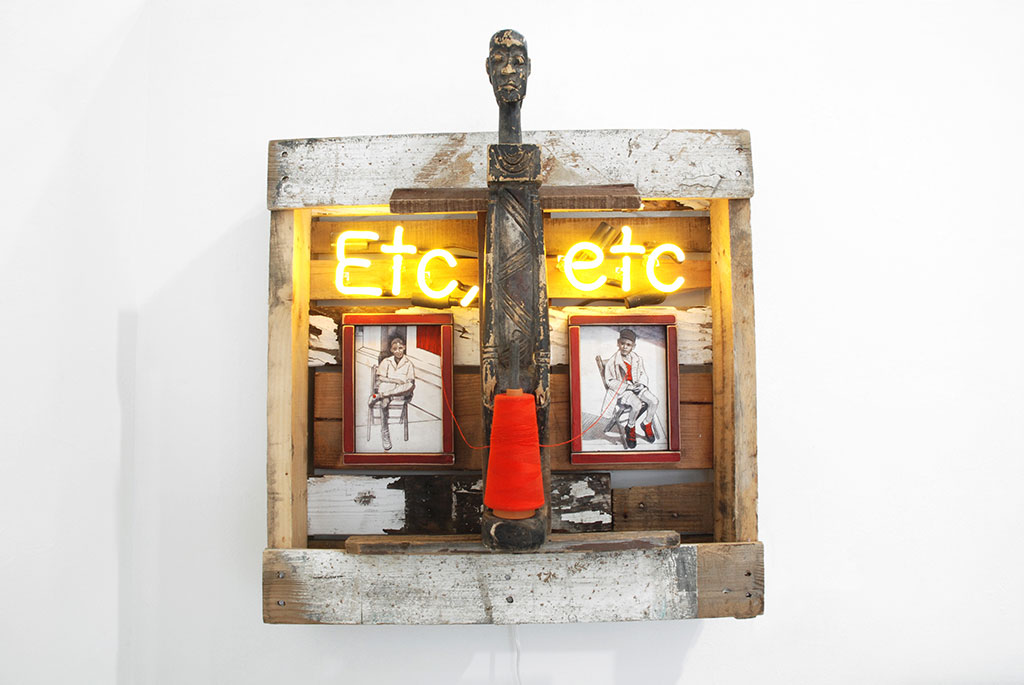
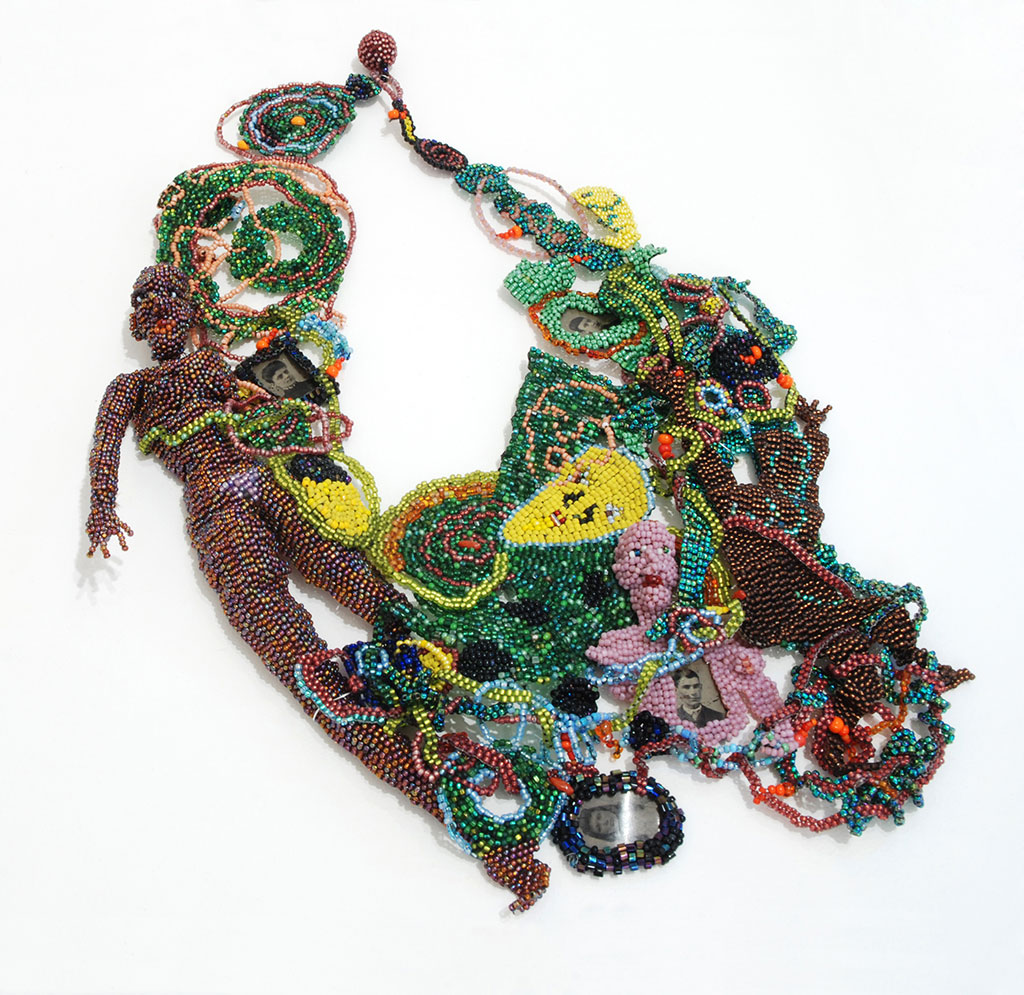
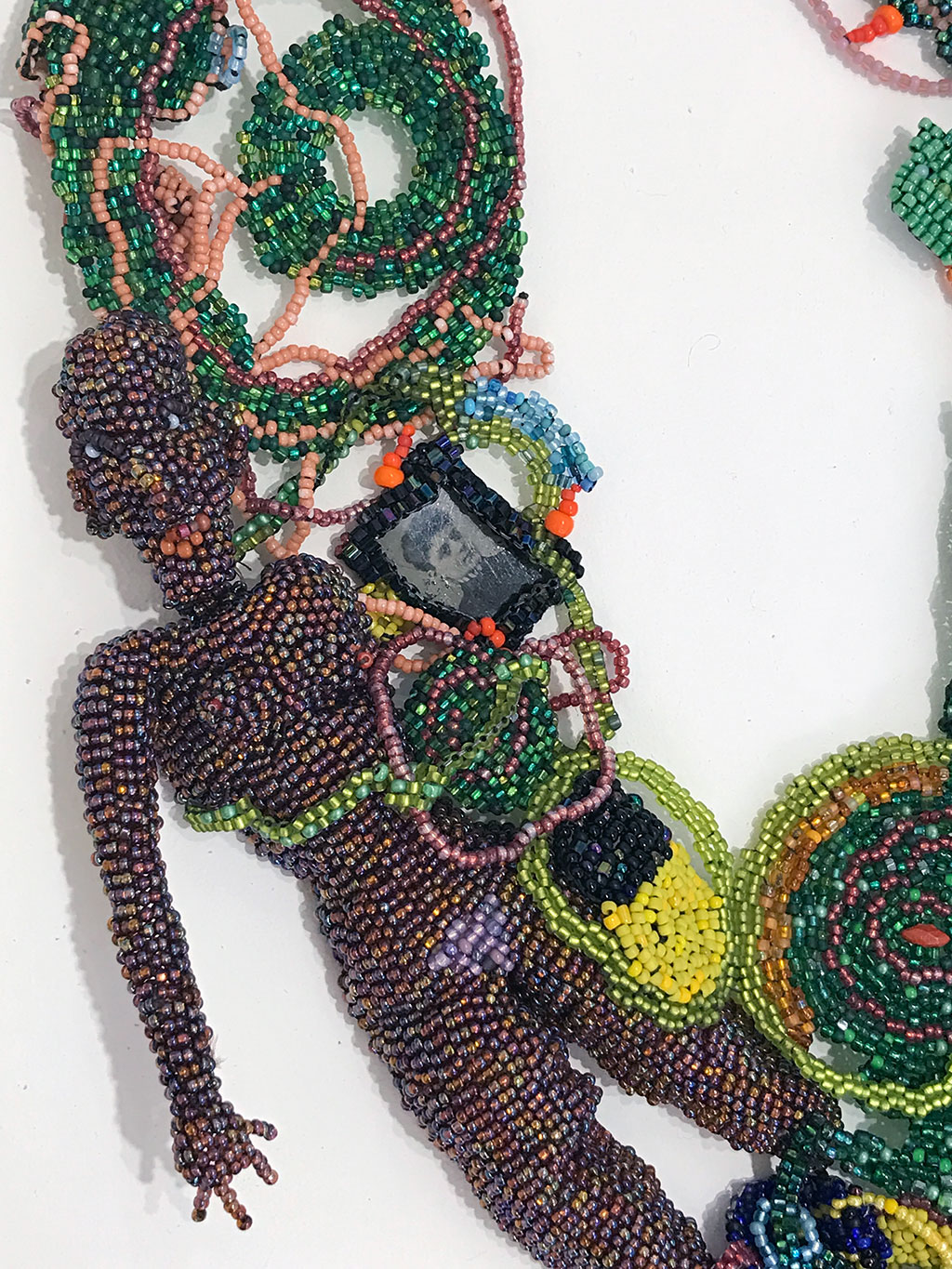
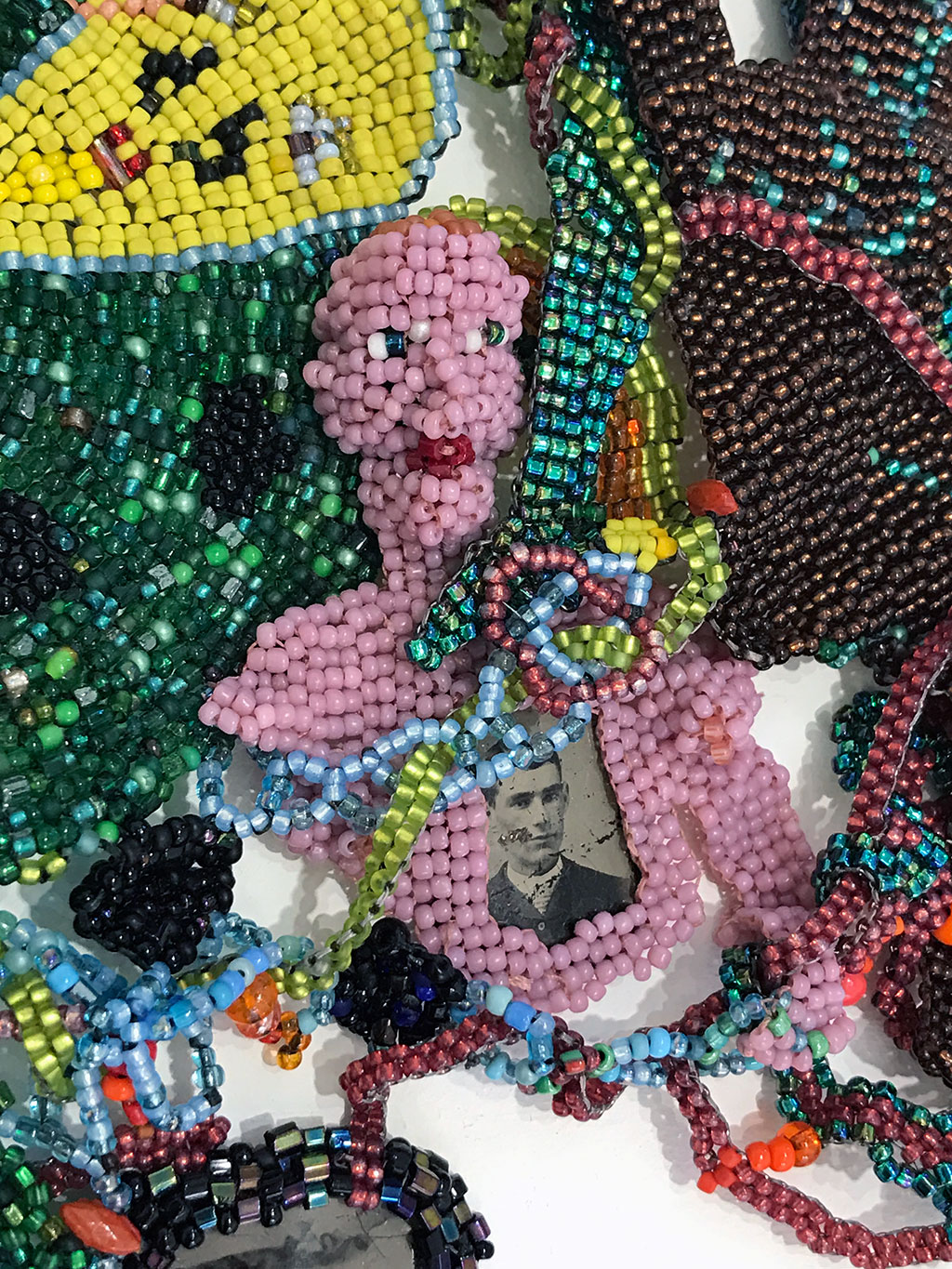
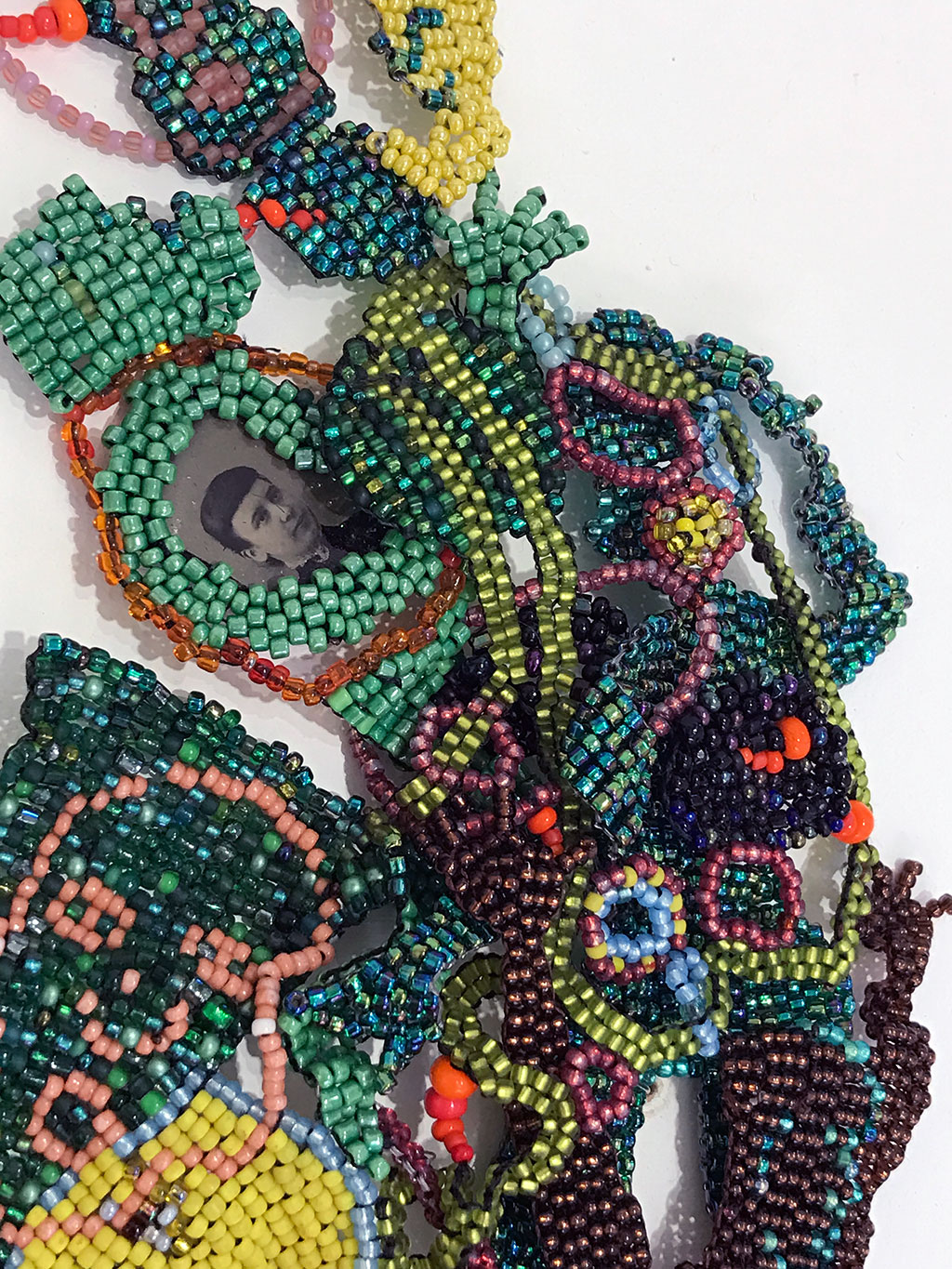
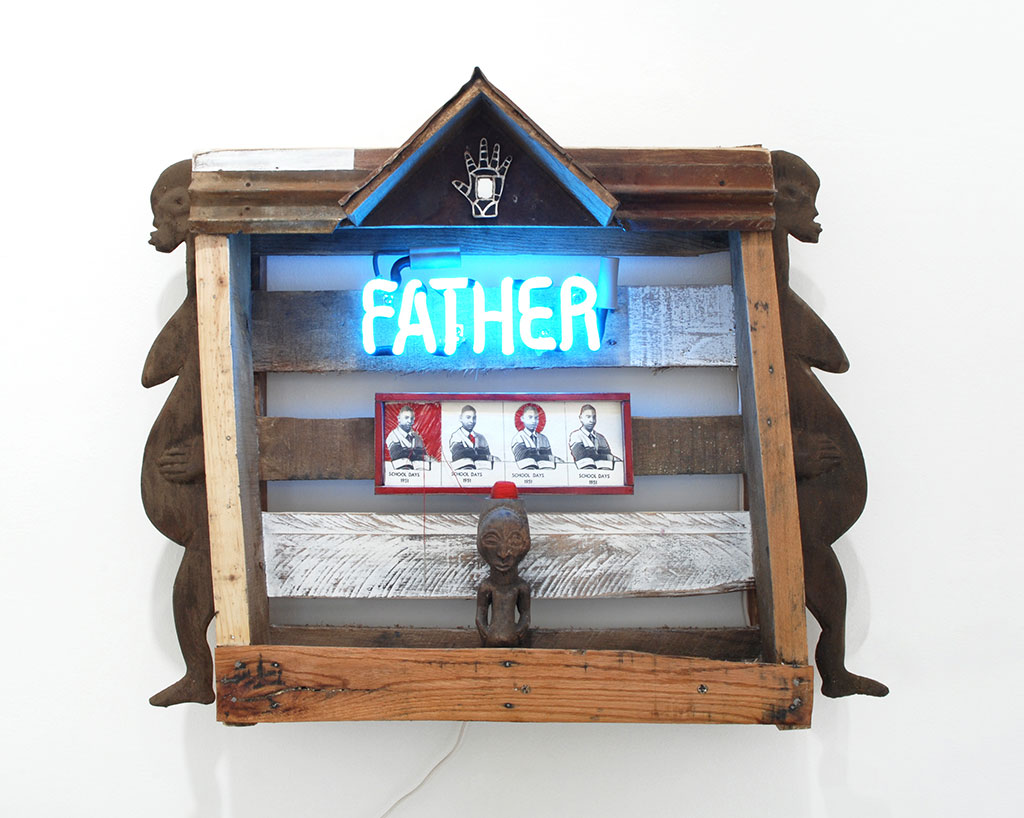
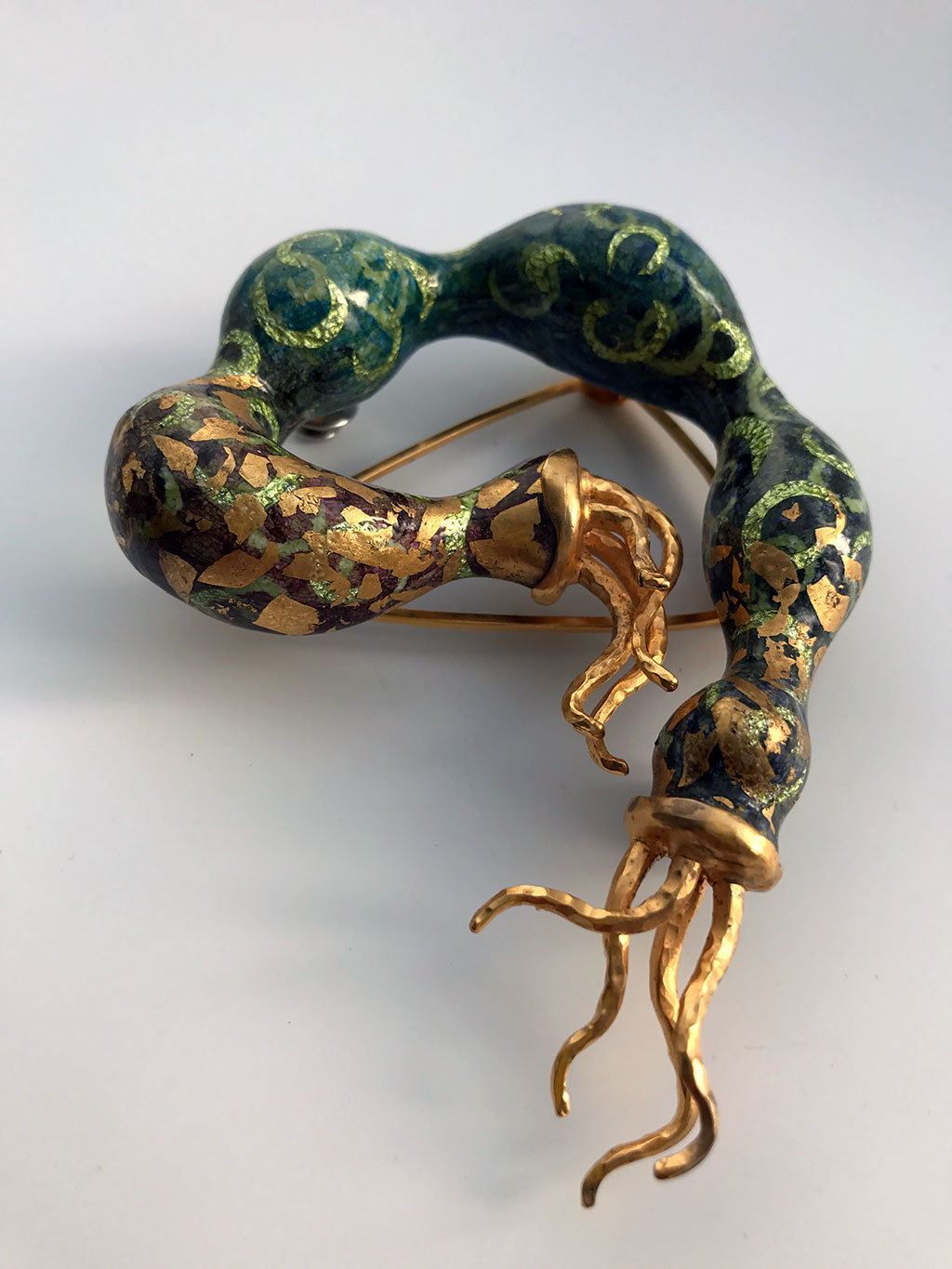

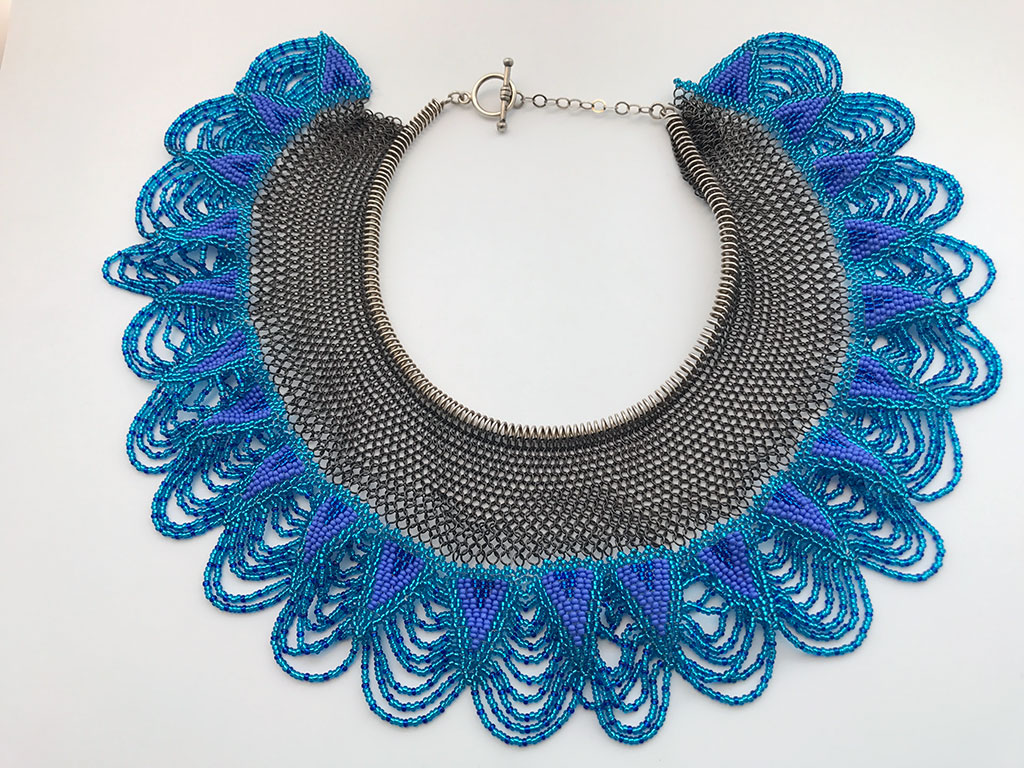
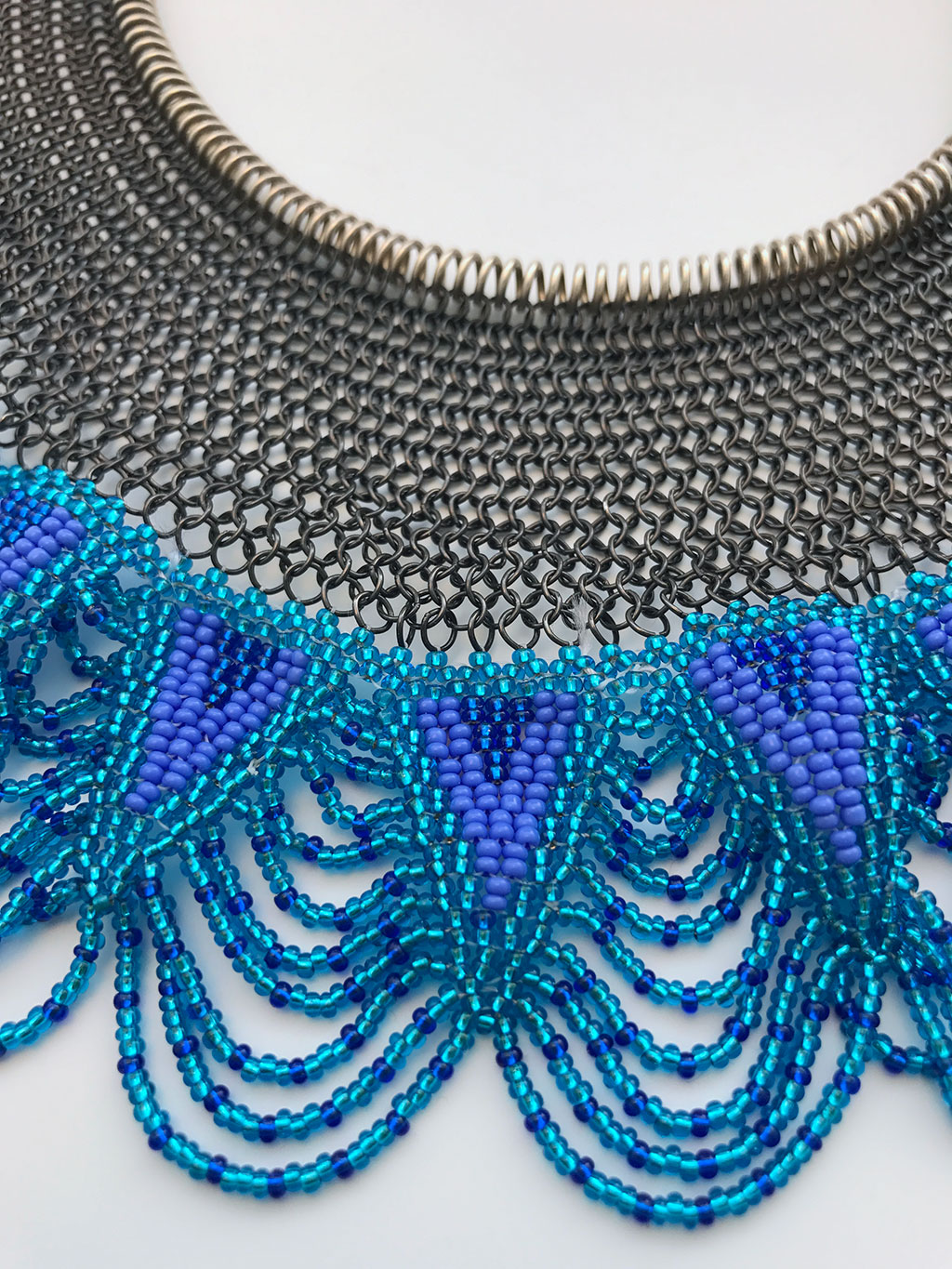

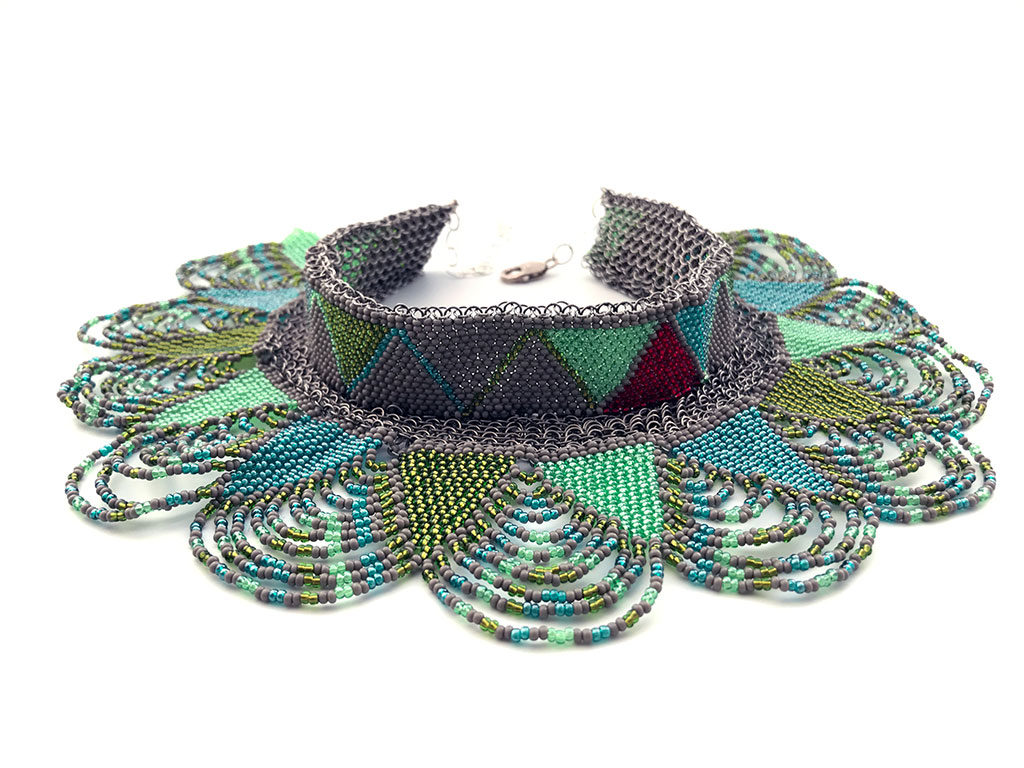
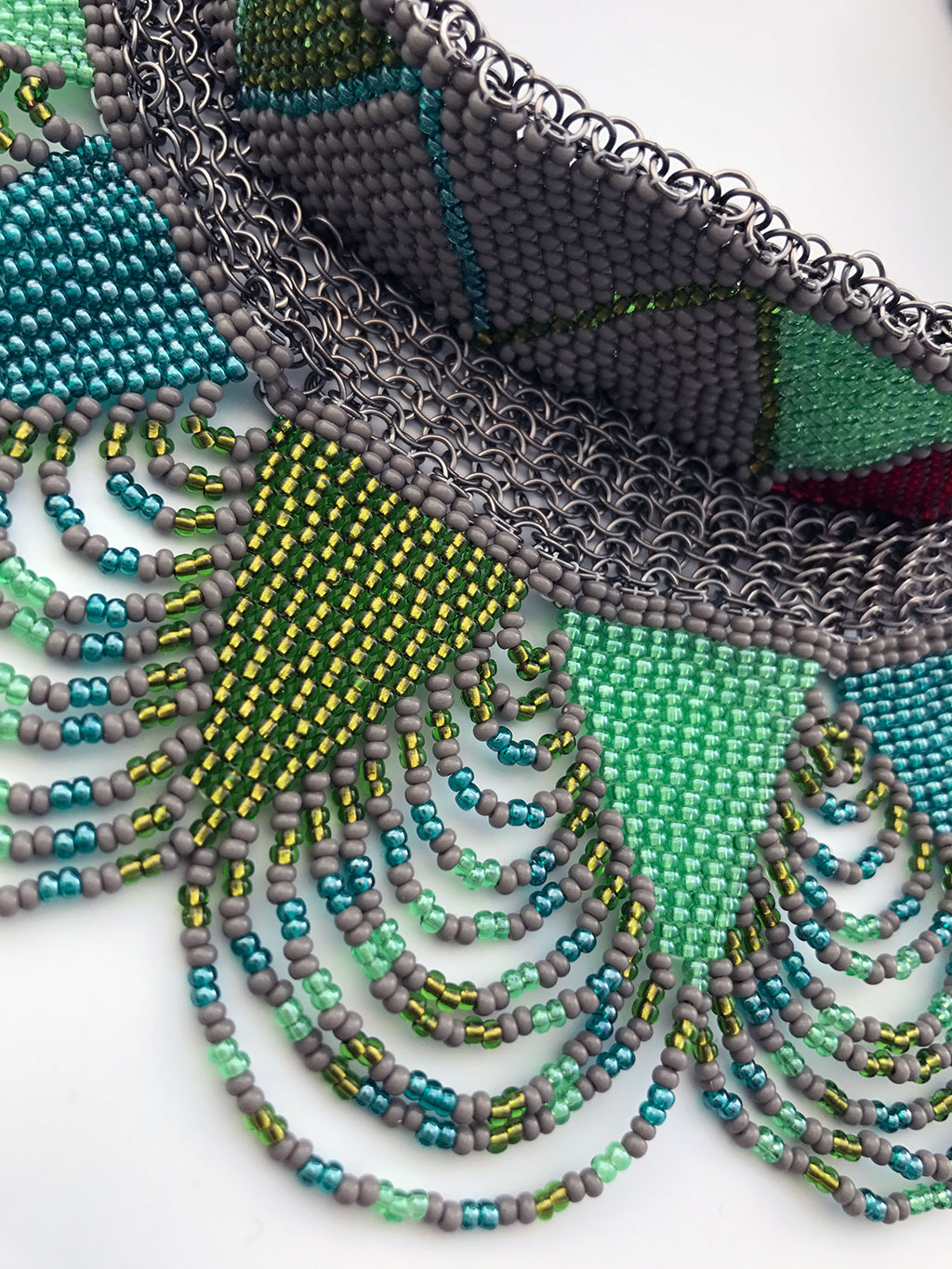
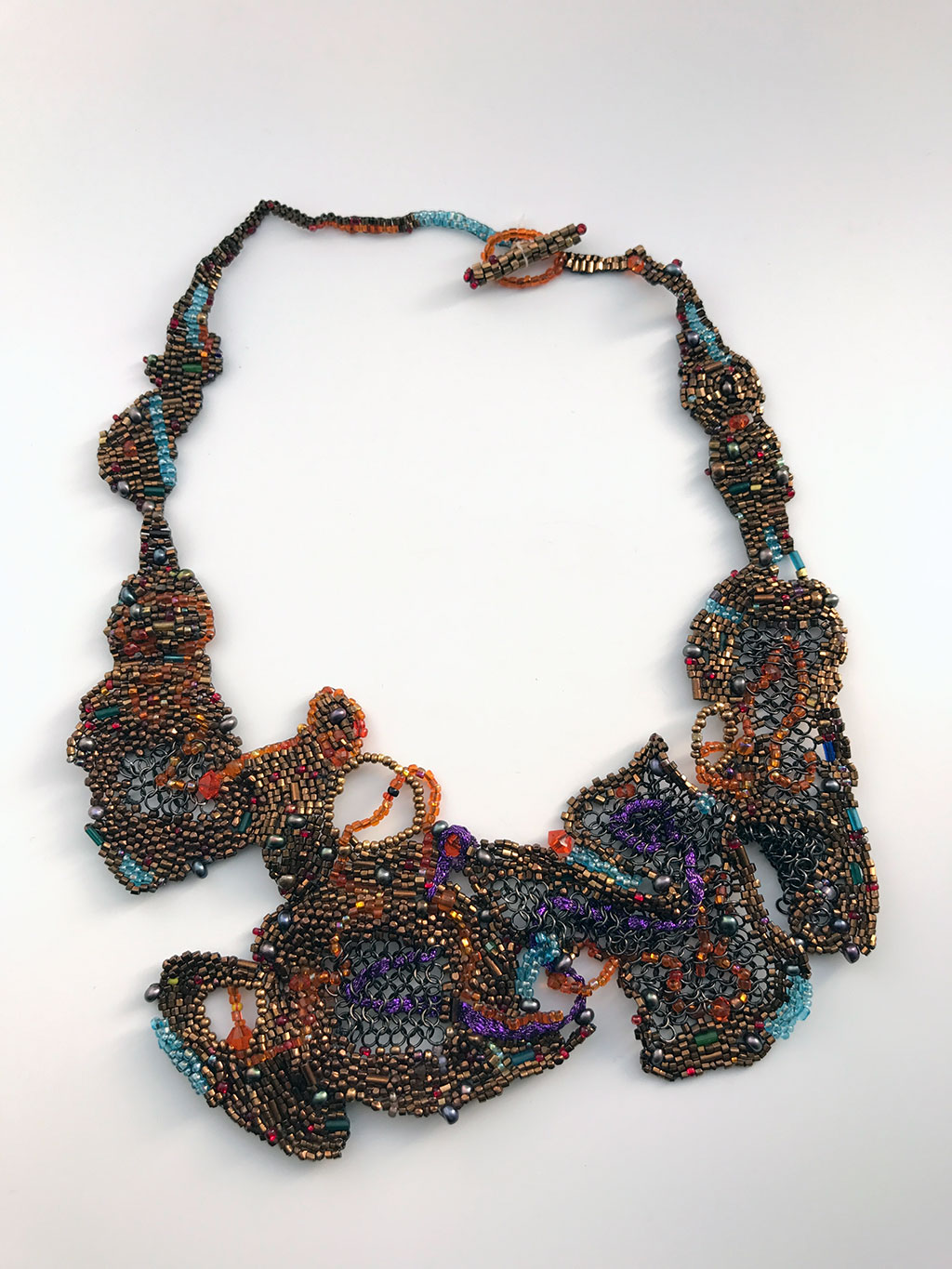
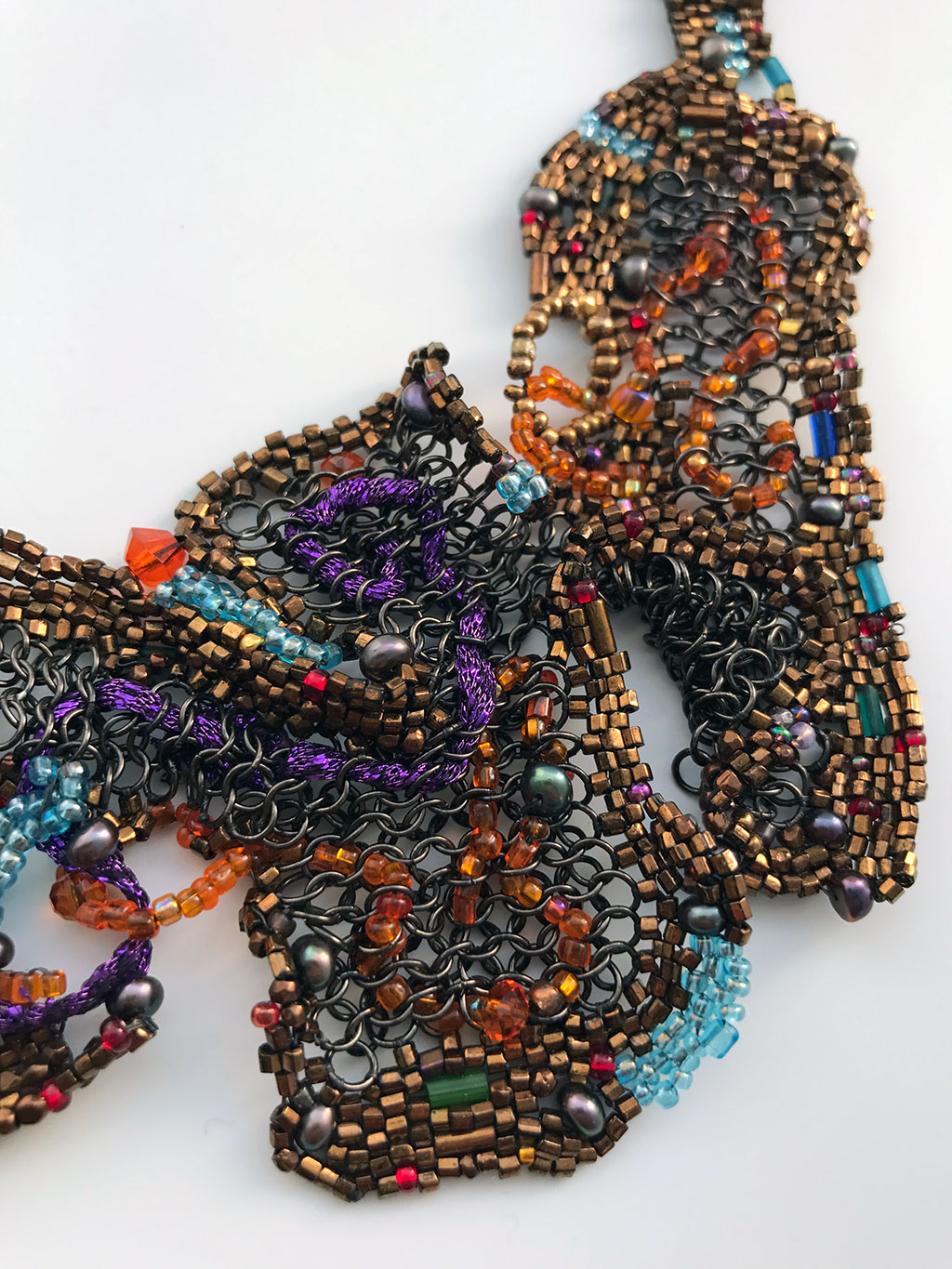
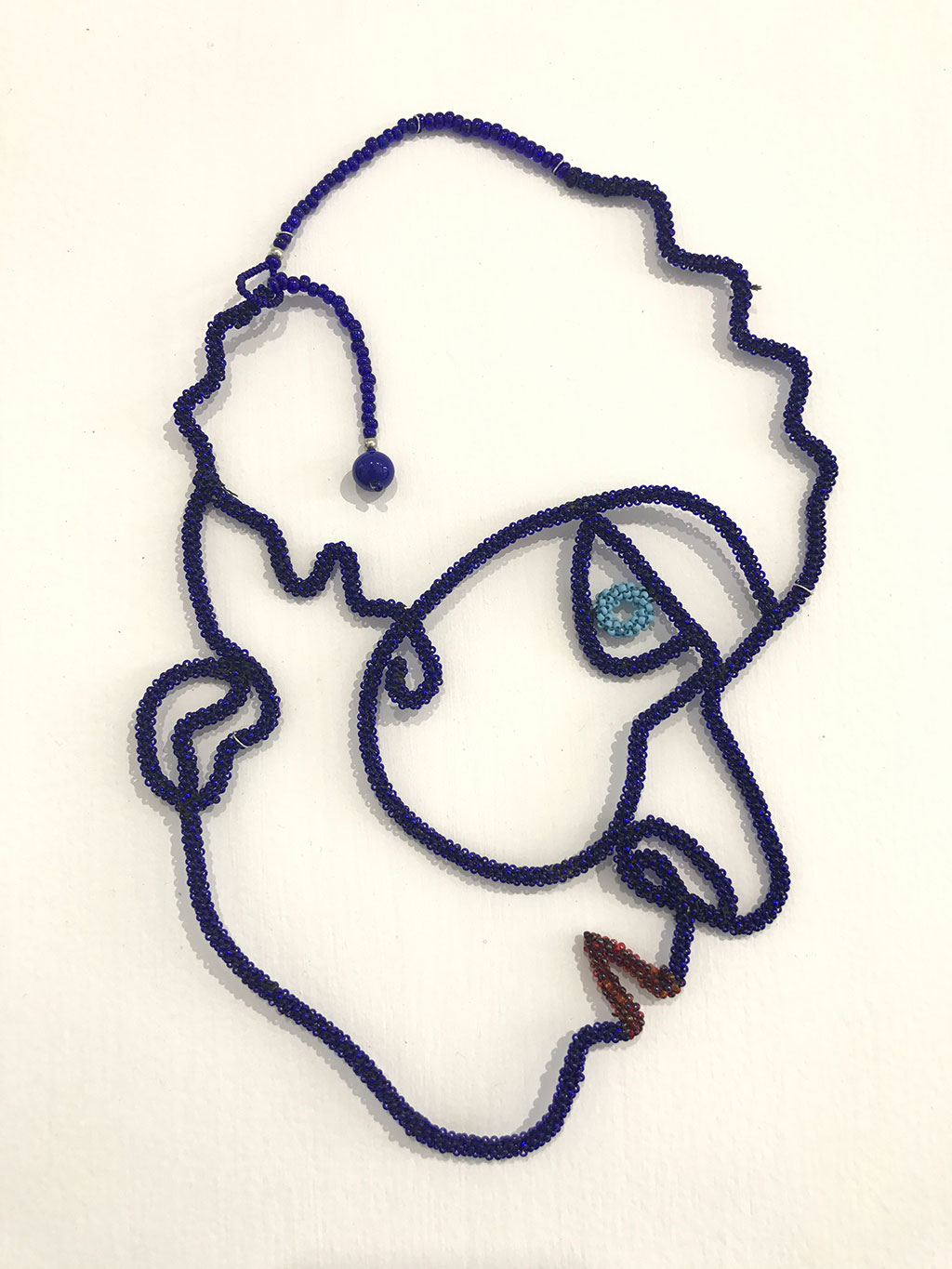
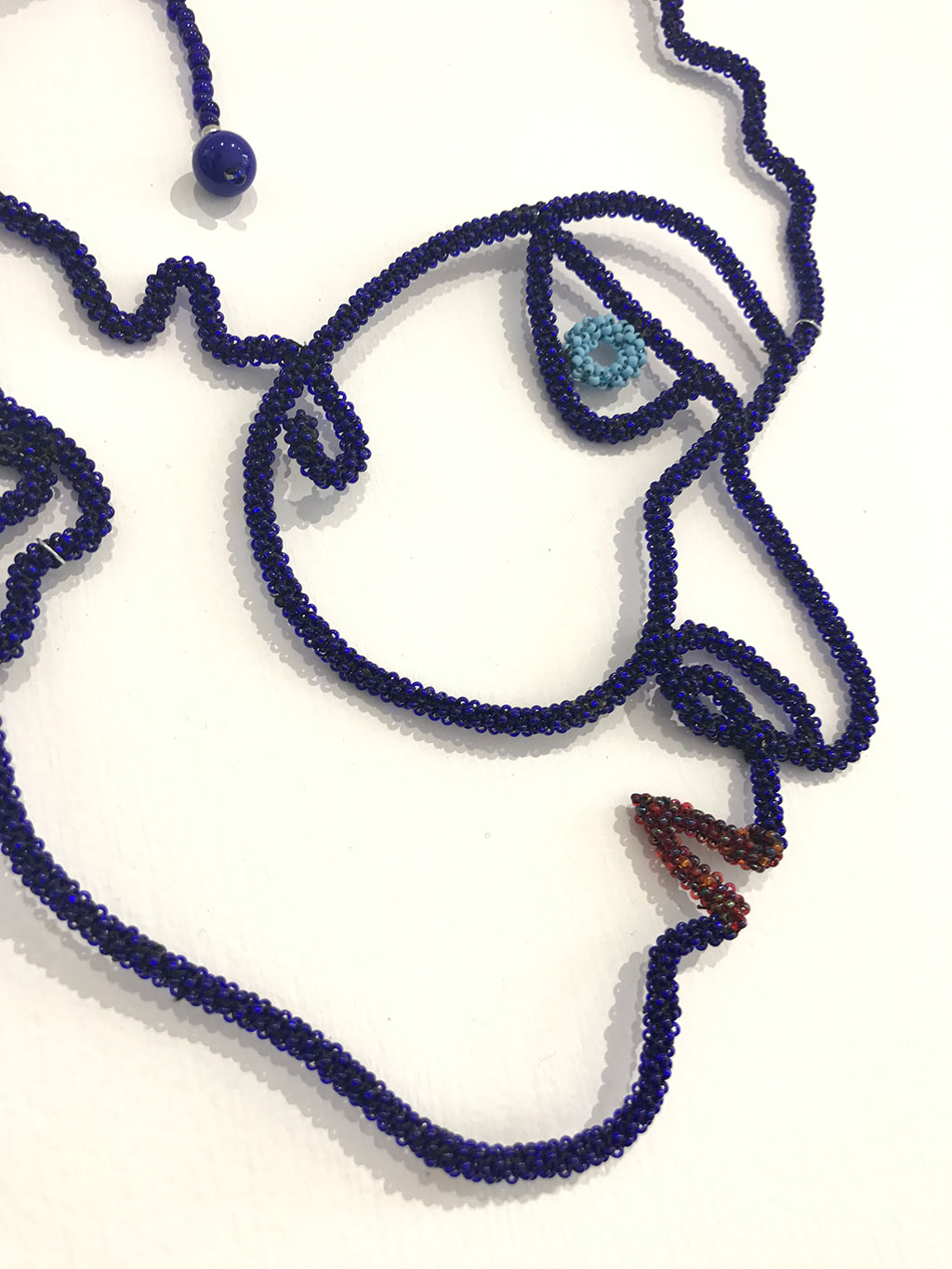
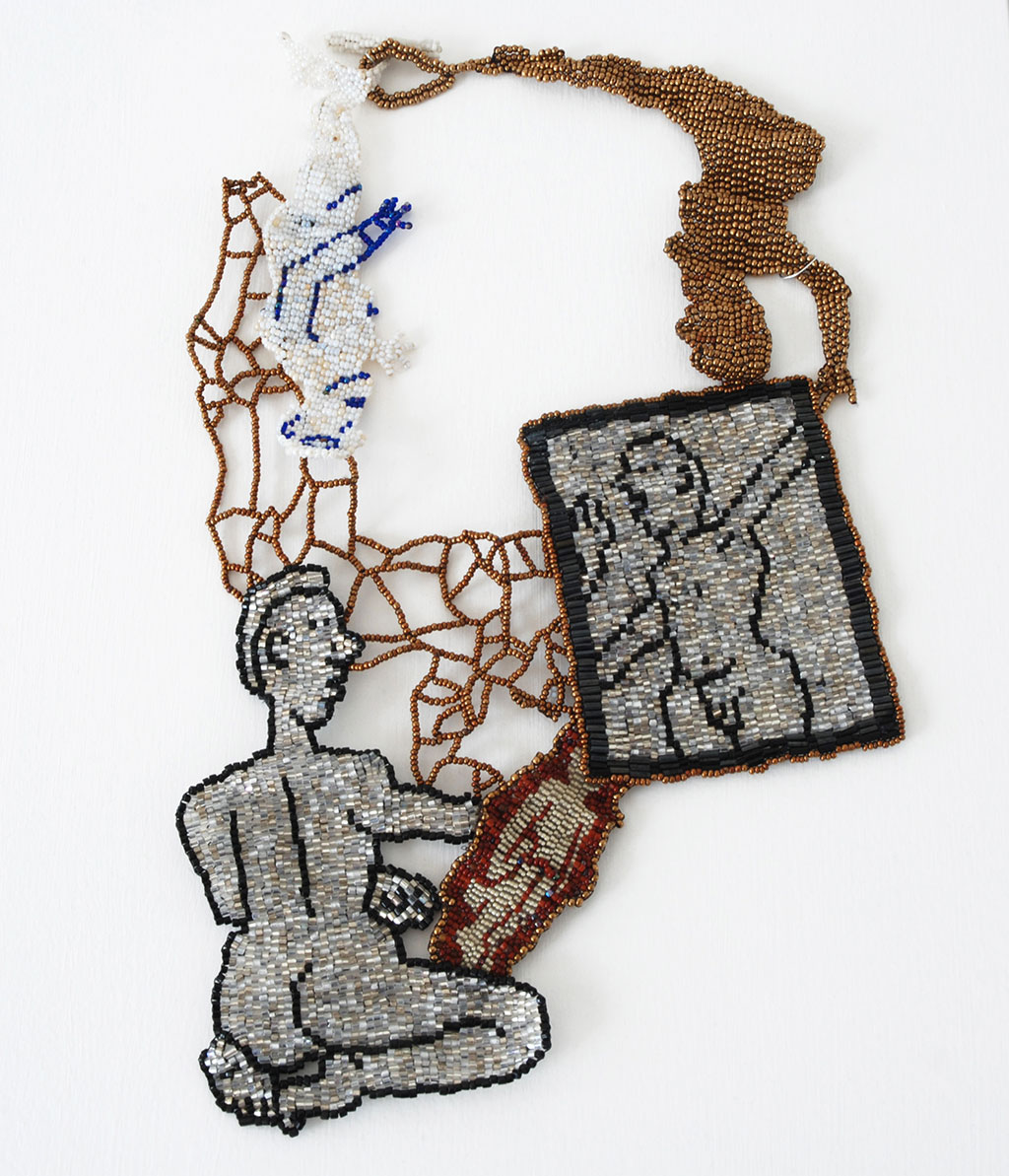
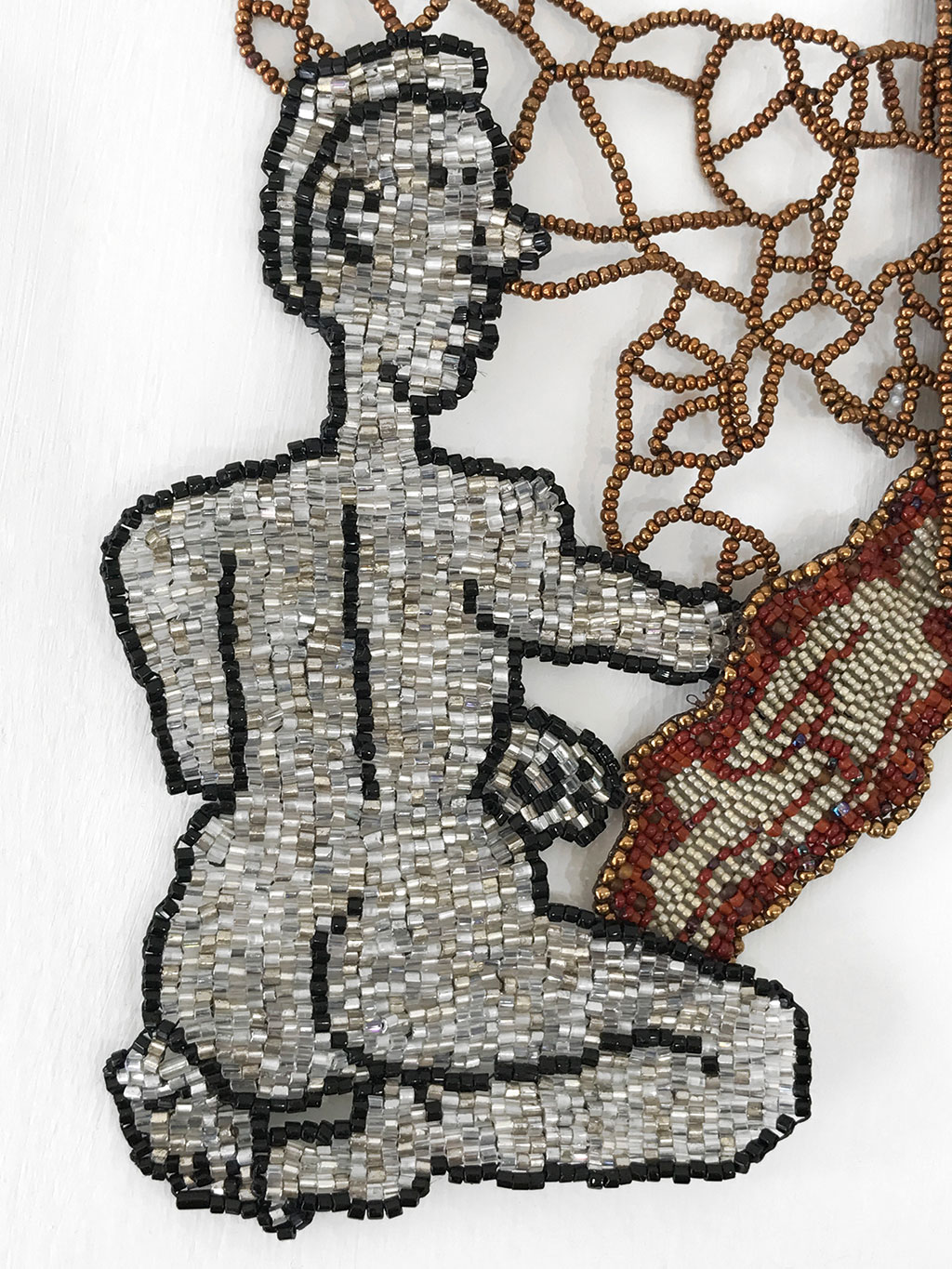
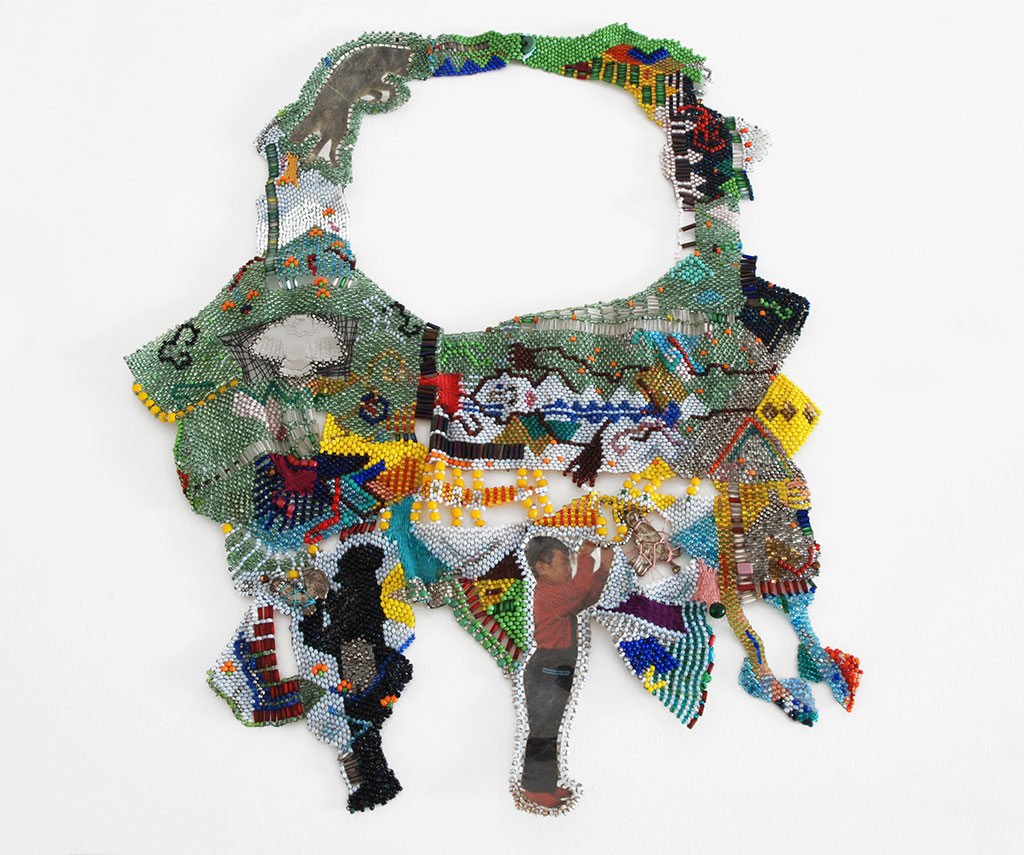
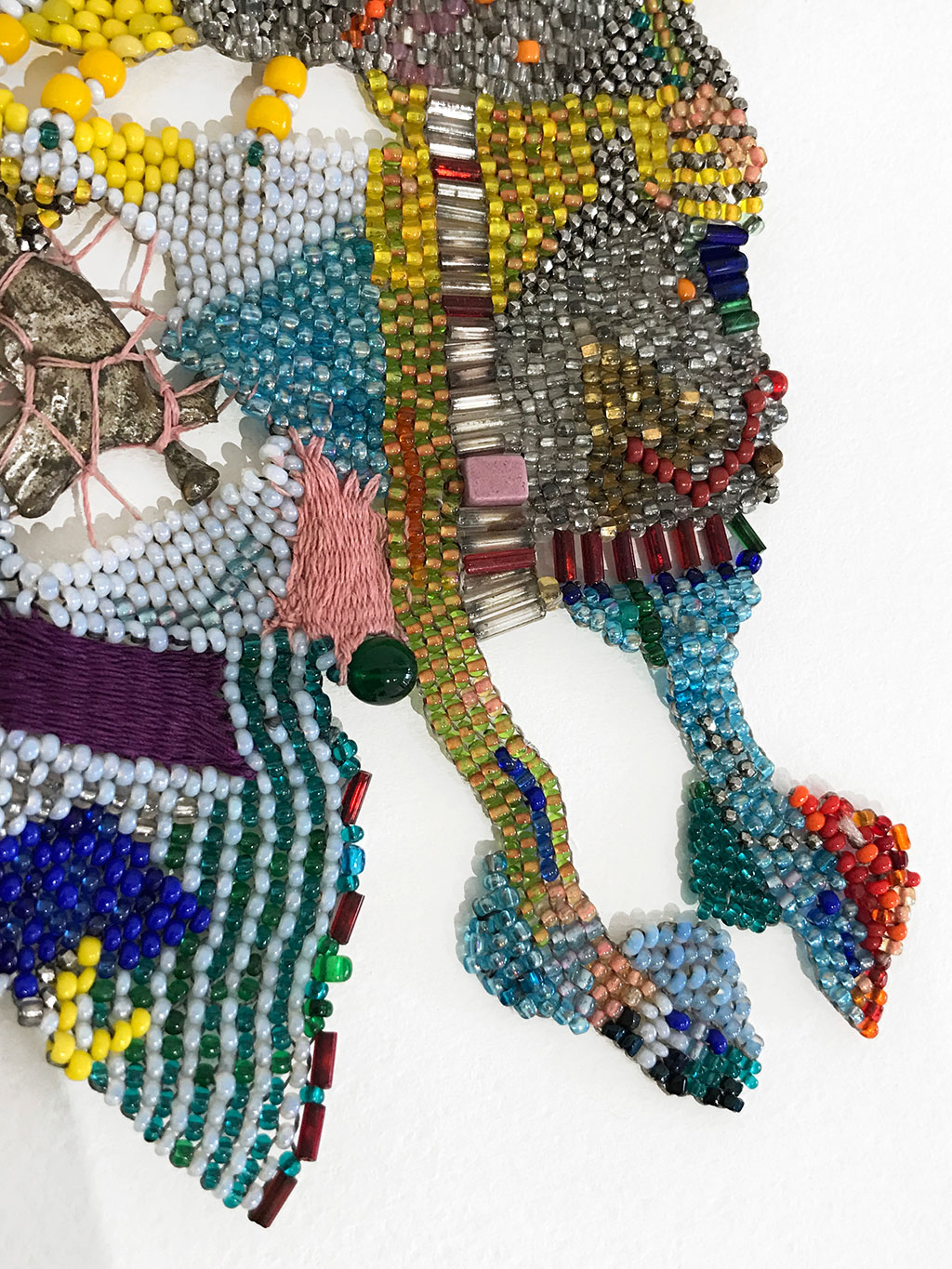
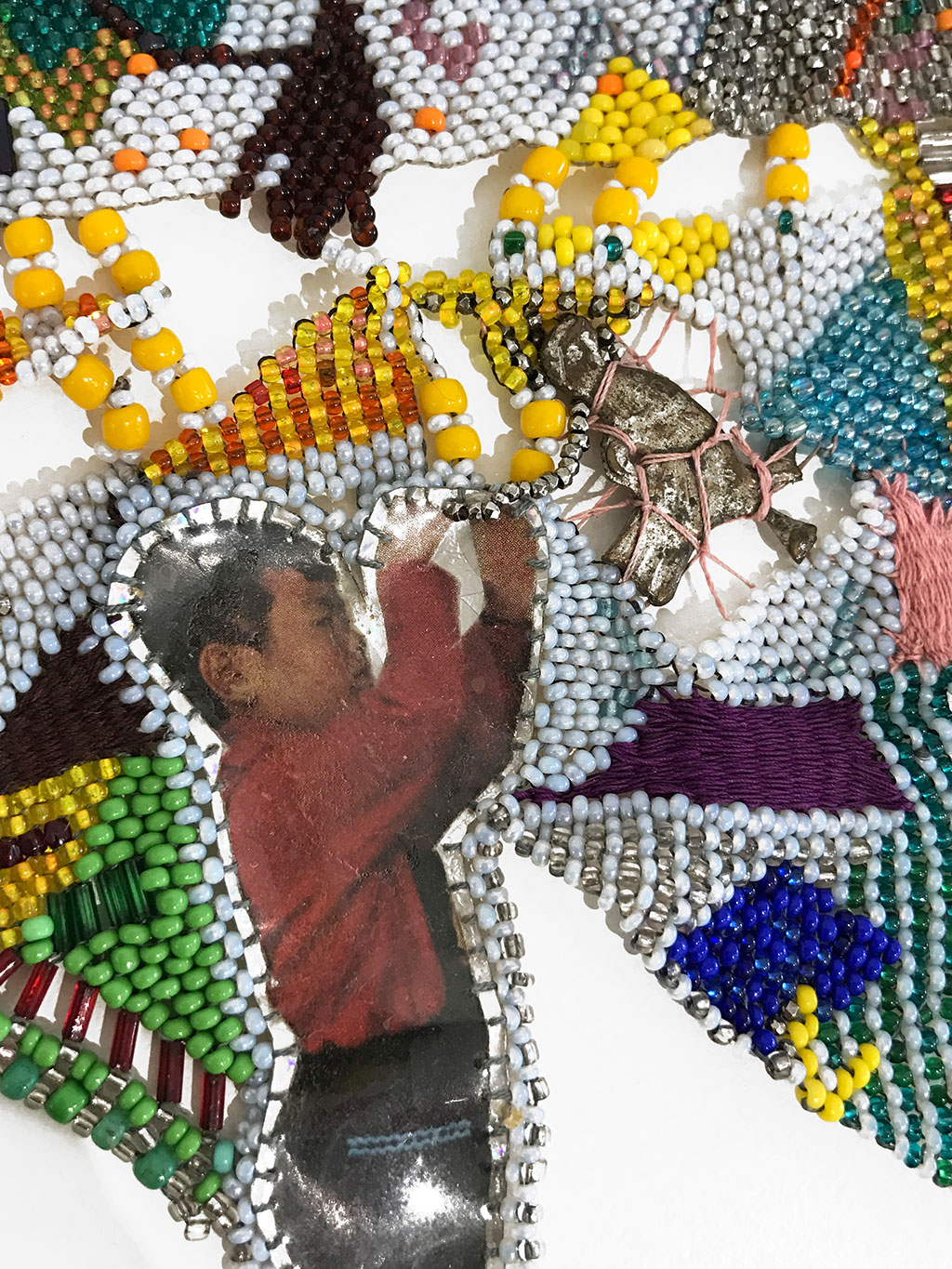
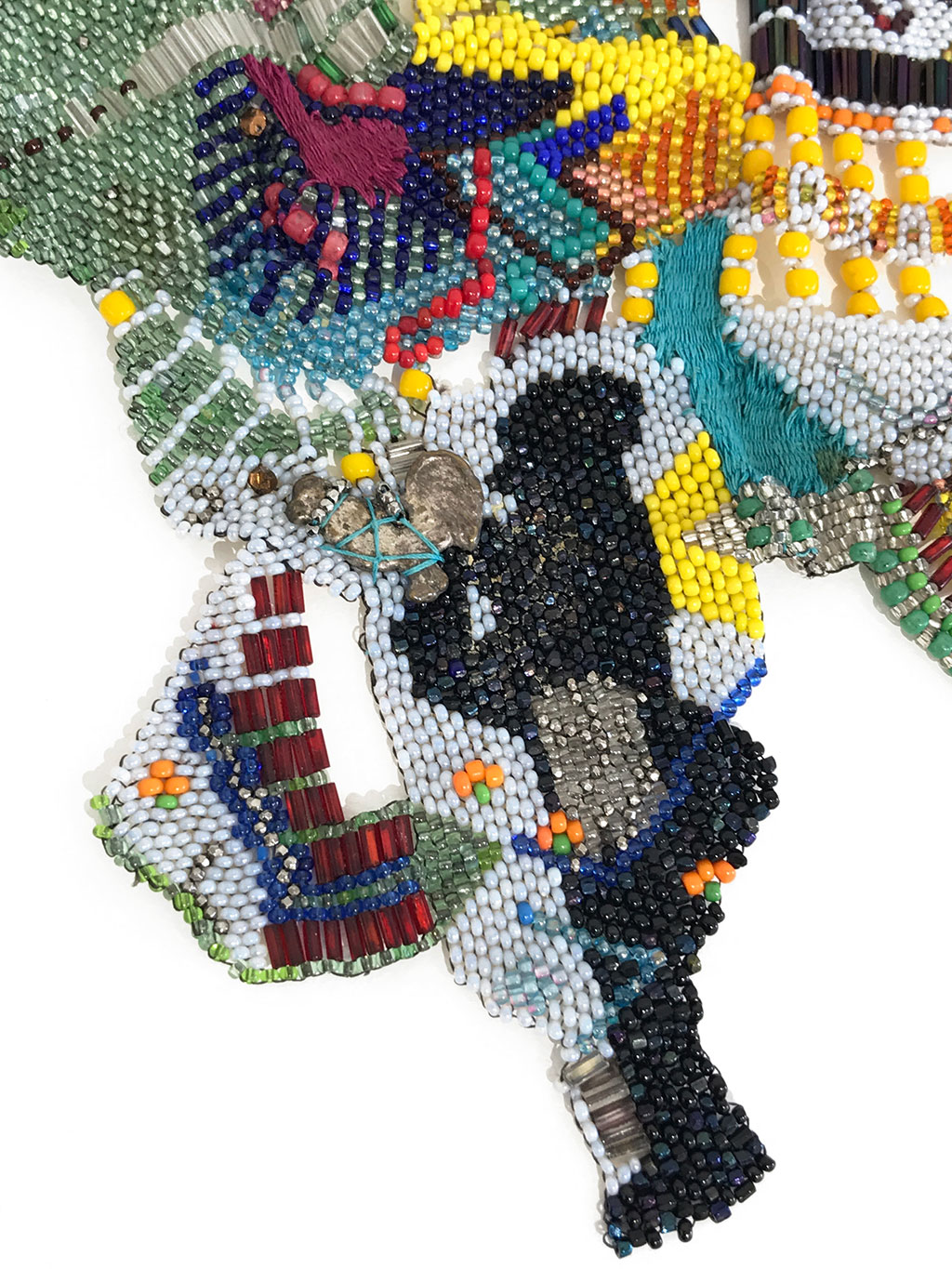
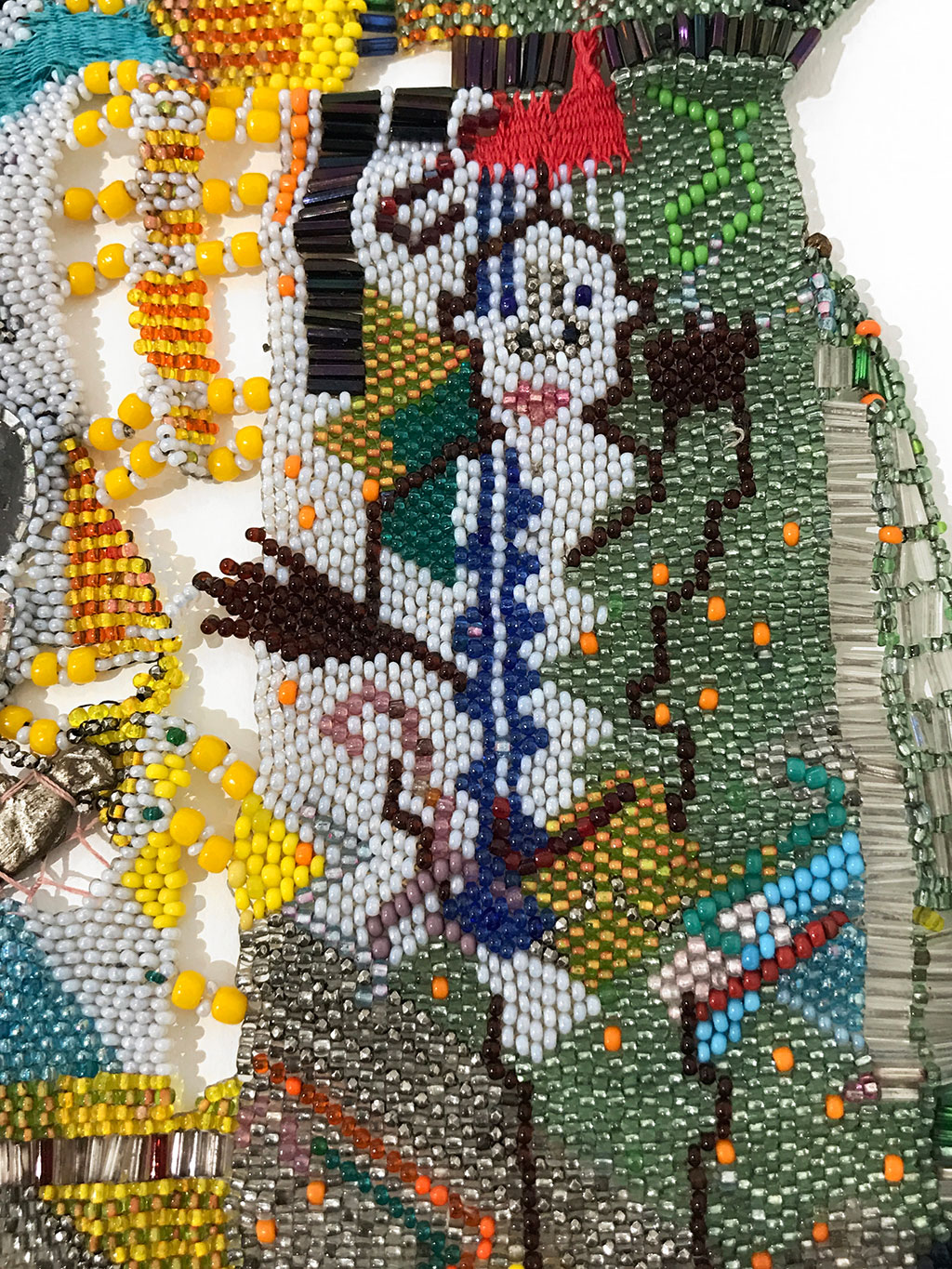
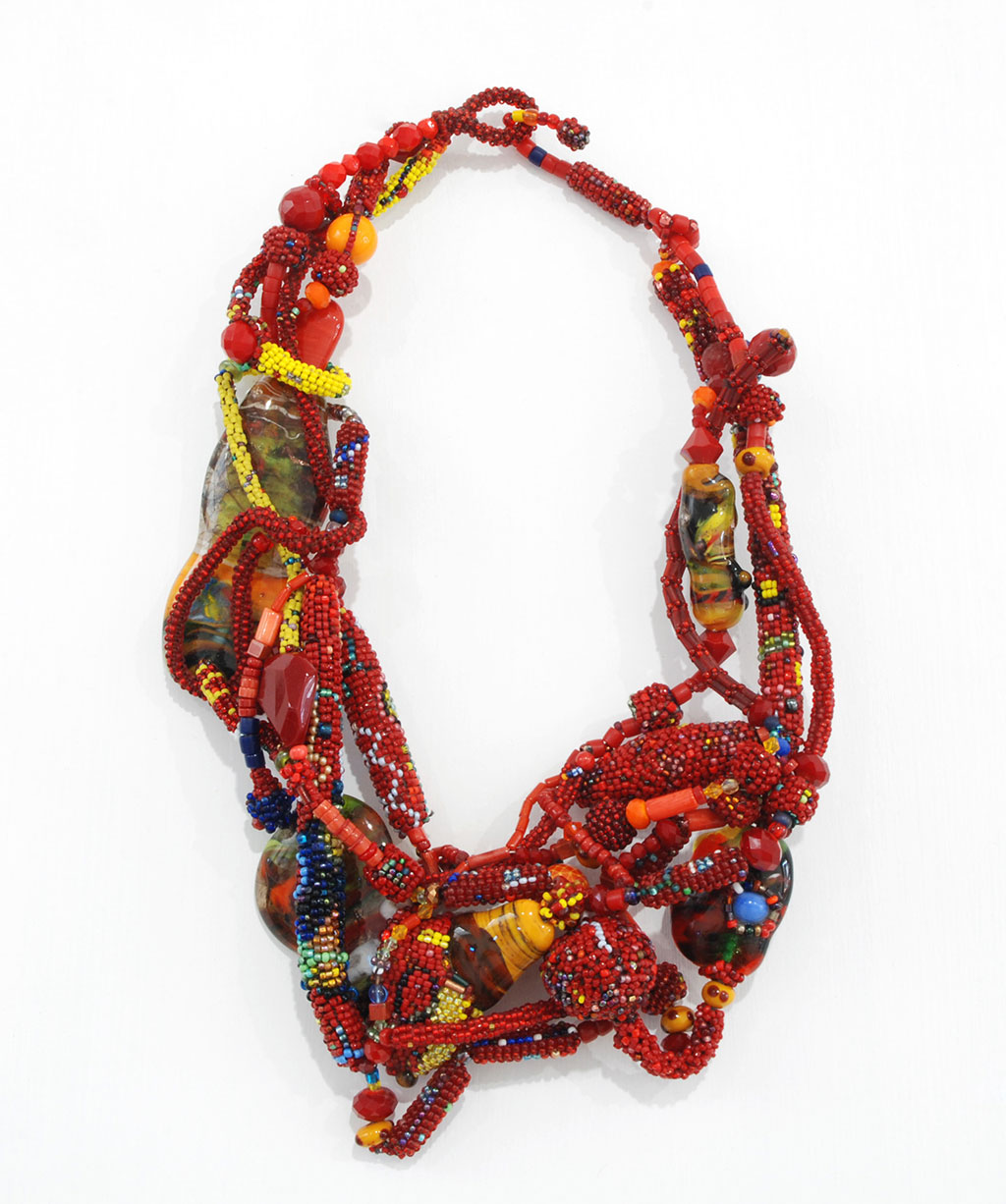
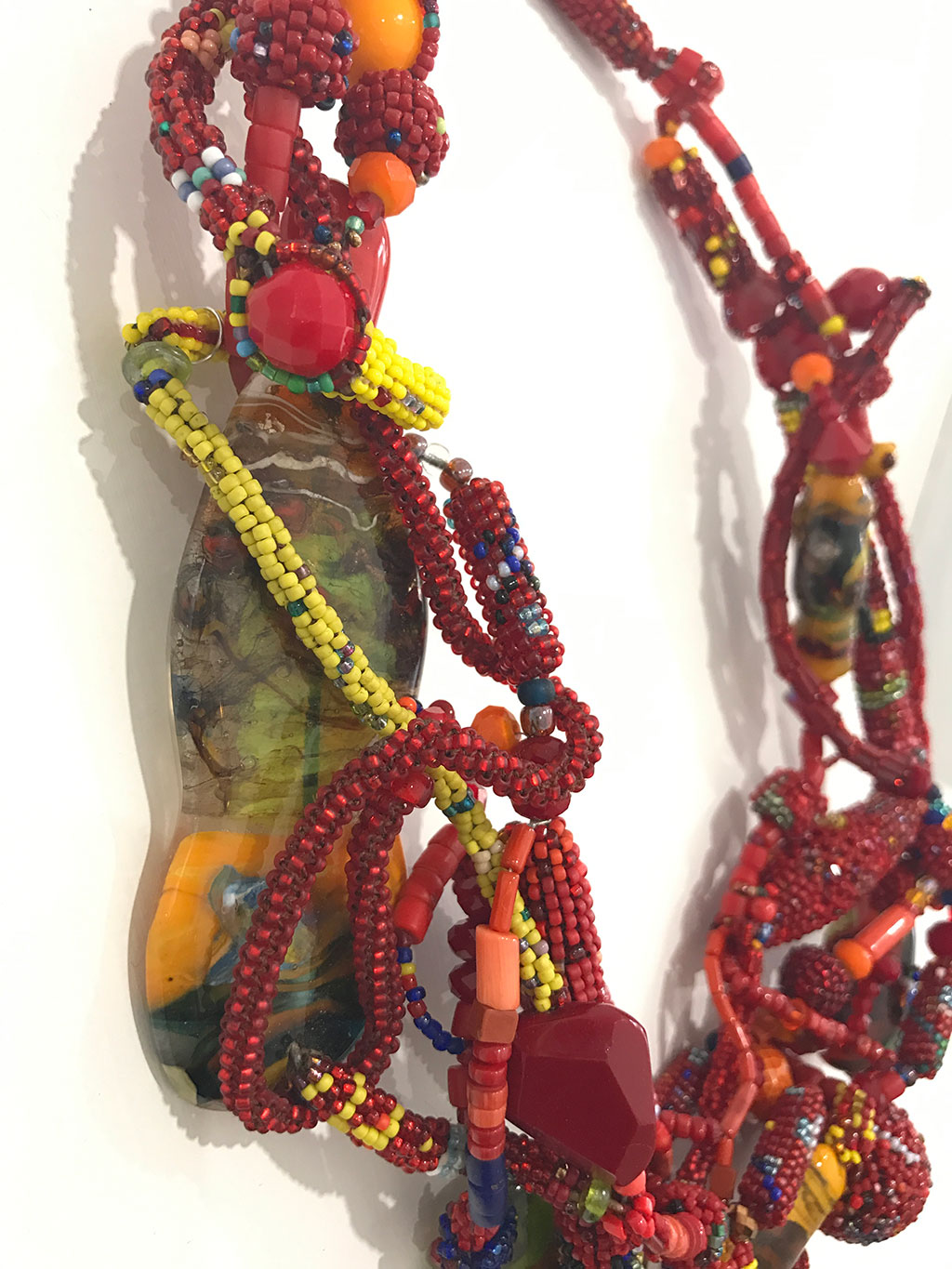
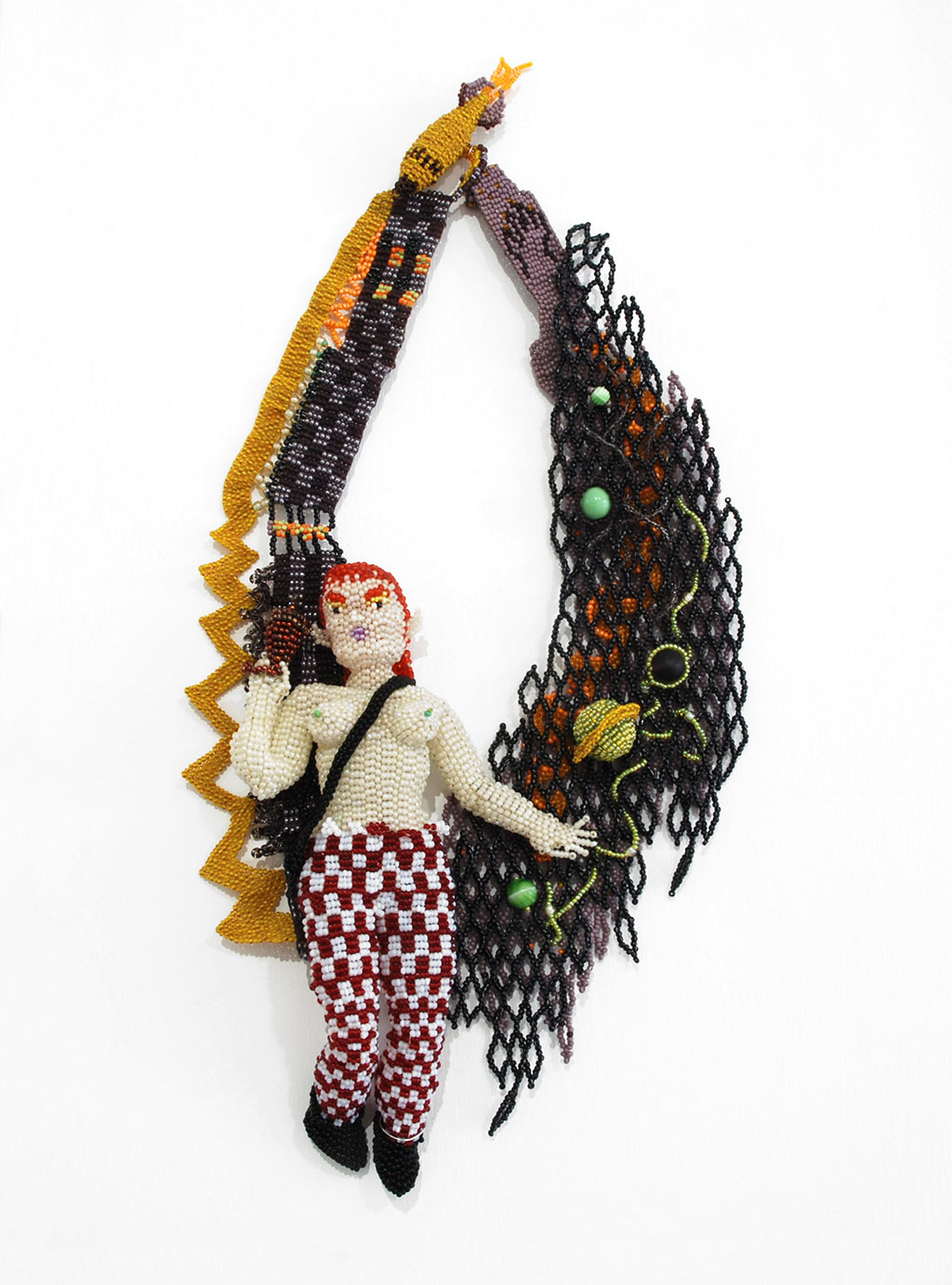
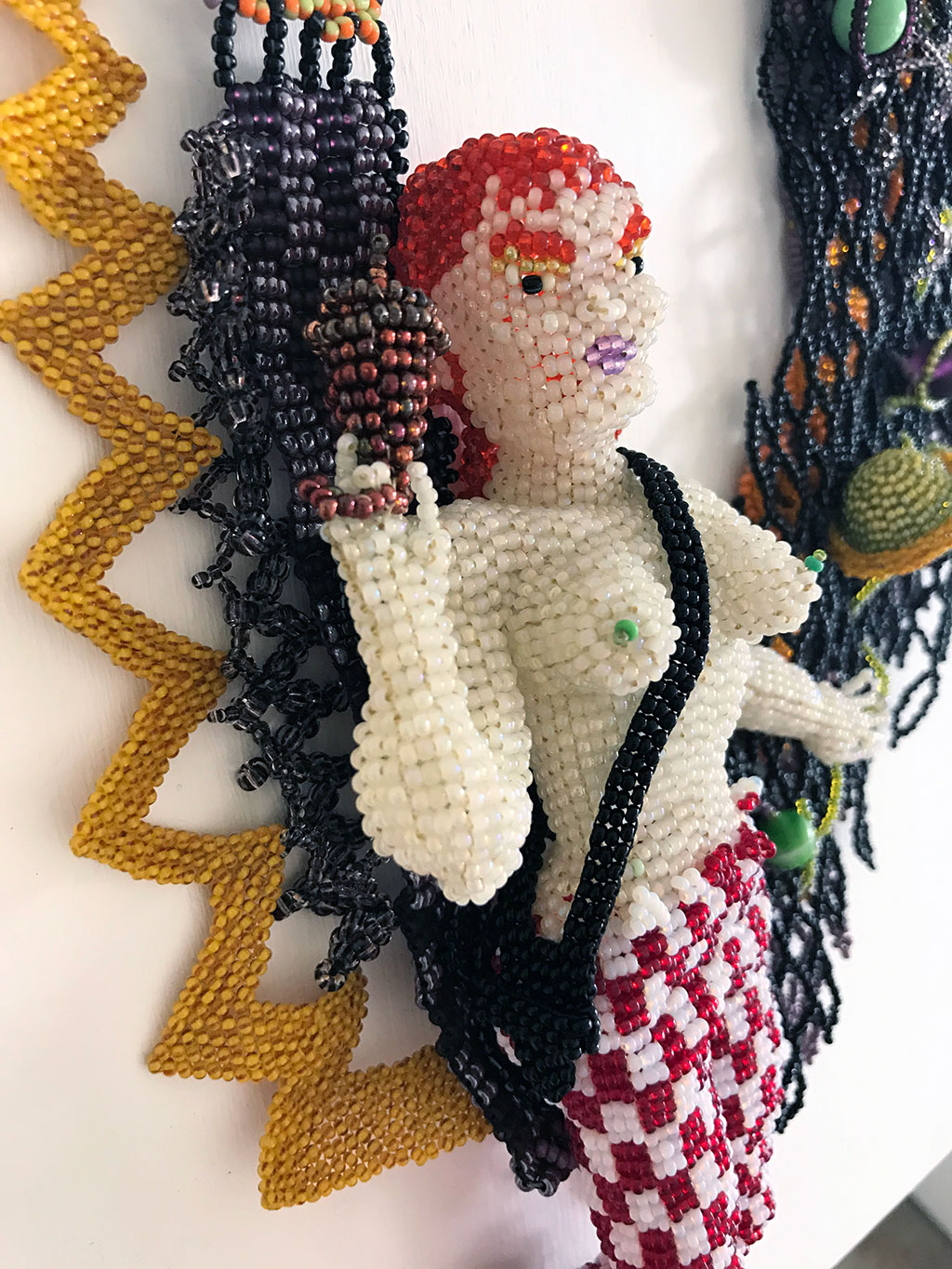
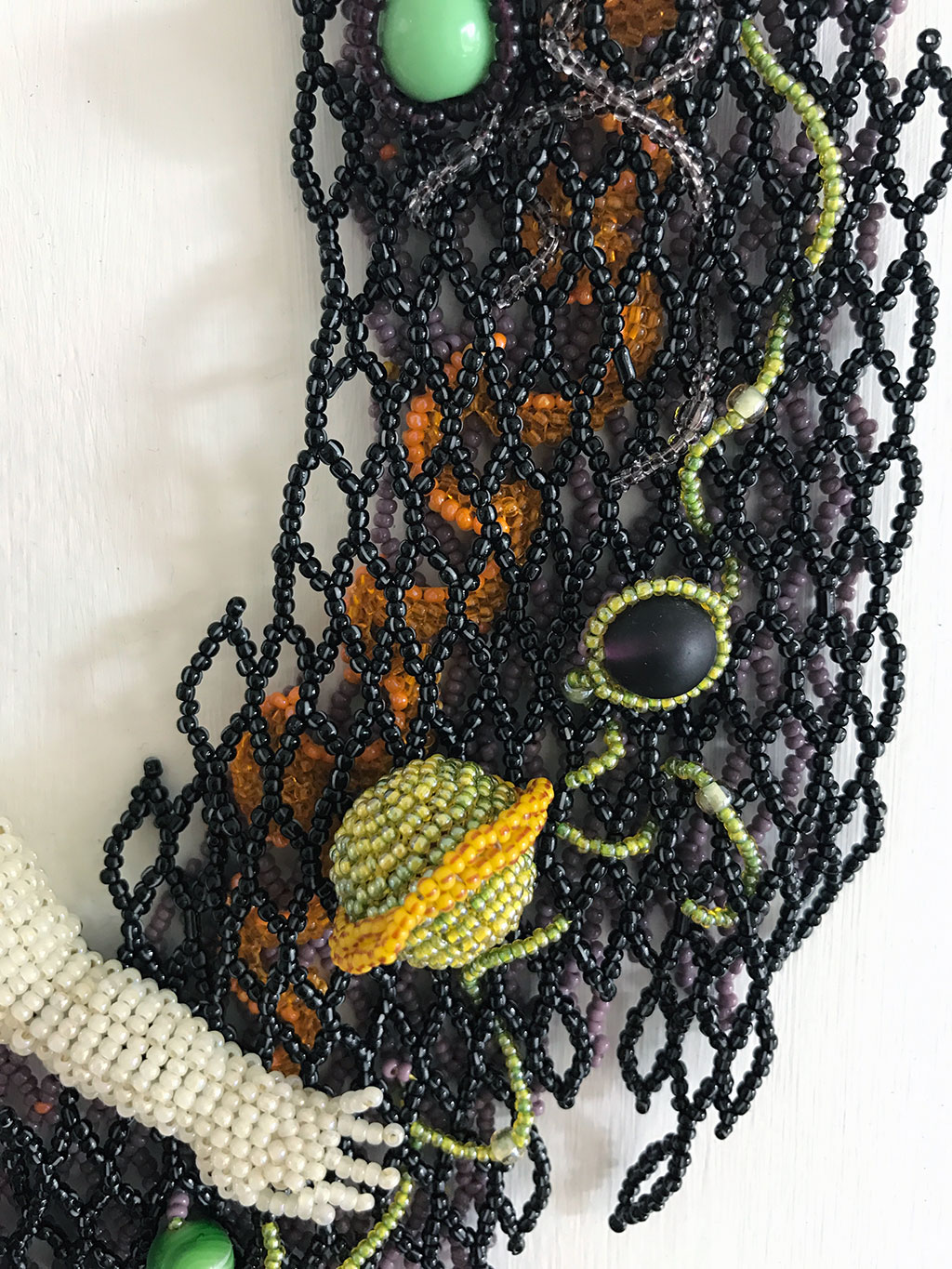
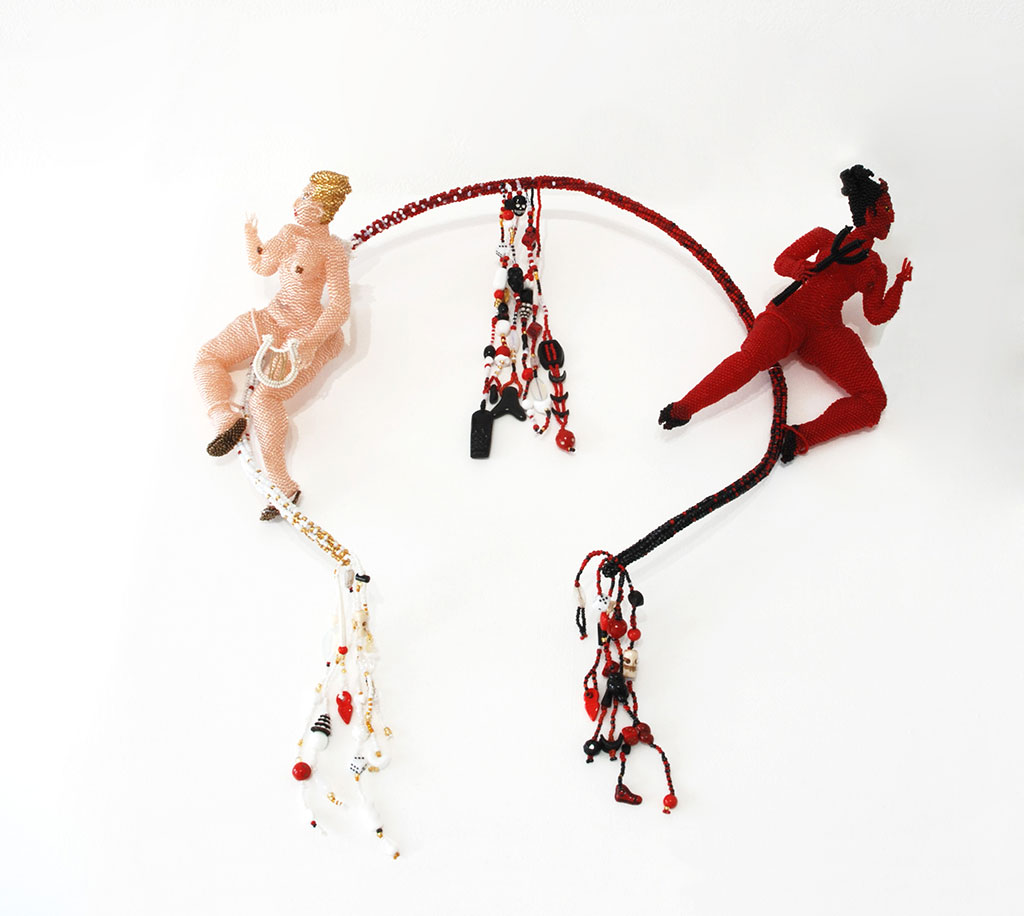
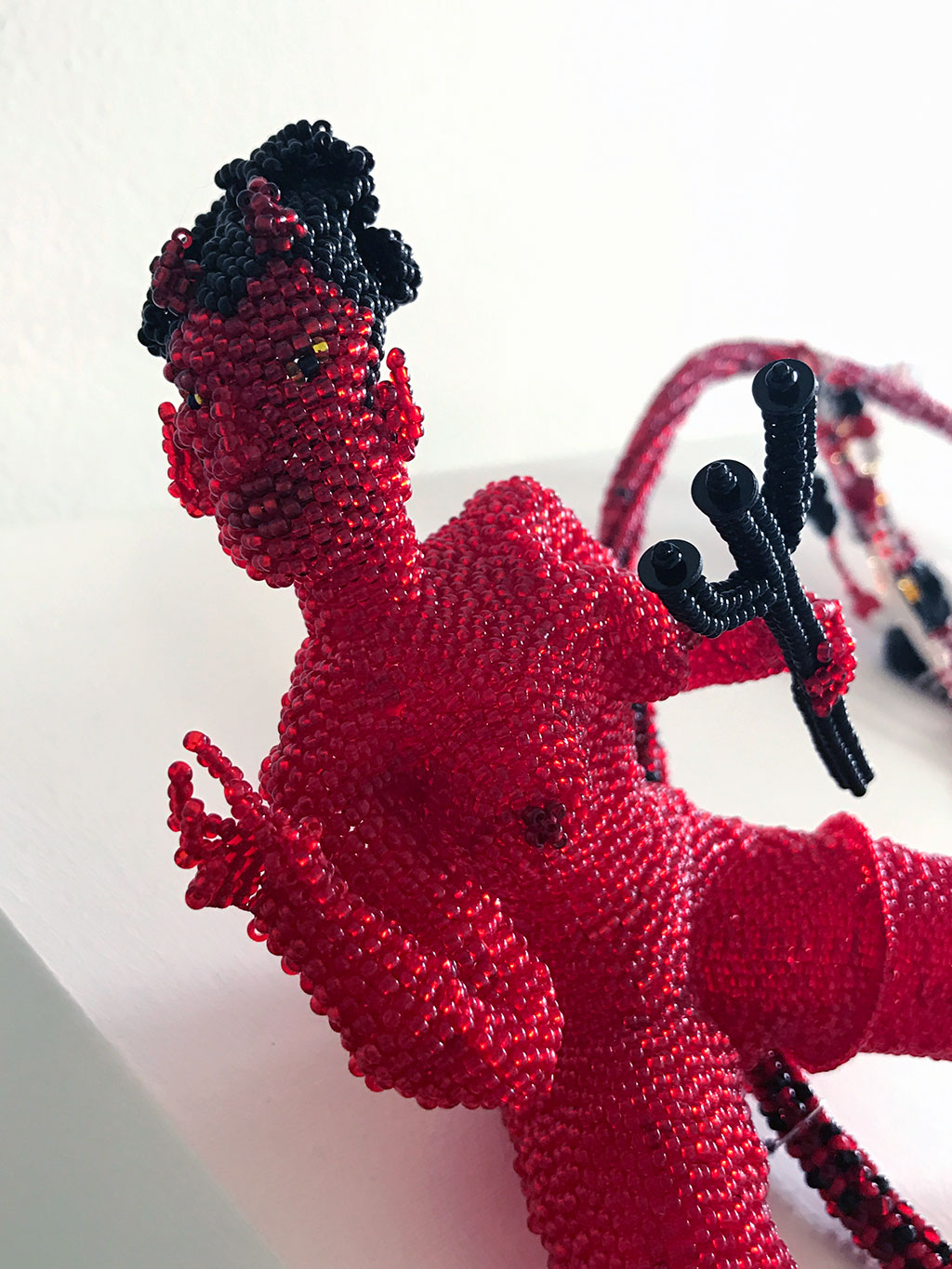
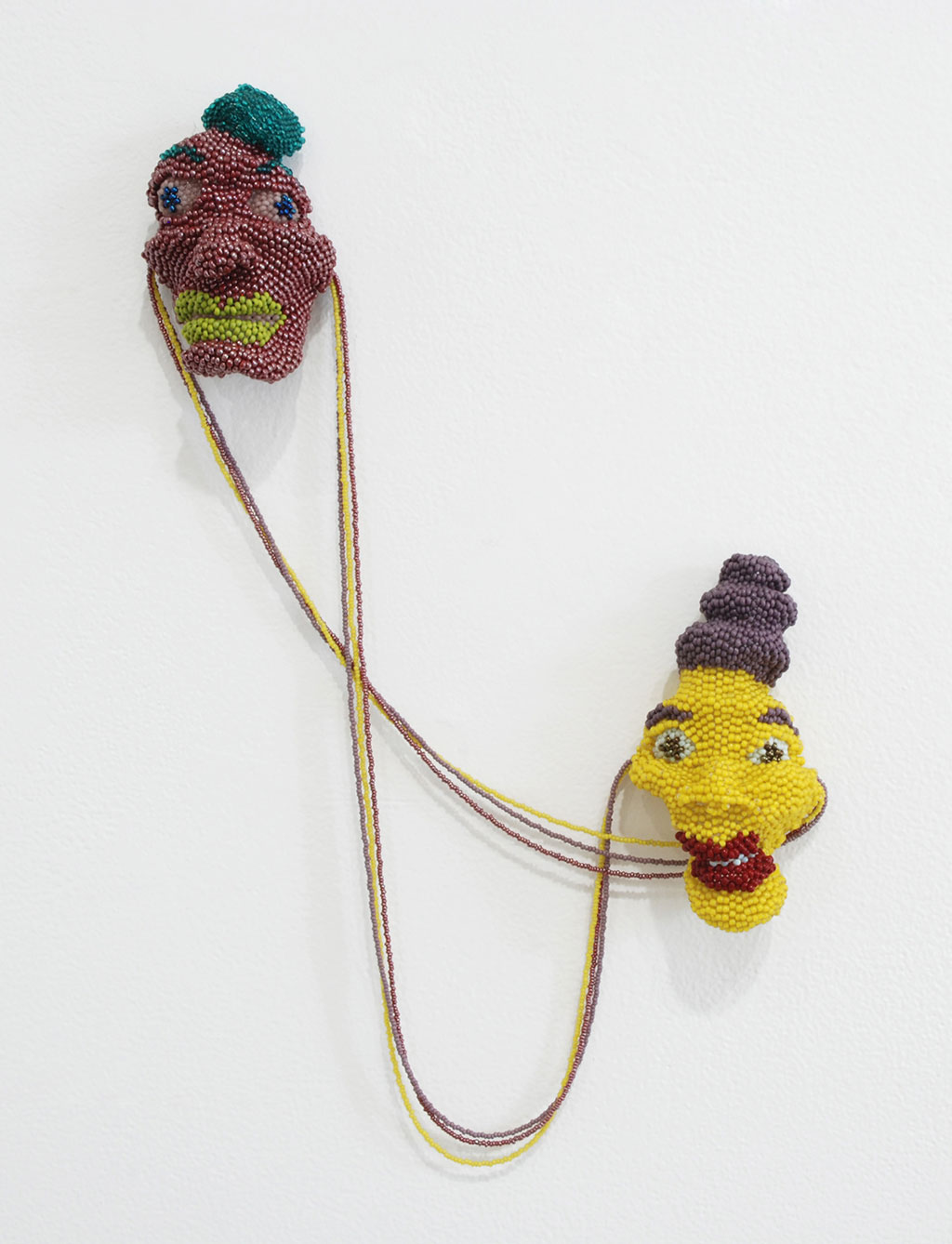
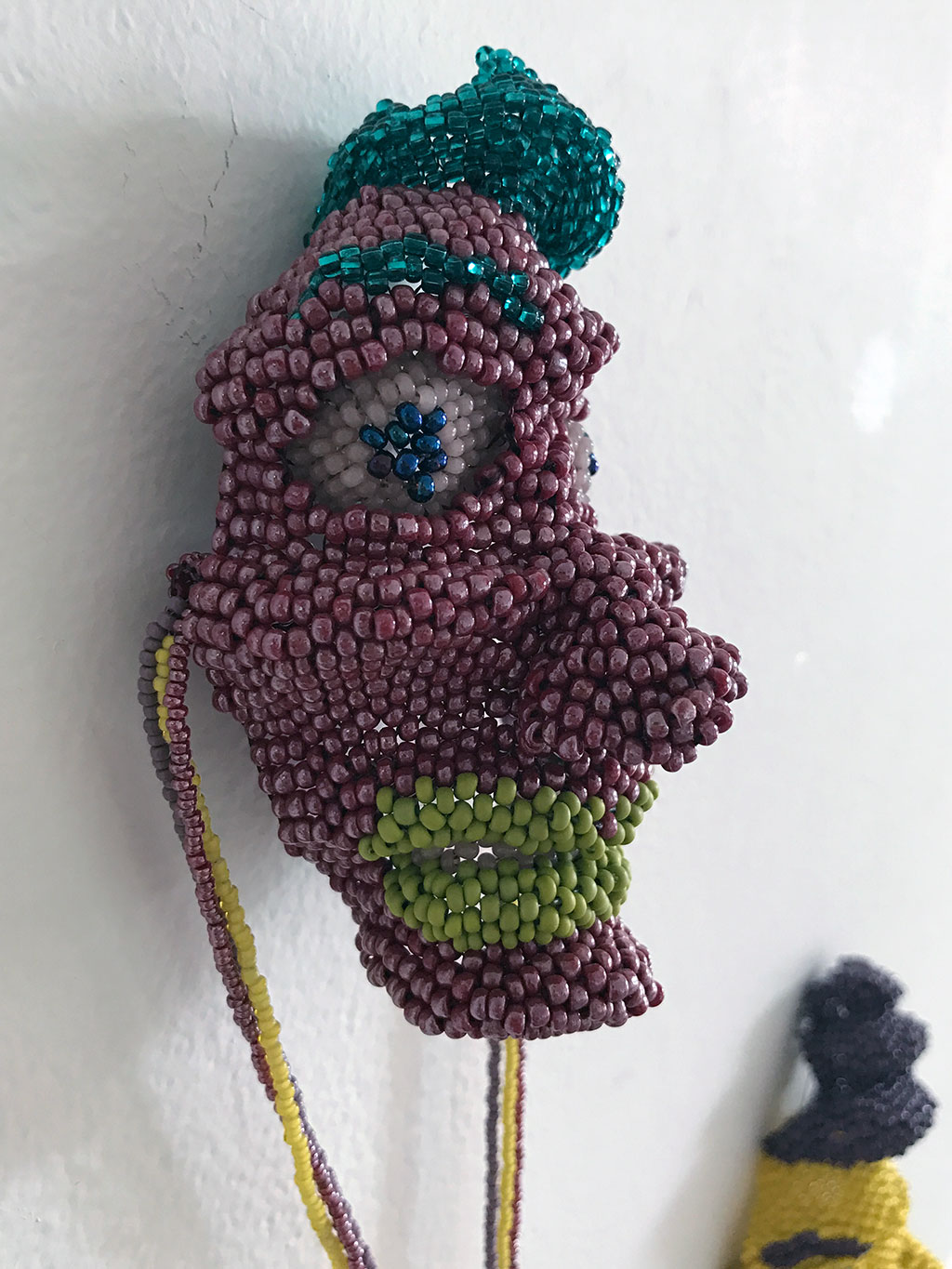

![Teresa Sullivan, [Hanging Beaded] Bell Pulls, 2010](https://www.craftinamerica.org/wp-content/uploads/2018/03/DSC_0341edit.jpg)
![Teresa Sullivan, [Hanging Beaded] Bell Pulls, 2010](https://www.craftinamerica.org/wp-content/uploads/2018/03/IMG_6747.jpg)
![Teresa Sullivan, [Hanging Beaded] Bell Pulls, 2010](https://www.craftinamerica.org/wp-content/uploads/2018/03/IMG_6745.jpg)
![Teresa Sullivan, [Hanging Beaded] Bell Pulls, 2010](https://www.craftinamerica.org/wp-content/uploads/2018/03/IMG_6743.jpg)
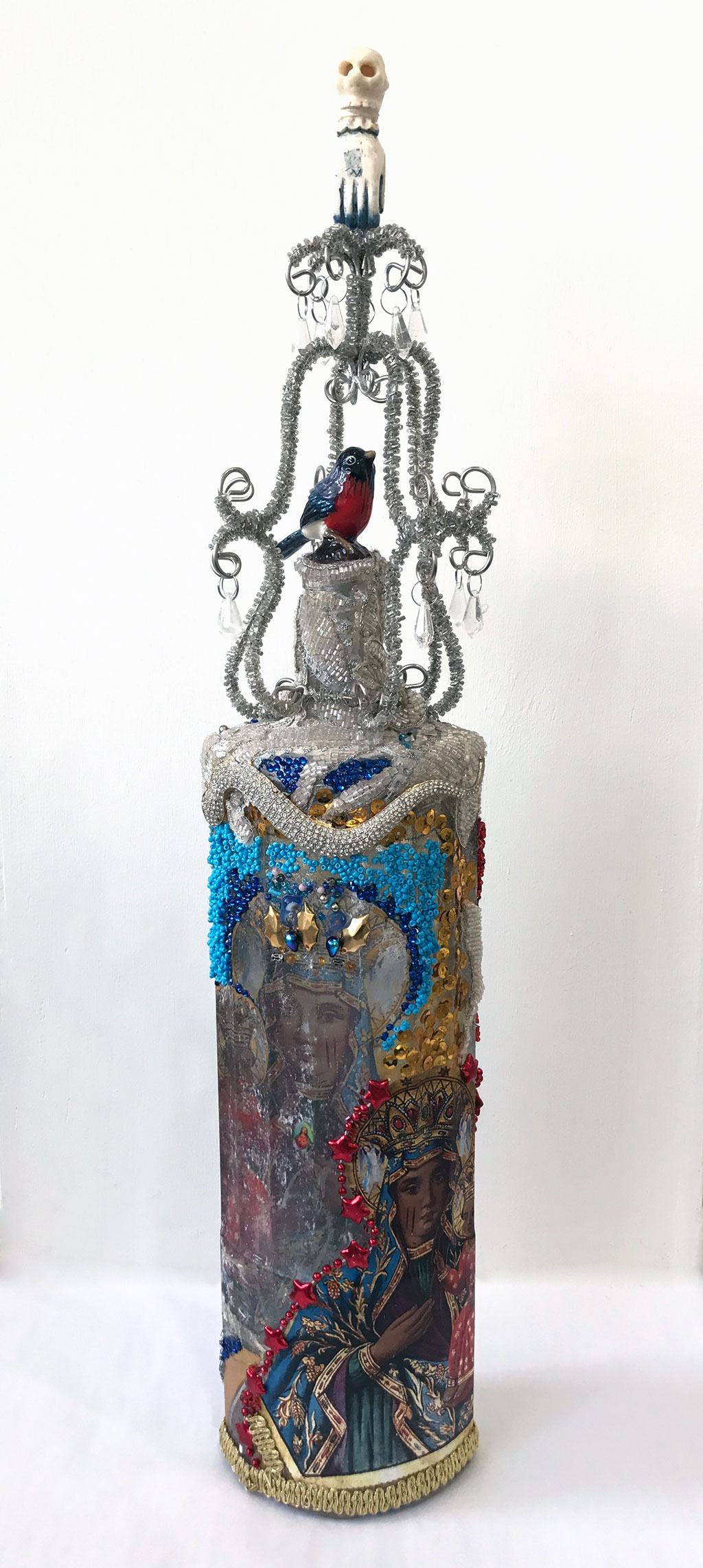
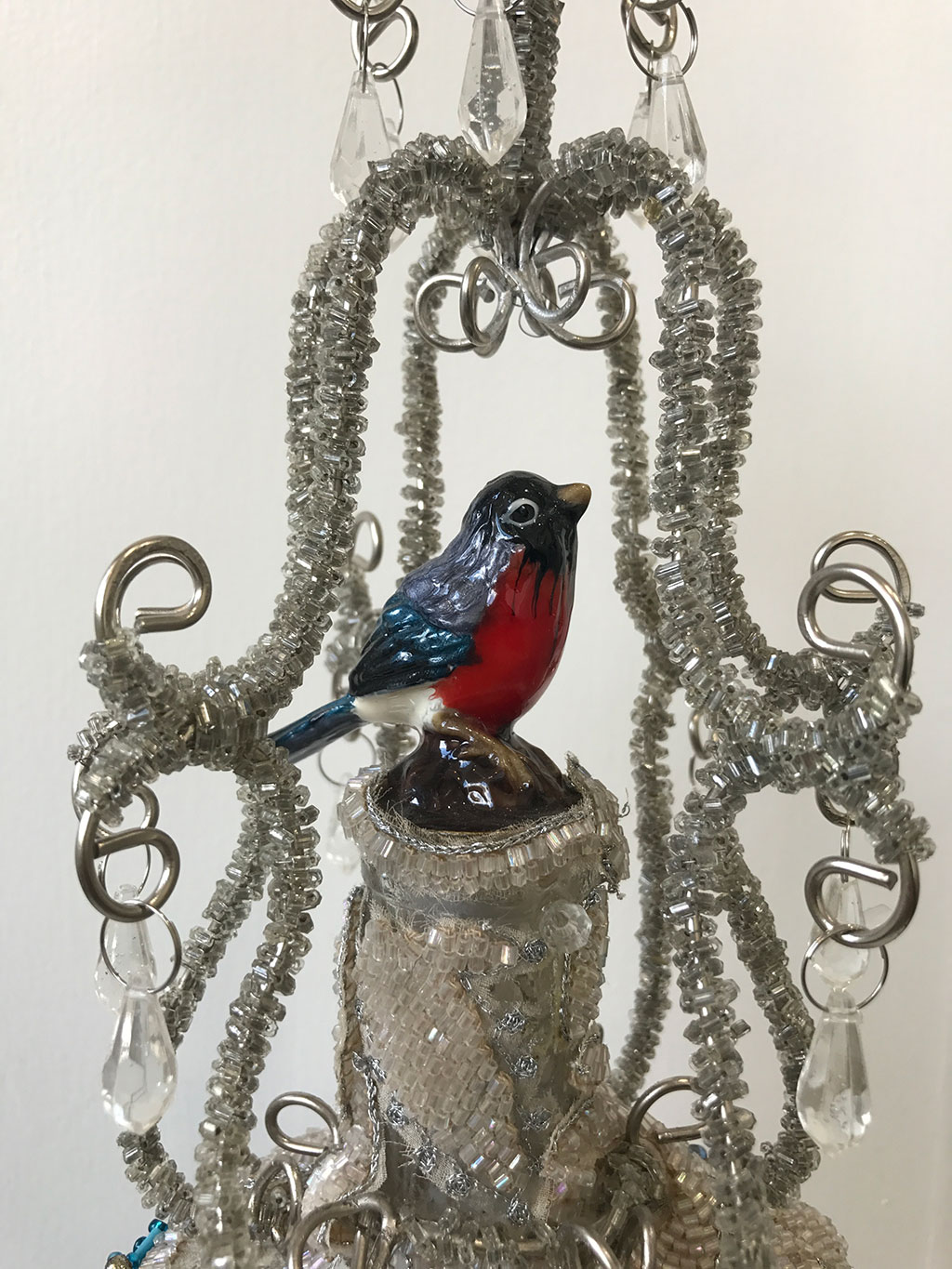

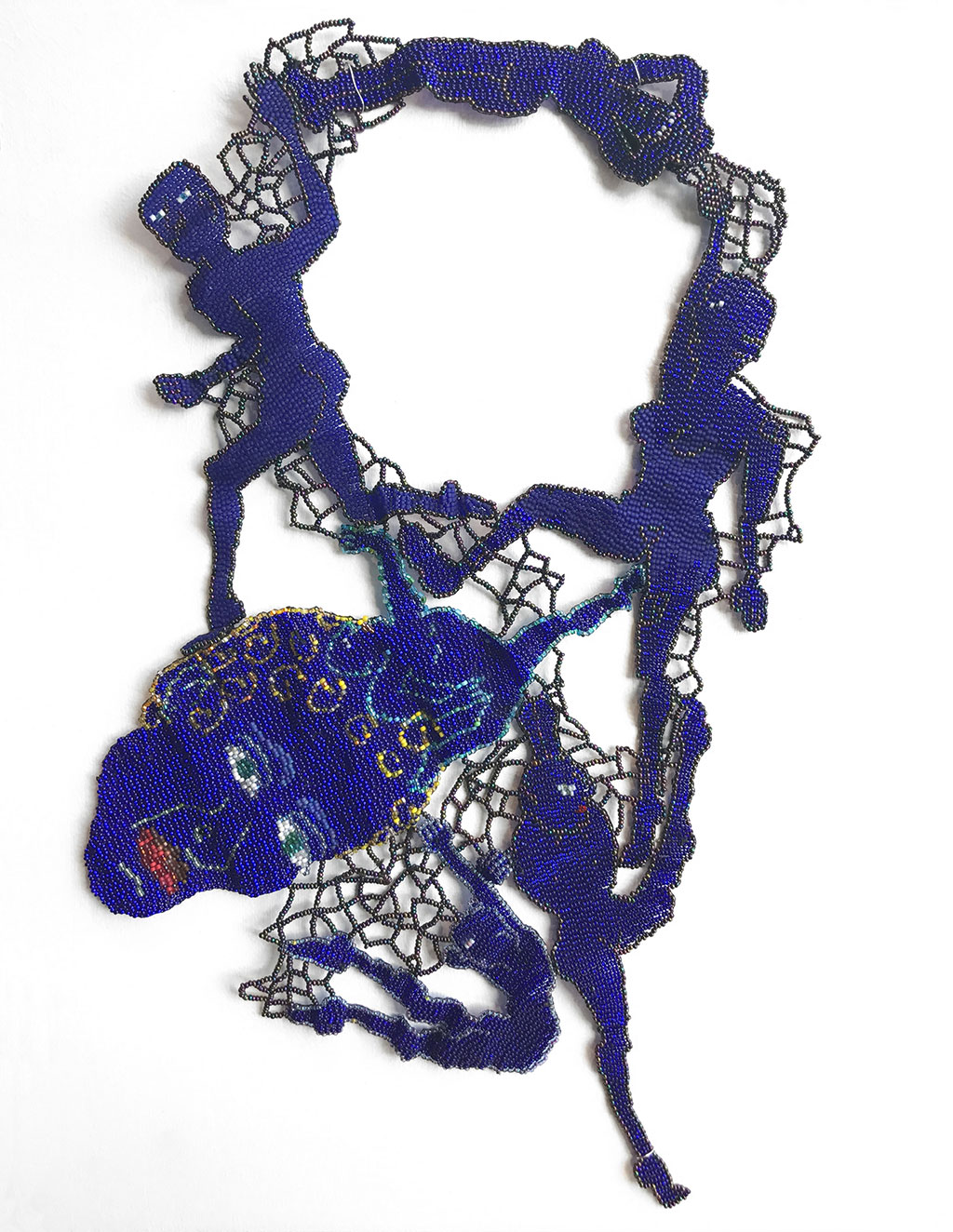
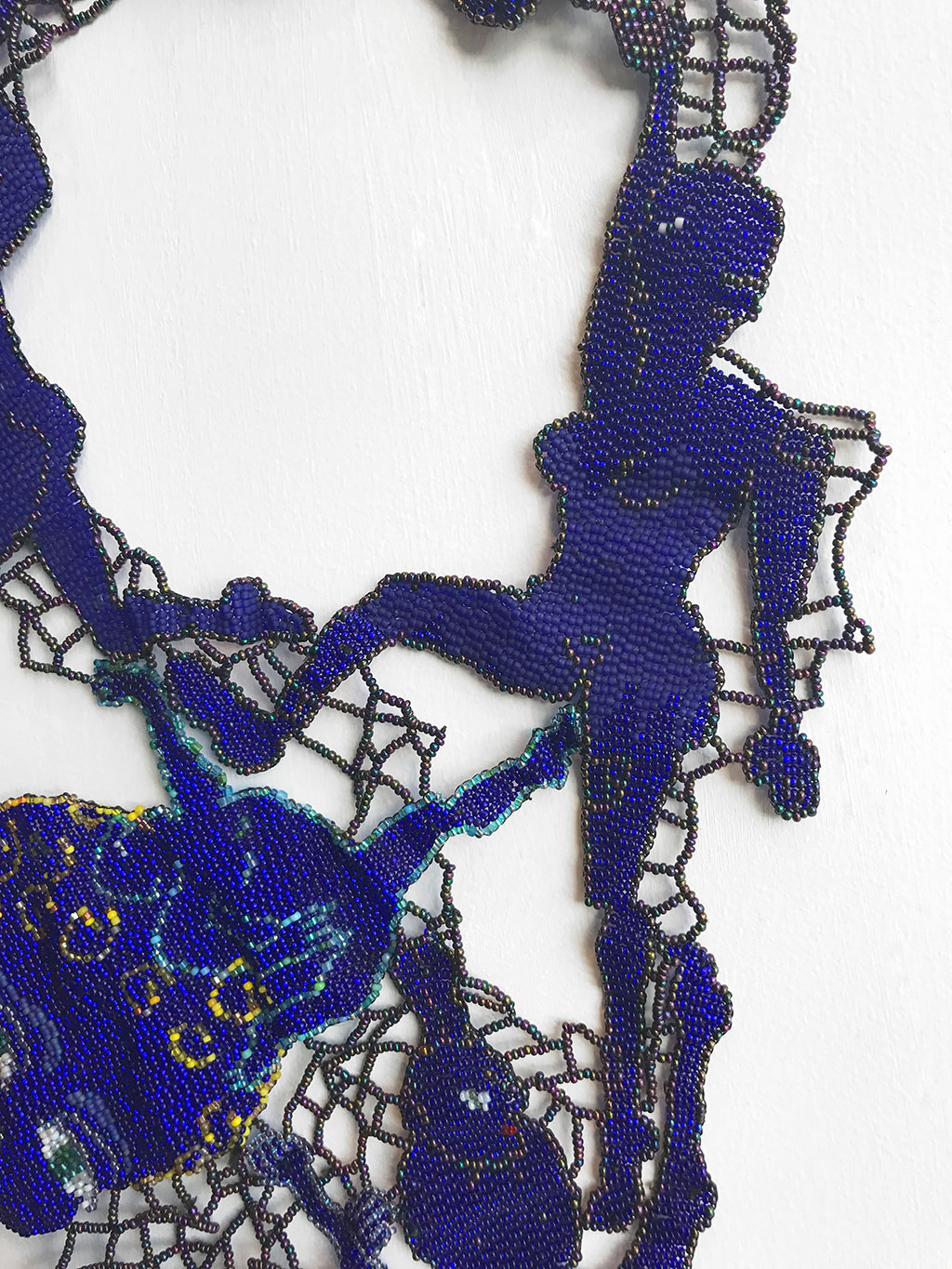
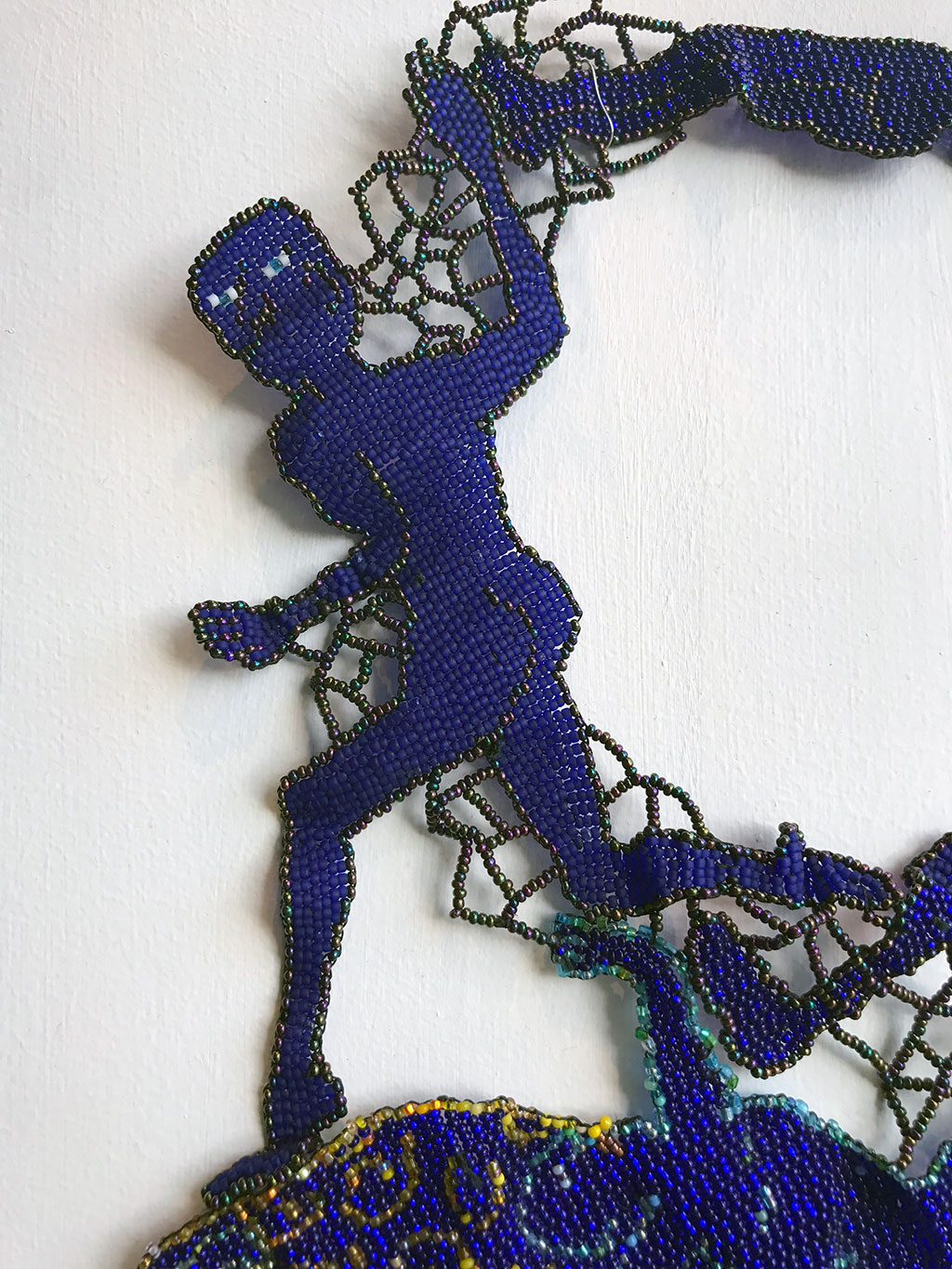
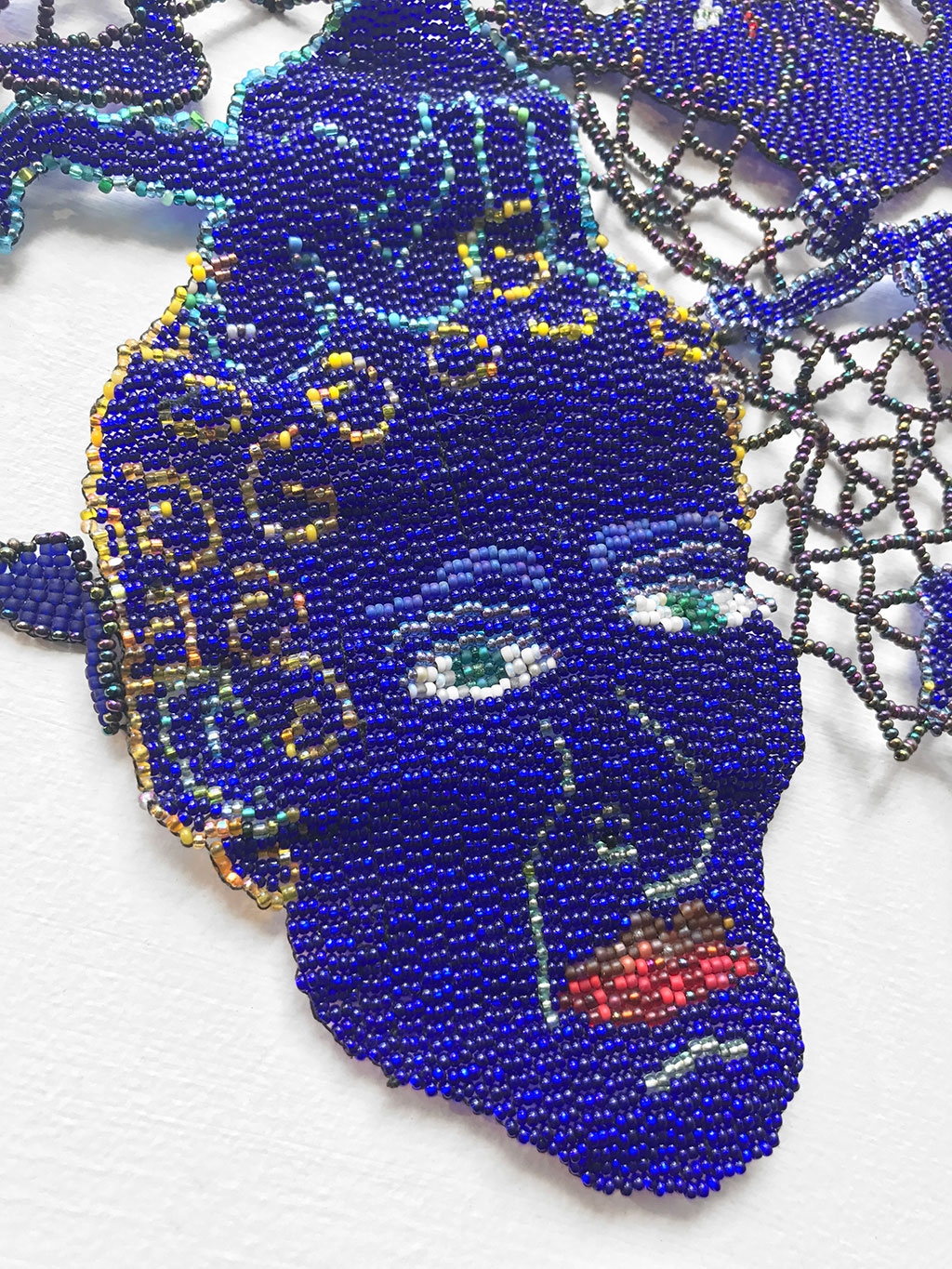
Madison Metro photos
Joyce J. Scott (Joyce Scott)
Joyce J. Scott is a versatile artist from Baltimore, Maryland. She is a printmaker, weaver, sculptor, performance artist, and educator, but she is probably most well known for her work in jewelry, beadwork, and glass. Her art reflects her take on all aspects of American popular culture, her ancestry, and her community.
Her pieces serve as a commentary for issues regarding race, politics, sexism, and stereotypes. Of her own work, Scott says, “I believe in messing with stereotypes…It’s important for me to use art in a manner that incites people to look and then carry something home – even if it’s subliminal…” She received her BFA from the Maryland Institute College of Art and MFA from the Instituto Allende in San Miguel de Allende, Guanajuato, Mexico. Her work is in the collections of the Baltimore Museum of Art, Mint Museum of Craft + Design, Spencer Museum of Art, and the Smithsonian American Art Museum. In 2016 she was named a Fellow of the John D. and Catherine T. MacArthur Foundation.
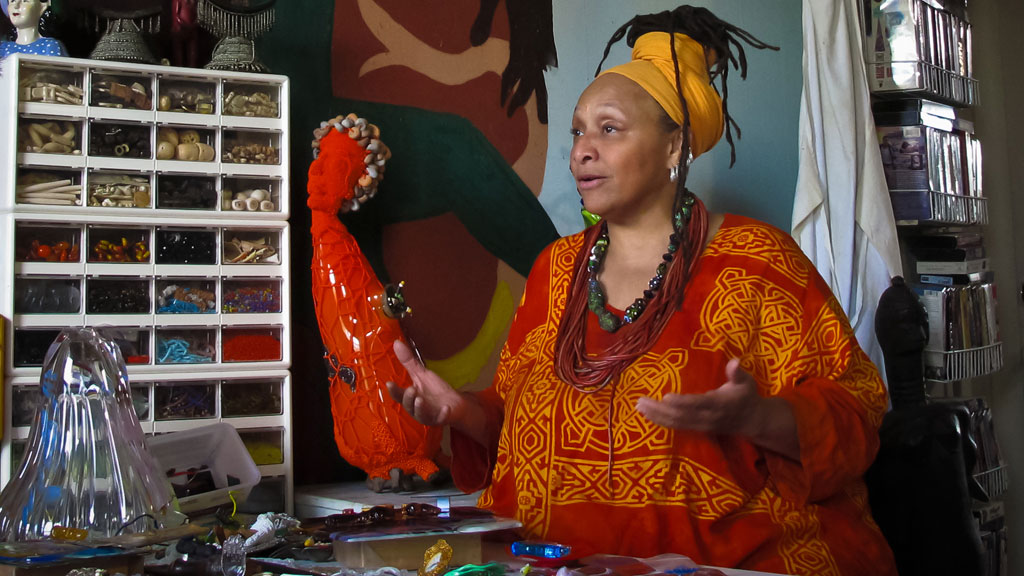
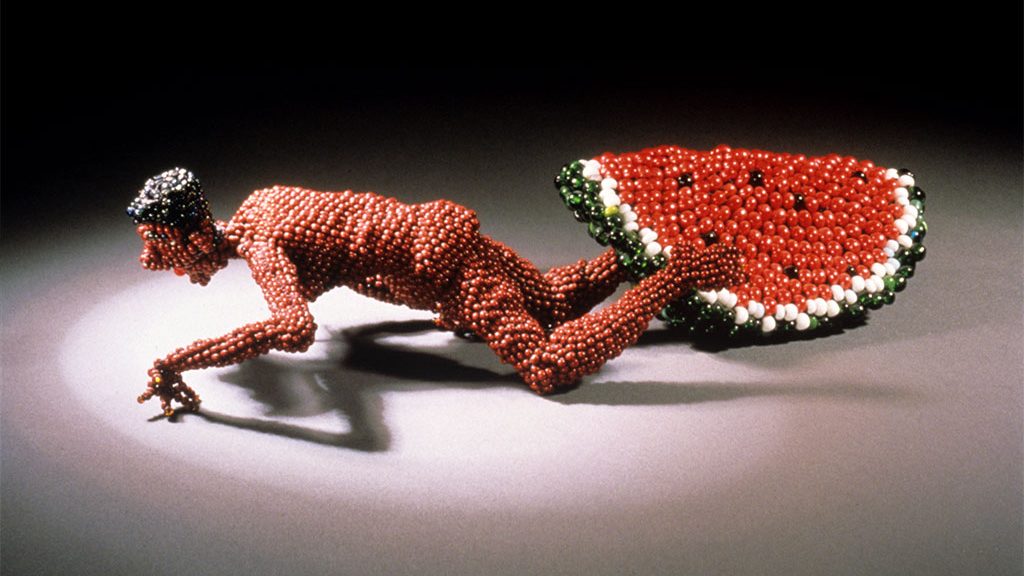
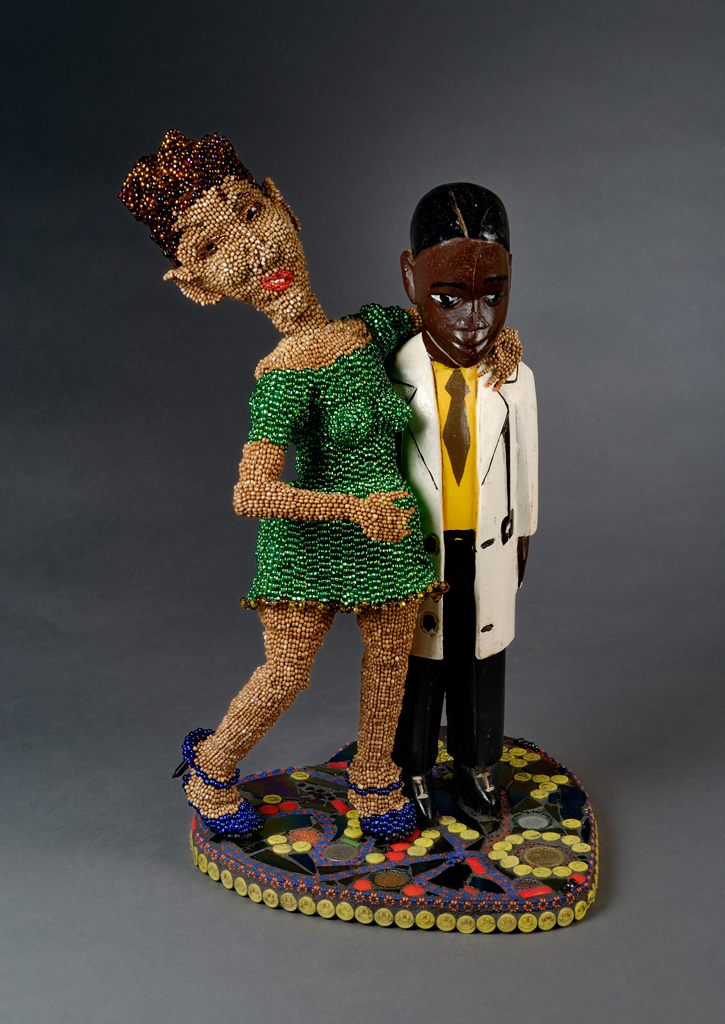
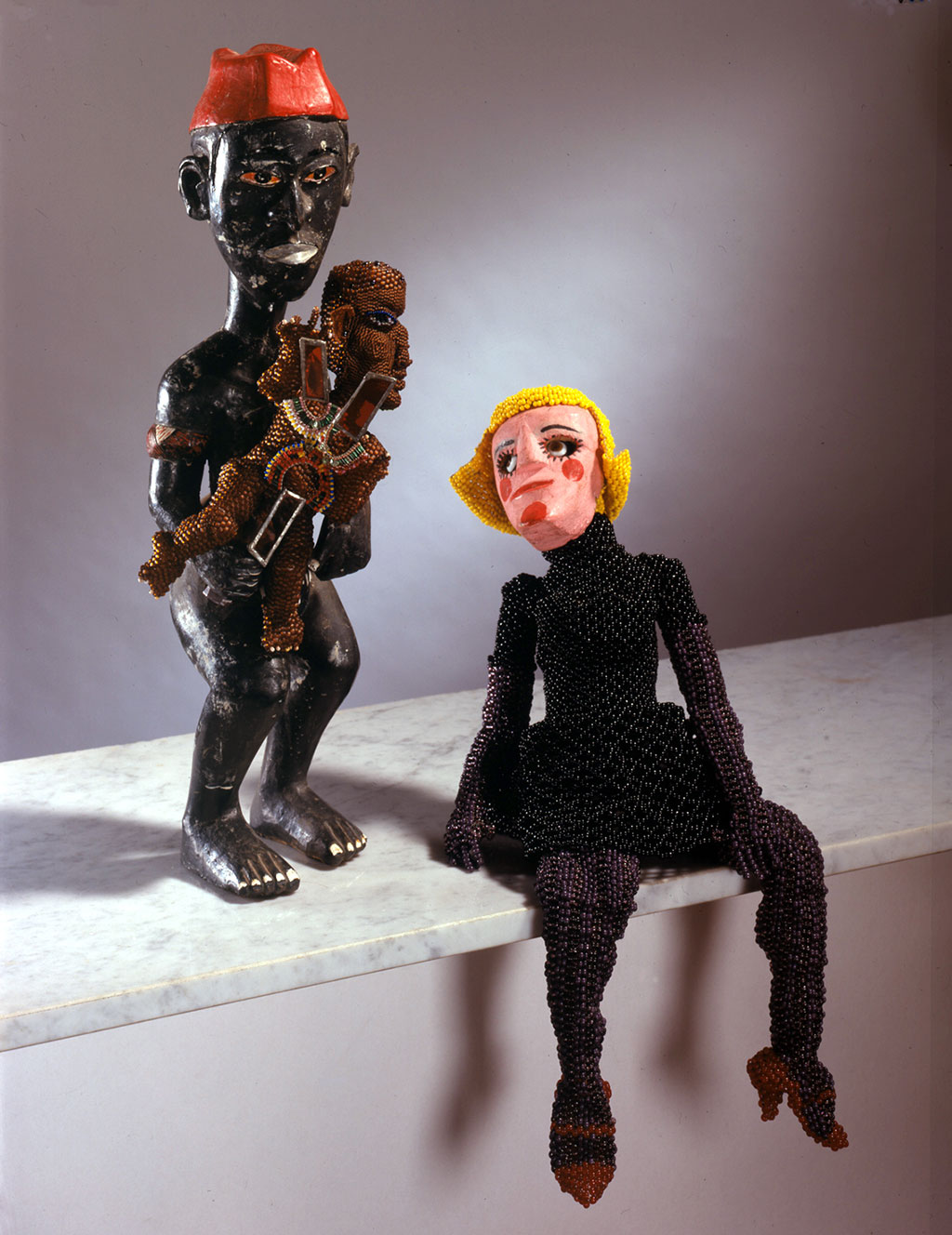
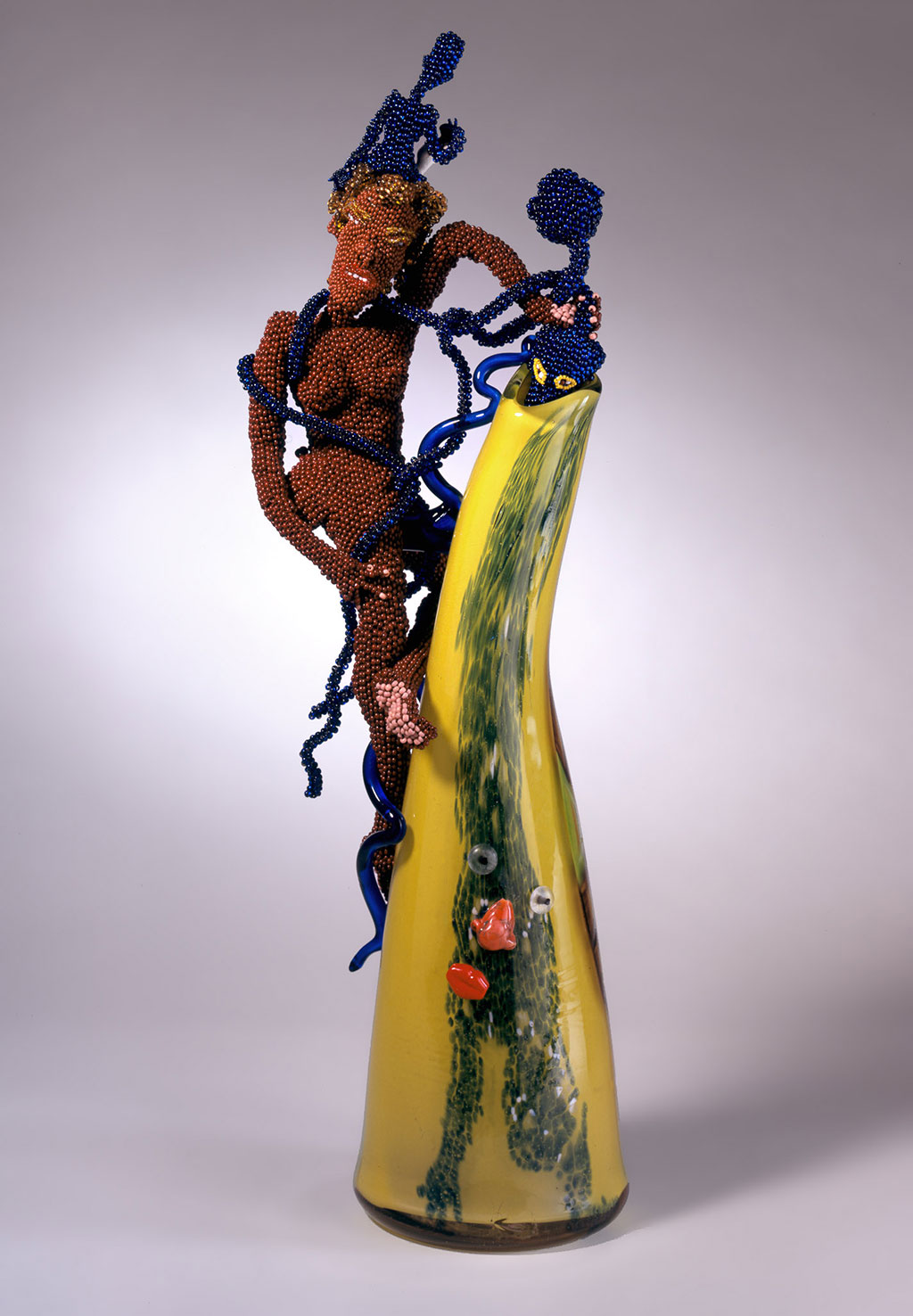


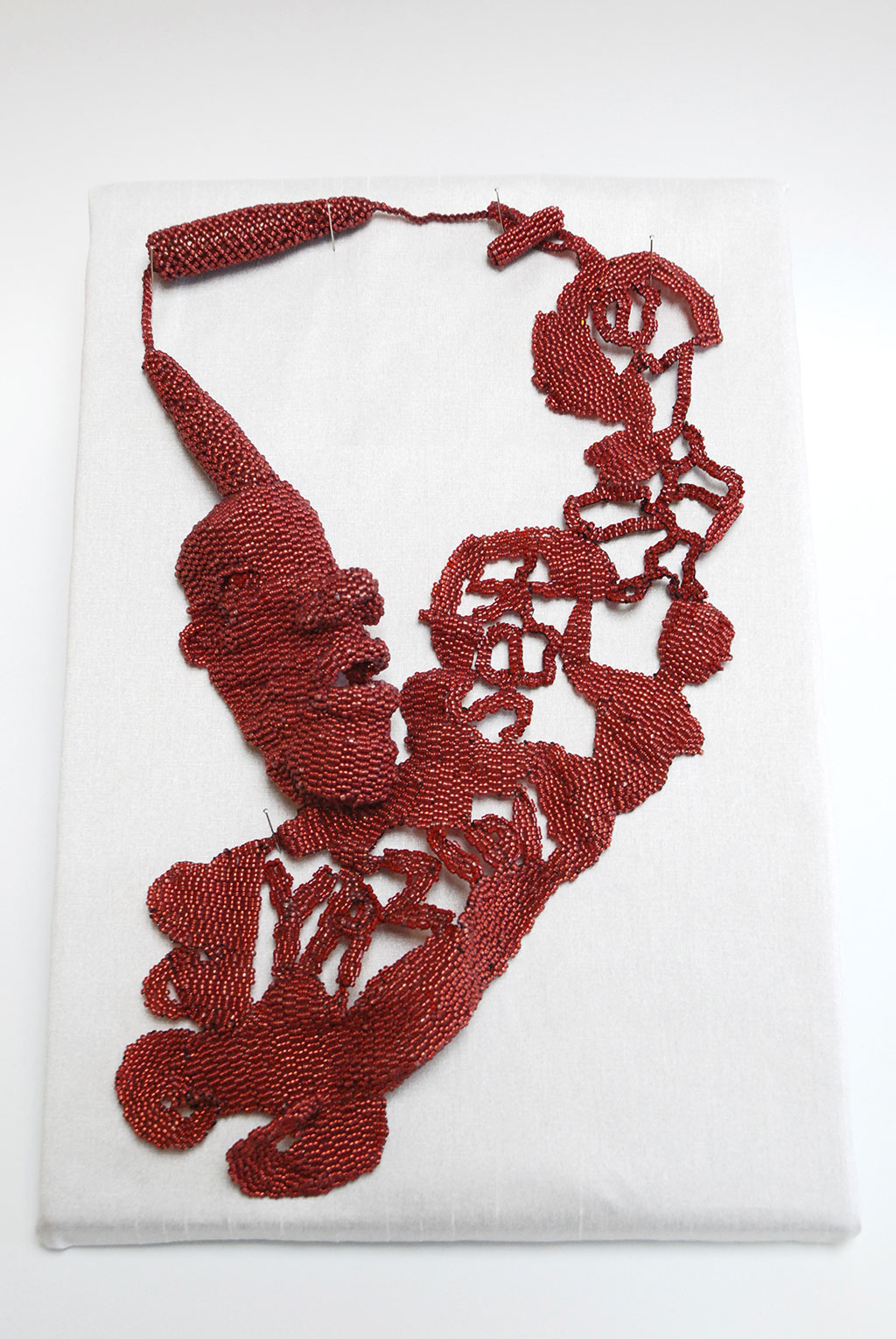
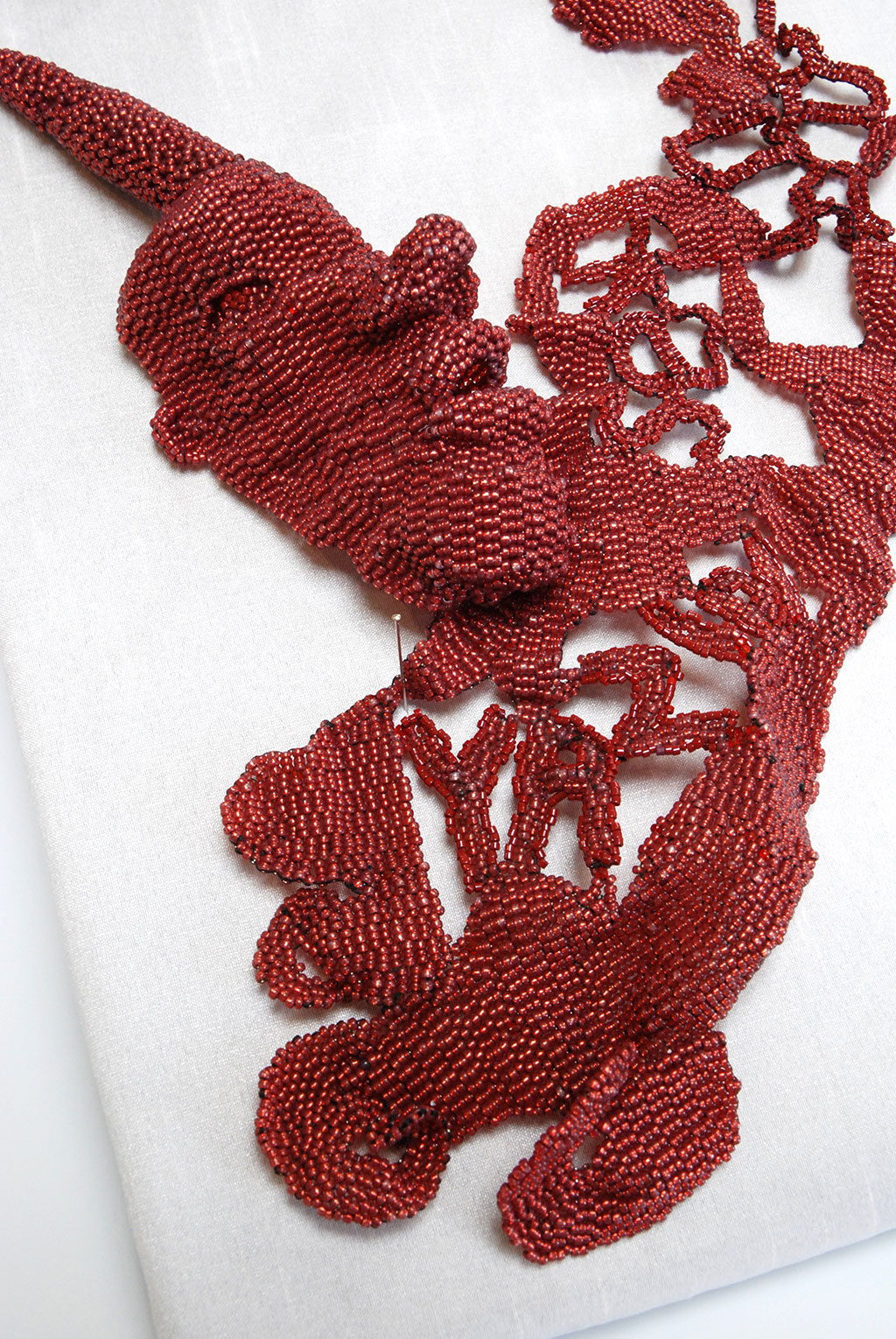
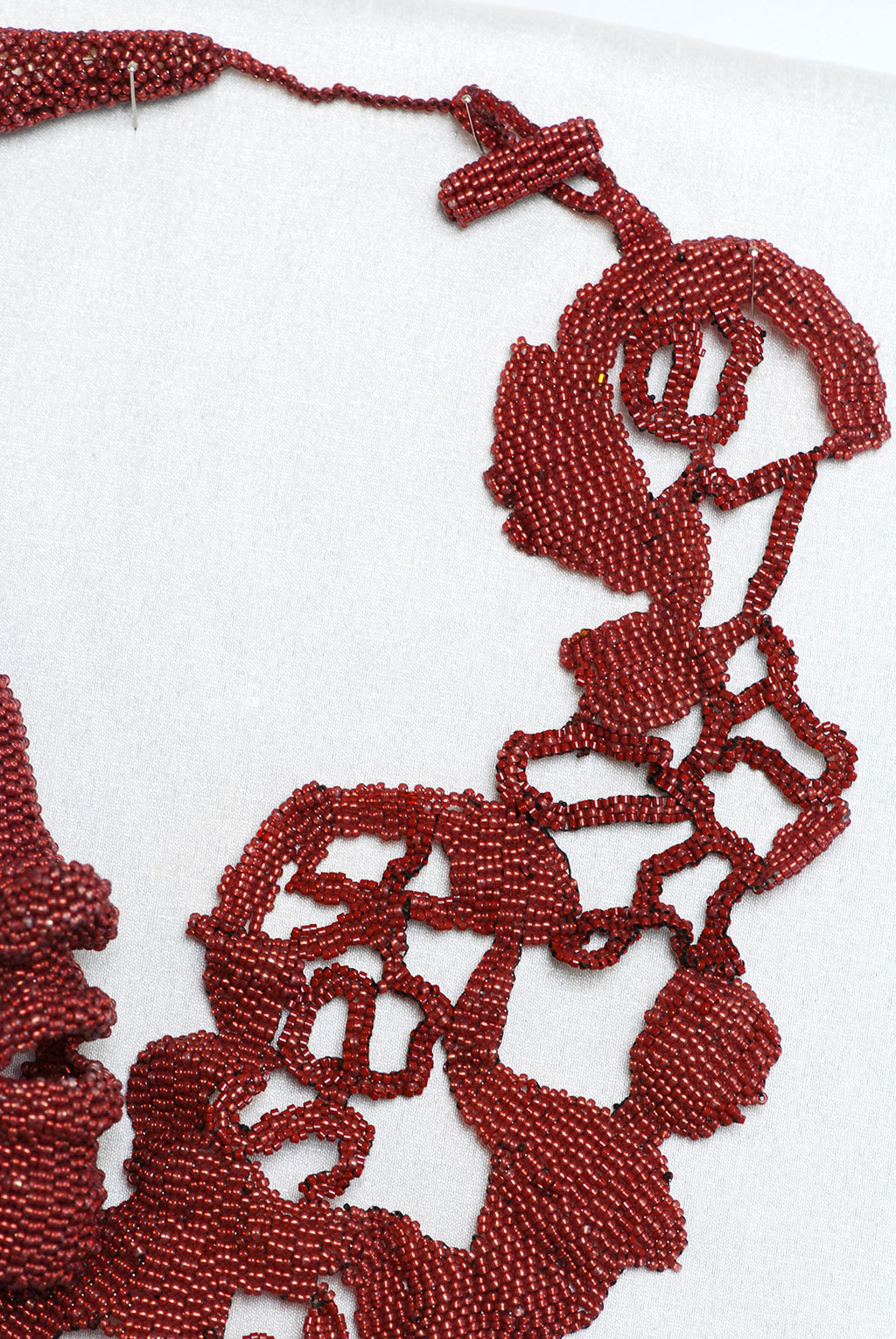



























Joyce J. Scott: Sharing Memories and Shaking Things Up
In this lesson, students will study the sculpted beadwork of artist Joyce J. Scott. Students will watch the MESSAGES segment featuring Scott. The class will examine how Scott draws viewers to her work by making her pieces beautiful, with the hope that viewers will then consider the serious issues of race, class, and gender discrimination presented within the pieces. Students will consider these issues through Scott’s work. Finally, students will determine a point of view and invent a piece with an attractive surface appeal and an underlying serious topic.
Download Education Guide & Worksheets
For me, it’s important to imbue the work with something that will resonate and follow somebody home…because I think art has the ability, if not to cure or heal, at least to enlighten (you), slap you in the head, wake you up.
– Joyce J. Scott
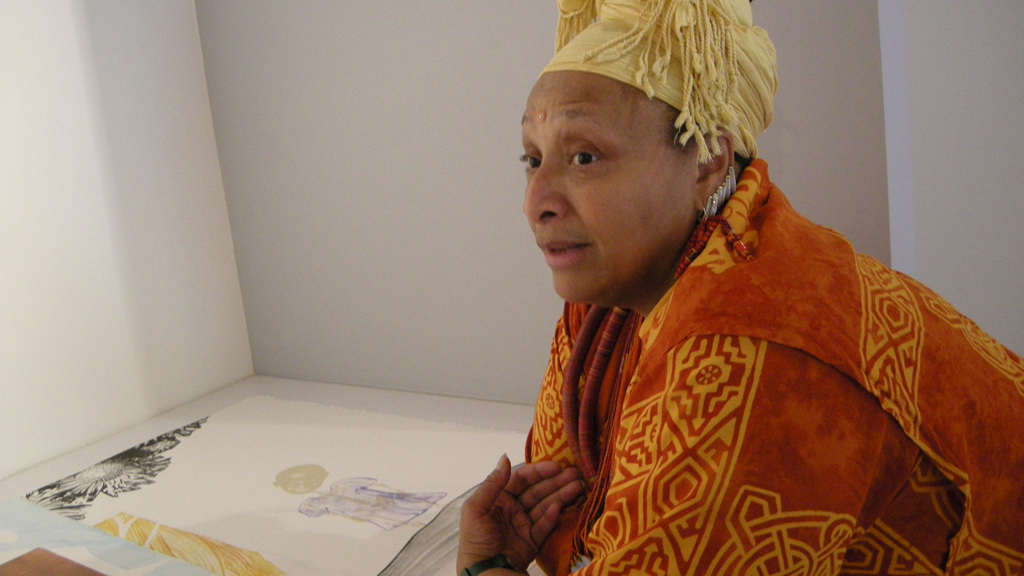
LESSON OVERVIEW
Grade Level: 8-12
Estimated Time: Three 45-min. class periods of research, discussion & planning, followed by four or more 45-minute studio periods
Background Information
Baltimore artist Joyce J. Scott was five years old when she began learning needlework from her artistic mother, Elizabeth Talford Scott. Elizabeth Talford Scott used needlework out of necessity for mending worn clothes and linens. She turned the mending into an opportunity to make the items beautiful with decorative accents including crochet and embroidery. In addition to the knowledge of traditional needlework techniques, Joyce J. Scott learned from her mother the importance of memories and family history through story telling. Much of this history includes accounts of discrimination of African Americans in the days before the Civil Rights Act of 1964. Scott uses the beauty of needlework to draw viewers to her art, where they then may notice the underlying content of serious issues of racial prejudice, class, and gender discrimination. Scott believes that living as an artist in Baltimore, Maryland, is integral to her continued engagement with issues of race within a community.
Key Concepts
- People are attracted to beautiful objects.
- Artists can invent ways to make difficult topics accessible and approachable.
- Traditional craft materials and craft techniques can be used to express political content.
- Artists get ideas from memories, family stories, and by paying attention to the world around them.
Critical Questions
- How might an artist draw viewers’ attention to an artwork?
- In what ways might an artist convey ideas about important social issues?
- How can an artwork change a person’s opinion?
Objectives
Students will:
- Become familiar with the form and content of Joyce J. Scott’s work.
- Consider issues of race, class, and gender discrimination and develop a point of view about one of these or other social issues.
- Imitate or invent methods of creating richly embellished surfaces.
- Identify an issue or idea, and present it in a format designed to engage a viewer.
Vocabulary
Discrimination, prejudice, race, class, gender, embellish, juxtaposition, irony
Interdisciplinary Connection
- History/Social Studies: Studying Scott’s work could align with a study of the struggles of the Civil Rights movement in America.
- Language Arts: The activity in which students are encouraged to identify a point of view and develop justification for it could be extended within a Language Arts context.
National Standards for Visual Arts Education
Content Standard:
4. Understanding the visual arts in relation to history and cultures.
5. Reflecting upon and assessing the characteristics and merits of their work and the work of others.
Resources & Materials for Teaching
Resources
- Craft in America DVD: MESSAGES. Also viewable online at www.craftinamerica.org/episode/messages
- Craft in America website, www.craftinamerica.org
- Goya Contemporary gallery features Joyce J. Scott’s work: goyacontemporary.com
- Mobilia Gallery also features Joyce J. Scott’s work: www.mobilia-gallery.com
- The Baltimore Museum of Art has a teacher packet featuring Joyce J. Scott, along with slides, available from the Educator’s Resources section of the BMA website.
- A local bead artist could be brought in to demonstrate beading techniques to students. A store that sells beads may be willing to share a teaching experience with students.
- The National Archives has an explanation of the Civil Rights Act of 1964 and copies of the original documents.
• The photographs of Gordon Parks could also be used to depict the era before the Civil Rights Act of 1964. Some can be found in the collections of the Library of Congress.
Worksheets
• Considering Discrimination
• Embellished Issues
Materials for Studio Production
Note: Joyce J. Scott uses bead-weaving techniques to create her sculptural pieces. Other embellishment materials can be used to create an attractive, eye-catching surface treatment on an artwork with an issue-based underlying content. The following materials can be collected to that end, and students given the opportunity to choose:
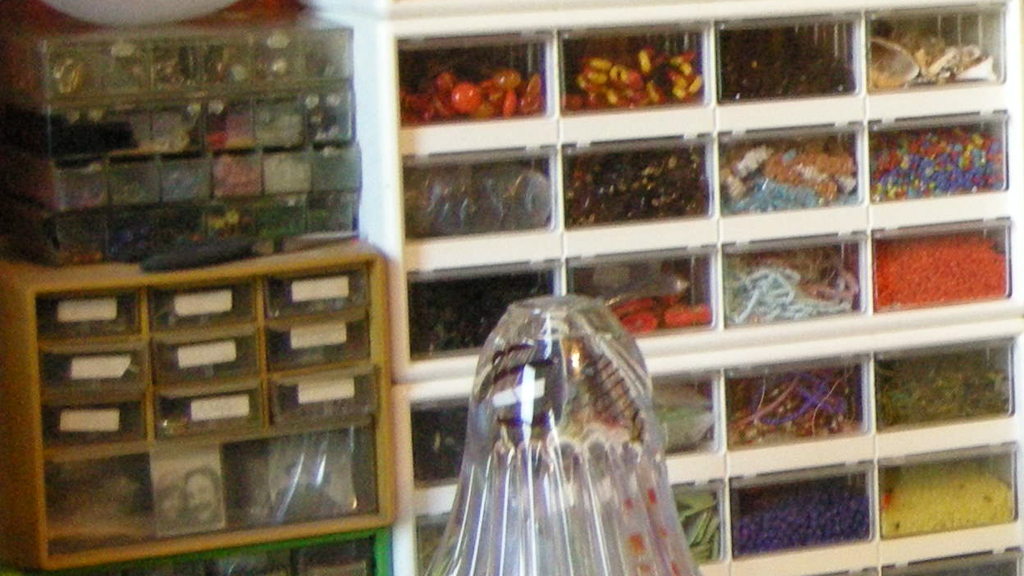
Materials for Studio Beadwork
- Beading needles
- Thread
- Glass or plastic seed beads
- Embroidery floss and embroidery needles
- Glue
Materials for Studio Embellishment
Encourage students to collect items such as the following:
- Seashells, beads of all kinds, old jewelry, buttons, yarns, strings and cords, artificial flowers, hardware pieces, foil and metallic packaging and wrappers, sequins, old ornaments, mosaic-style shards of glazed pottery, glitter, etc.
- Items to embellish or cover: ready-made discarded items, knick-knacks and castoffs, armatures made of crumpled and wrapped paper and tape, socks stuffed with paper, fiberfill or rags
Through her work, Joyce J. Scott opens a space for viewers of her artworks to consider difficult issues of racial prejudice. This lesson allows both teacher and student to open a similar space in the classroom, and to then identify an issue and create a work to present the issue for others to consider.
As long as we refuse to talk about race, we’re going to have a lot of problems.
– Joyce J. Scott

Investigation (one 45 minute class period)
Before Viewing
- Introduce students to Joyce J. Scott and the topics she represents in her work.
- Explain to students that Scott depicts examples of racial stereotypes, discrimination and issues of race, class, gender, violence and sexuality. She features these topics in her work in the hope that people will talk about them.
- Share the quote, above, with students.
View the 14 min. Joyce J. Scott segment of the Craft in America MESSAGES episode on the DVD or online at www.craftinamerica.org/short/joyce-j-scott-segment
After viewing
- Ask for student reactions, and begin a discussion of Scott’s work. Why are these issues sometimes hard to talk about and think about? (The issues are not happy ones, and may make us feel sad. These issues may contrast with our desire to be proud of our country. If we consider ways in which we, or our family members, have been treated, we may feel anger, and that can be uncomfortable.)
- How does Scott address the fact that people often want to ignore these serious issues? (Scott insists that we need to confront these issues so that we may resolve them.)
- How does she draw people into her work? (She attracts them to her work by making it so beautiful; people can’t resist looking more closely.)
- It may be helpful to discuss the stereotype within Man Eating Watermelon in which Joyce J. Scott depicts a man actually being eaten by a slice of watermelon, subverting the stereotype of African Americans eating watermelon as depicted in racist comics and advertisements found in history.
- Also, a discussion of No Mommy Me can consider the necessity, continuing today, for some women to earn income by caring for other people’s children, thus limiting the time they can spend with their own children.
- Issues of class distinction and prejudice between members of the same racial group are described in Look Mom – A Doctor.

Students may be more comfortable addressing these issues or sharing their opinions in the following activity.
Studio Production (one 45 minute class period)
To help students clarify their own ideas, have them complete the worksheet, Joyce J. Scott: Considering Discrimination. Circulate while they work to be available for clarification and conversation. The worksheet includes three statements about discrimination in the areas of race, class and gender. Students decide whether they agree with the statements or not, and give evidence for their responses. Three more questions ask about each of these issues within their school.
You may want to discuss the worksheet as a class. Each of the questions will lead to varied thoughts, emotions and conversations that may continue throughout the project, as students consider their own ideas and experiences. Also, it may be helpful for students who disagree to practice respectful discussion and disagreement, a reflection of the democratic process.
Later, individual discussions between student and teacher, or small groups, including defining ideas and developing projects, can be encouraging and useful. While Joyce J. Scott’s work, including that shown in Craft in America: MESSAGES, is often about issues of racial prejudice, she addresses class and gender discrimination as well. Opening up the discussion to include these issues gives students more opportunities for finding a choice for their own artwork.
Plan of Attraction (one 45 minute classes)
Have students work on the second worksheet, “Embellished Issues.” This activity will help generate ideas for their artwork by first identifying an issue and then thinking about how to present it. Circulate while students work to be available for idea generating and conversation.
Offer general ideas and examples. Irony is used in Man Eating Watermelon. Juxtaposition is used for pathos in No Mommy Me, where both children appear in the same space.
Encourage students to examine the materials available, and to think about other materials and objects they might use to create their work. Remind students of the need to draw viewers to their work. What will make a viewer want to inspect your work closely? Also, offer other avenues for students’ expression. If students are frustrated with their choices, perhaps they have additional issues of personal relevance that could yield a meaningful artwork.
Embellishment
After planning, students will spend studio time creating their pieces. Beading techniques, embroidery, and other needlework may be demonstrated. Beads can be glued to a surface; they can also be strung on long pieces of thread and wrapped around an object, gluing to hold in place. Gluing and fastening methods suitable for various materials can be demonstrated.
Students may choose to create a sculpted figure or object by stuffing socks with fiberfill or rags. Such a stuffed tube can then be sculpted: a head may be formed by tying string tightly around the “neck,” a needle with a long, sturdy thread can be stitched through the sock and pulled to create dimples, creases and indentations for sculptural effect. Soft surfaces, including pieces of fabric, pillows, or the stuffed sock sculptures, may be covered with beads in the following manner
- For beading, thread needle, bring thread ends together and knot at ends of lengths (thus doubling the strand).
- Passing the thread over an old wax candle can prevent the thread from tangling during stitching.
- Knot the thread on the back of the fabric or bury it within the stuffed sculpture by pulling tightly so the knot pops into the stuffing, then bring the needle out to the surface.
- Thread several beads- from one to seven works well- and take a stitch the total length of the stacked, threaded beads.
- Pull the thread gently snug to create one section of sewn beads.
- Continue stitching, placing lines of beads close together to create a dense, full surface of beads.
- Fasten off thread and add new thread as needed. Embroidery floss for embroidered stitches may be handled in the same manner as the beading thread.
- Separate the floss into two or three-strand sections for use, or use all six of the plies together for a thick thread.
- Knot at one end, or bring ends together and knot if thread is to be used doubled. Outline stitch looks like small dashes and is used to outlinedesigns. Other easy stitches include satin stitch, backstitch and chain stitch. These stitches are found in any embroidery or sewing book, as well as on line. As students work, encourage in process critiques to help focus the work.
Reflection
Students should create an artist’s statement, with artwork title, artist’s name, and a short explanation of their piece on a card, tag, or typed page, to be presented with their work. Work should be displayed within the class, so that students have a chance to appreciate their own and each other’s work, and to engage with the artworks. Work could then be displayed to a larger school audience as well, perhaps in showcases. Artwork meant to start conversations and change minds needs an audience to achieve that goal.
Assessment
By examining the worksheets and the student’s artwork, and in discussions with the student throughout the project, it should be evident that the student can:
- • Explain the ideas in Joyce J. Scott’s work, and her method of presenting them.
- Have the ability to share, in speech or writing, ideas about racial, class, and gender discrimination.
- Imitate or invent methods of creating richly embellished surfaces.
- Identify an issue and present it in an artwork planned to attract and engage a viewer.
Additional Resources
A technique for beadwork is explained in the lesson, Teri Greeves: Beadworking and Belonging.
Extensions
Students may examine the work of the following artists on the Craft In America website, listed under Fiber:
- David Chatt creates sculptural works with glass beads.
- Teri Greeves depicts stories of her cultural past in contemporary versions of Kiowa beadwork.
- Consuelo Jimenez Underwood uses needlework and quilting to present issues faced by migrant agricultural workers.
Authors
The Educators’ Guide for MESSAGES was developed by art educators Amy Albert Bloom and Dolores E. Eaton under the direction of Dr. Marilyn Stewart, Professor of Art Education, Kutztown University of Pennsylvania, Kutztown, PA. Lead Author for Joyce J. Scott: Sharing Memories and Shaking Things Up is Amy Albert Bloom. May 2011.
Congratulations to Joyce J. Scott on winning a 2016 MacArthur Genius Grant
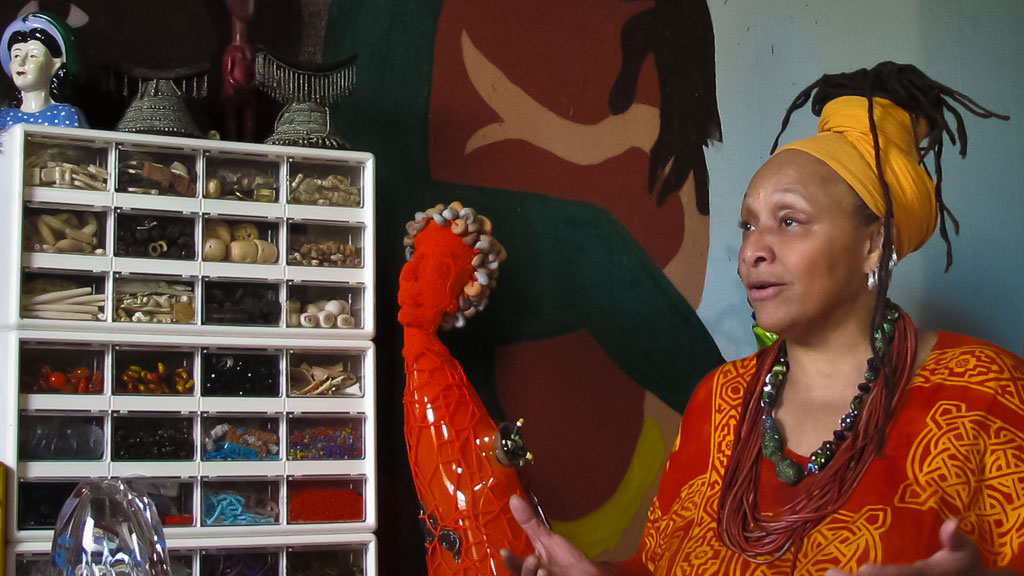
Jewelry Maker, Sculptor and Baltimore artist Joyce J. Scott was named a winner of the prestigious 2016 MacArthur Foundation Grant, one of the nation’s top prizes for artists and creative thinkers. Her work repositions craft by using beadwork as “a potent platform for commentary on social and political injustices…. Scott upends conceptions of beadwork and jewelry as domestic or merely for adornment by creating exquisitely crafted objects that reveal, upon closer examination, stark representations of racism and sexism and the violence they engender.” (MacArthur Foundation)

Joyce Scott’s work is proudly included in the Politically Speaking: New American Ideals in Contemporary Jewelry exhibition at the Craft in America Center. Yazidi Sex Slaves, necklace, 2016 by Scott is a beaded neckpiece which sheds light on the horrific rape, murder and enslavement of Yazidi women by ISIS in Iraq and Syria since 2014. (If you look closely, you can see the words Yazidi sex slave beaded in Scott’s necklace). Last week, human rights attorney Amal Clooney visited the UN with the hope of bringing attention to their plight. http://nbcnews.to/2daA3K8
Joyce J. Scott, and her distinct approach to sculptural beadwork as social criticism, is featured in the MESSAGES episode. In May, Scott was also awarded the significant Mary Sawyers Imboden Prize of the 2016 Baker Artist Awards, a prize given to artists who exemplify a mastery of craft, commitment to excellence, and a unique and compelling vision.
Notable exhibitions are “Joyce J. Scott: Kickin’ It with the Old Masters,” Baltimore Museum of Art (2000); “Joyce J. Scott: Truths and Visions,” Museum of Contemporary Art Cleveland (2015); “Glasstress” (group show) at Venice Biennale (2013); “Represent” (group show) at the Philadelphia Museum of Art (2015).
Some major institutions with Scott’s work are the New York’s Metropolitan Museum of Art and Museum of Arts and Design; the Philadelphia Museum of Art; the Museum of Fine Arts in Houston; in DC, The Smithsonian’s American Art Museum and recently the new National Museum of African American History and Culture has accessed a piece. Congratulations Joyce!
Susan Cummins on Joyce J. Scott (Joyce Scott)
Joyce J. Scott: The Electric, Connective, Boundary Buster
A talk by Susan Cummins
Saturday, March 24, 2018
This talk discusses the ways in which Joyce J. Scott has consistently broken the rules and made her own way as an artist of color in America. At the same time, she managed to propel forward the whole concept of craft and jewelry in particular as a medium that can carry content. Cummins shows a series of Scott’s more political and very powerful beaded necklaces and point out the ways in which she uses the language of beads for pieces packed with layers of meaning. Scott’s background as a daughter of an artist who quilted and her accomplishments in the visual world will be touched on to further give evidence of her boundary-busting ways.
About Susan Cummins:
Susan Cummins has been involved in numerous ways in the visual arts world over the last 40 years, from working in a pottery studio, doing street fairs, running a retail shop called the Fireworks and developing the Susan Cummins Gallery in Mill Valley, CA into a nationally recognized venue for regional art and contemporary art jewelry. Now she spends most of her time working with a private family charity called Rotasa and as a board member of Art Jewelry Forum and California College of the Arts.
…..
Opening Reception: The Circuitry of Joyce J. Scott (Joyce Scott) Feb 24, 4pm
Joyce J. Scott: Circuitry Opening Reception
Feb 24, 2018
4-6pm
Opening reception an exhibition that forms a dialogue between over ten of Joyce J. Scott’s exemplary beaded neck pieces placed in conversation with beaded, fiber, and mixed media works by Sonya Clark, Oletha DeVane, Eve France, William Rhodes, and Teresa Sullivan.
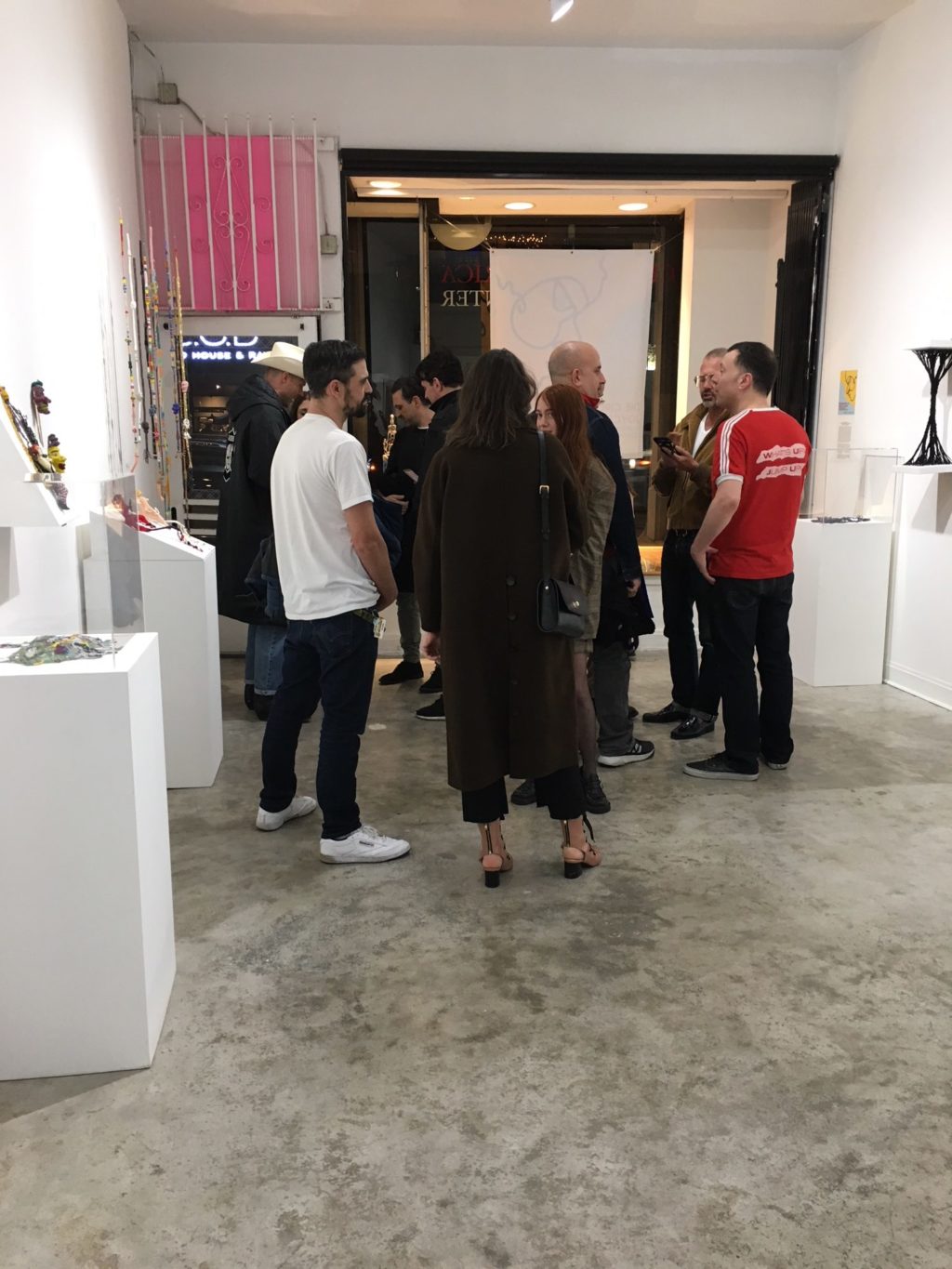
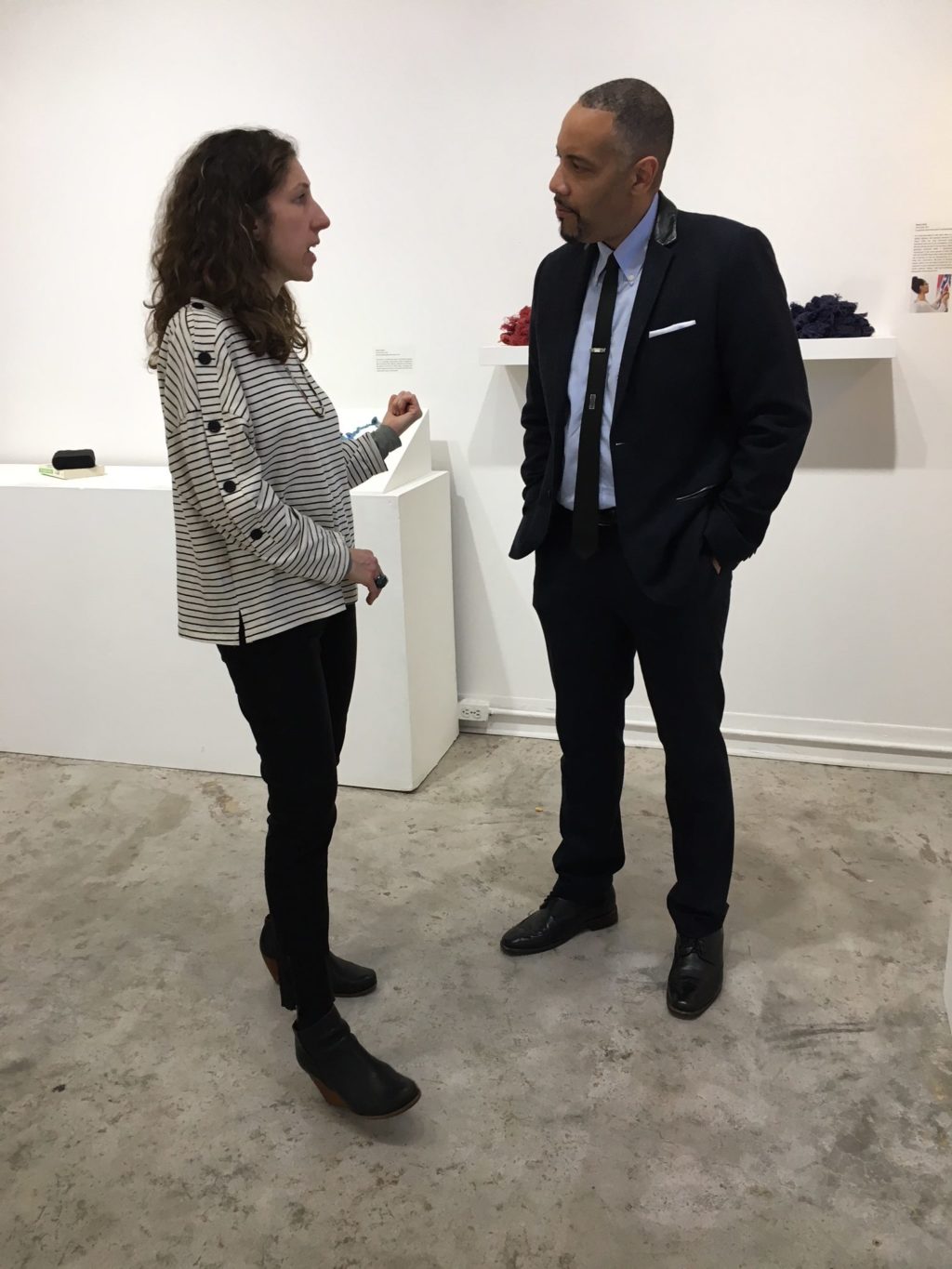
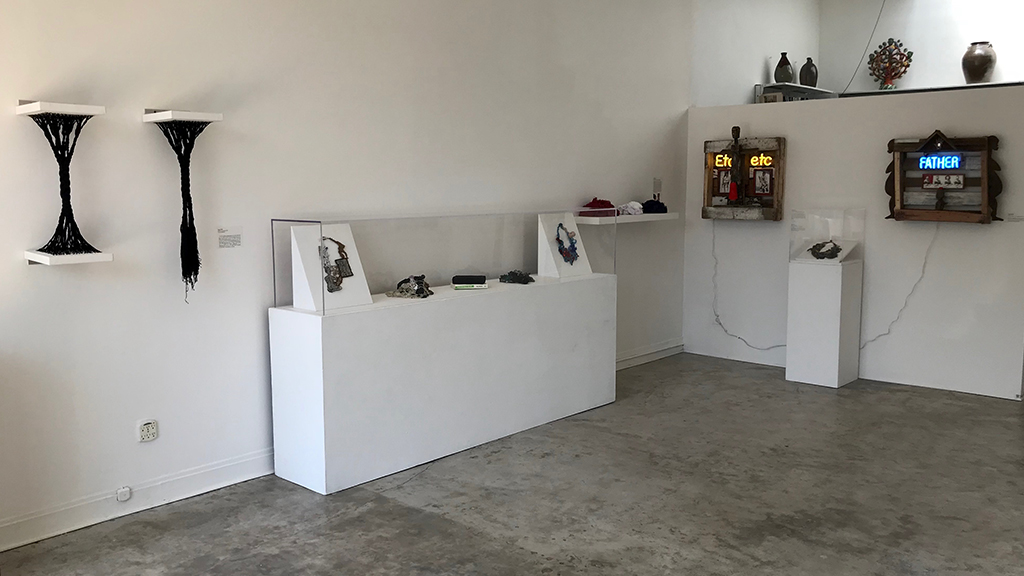
Dr. Leslie King Hammond on Joyce J. Scott (Joyce Scott)
Dr. Leslie King-Hammond on craft, culture, and bead artist Joyce J. Scott. Bonus video from the MESSAGES episode.
Joyce J. Scott (Joyce Scott) segment
MESSAGES episode Joyce J. Scott segment
George Ciscle explores the messages in Joyce J. Scott’s (Joyce Scott) work
Curator George Ciscle of the Baltimore Museum of Art, explores the messages embedded in various pieces of Joyce J. Scott’s work, including Man Eating Watermelon and No Mommy, Me from her “Mammy/Nanny” Series.
Amy Raehse & Joyce J. Scott (Joyce Scott) on her “Soul Erased” series
Artist Joyce J. Scott explores the meaning behind her series of prints “Soul Erased” with curator Amy Raehse.